Brain Slices
1/100
There's no tags or description
Looks like no tags are added yet.
Name | Mastery | Learn | Test | Matching | Spaced |
|---|
No study sessions yet.
101 Terms
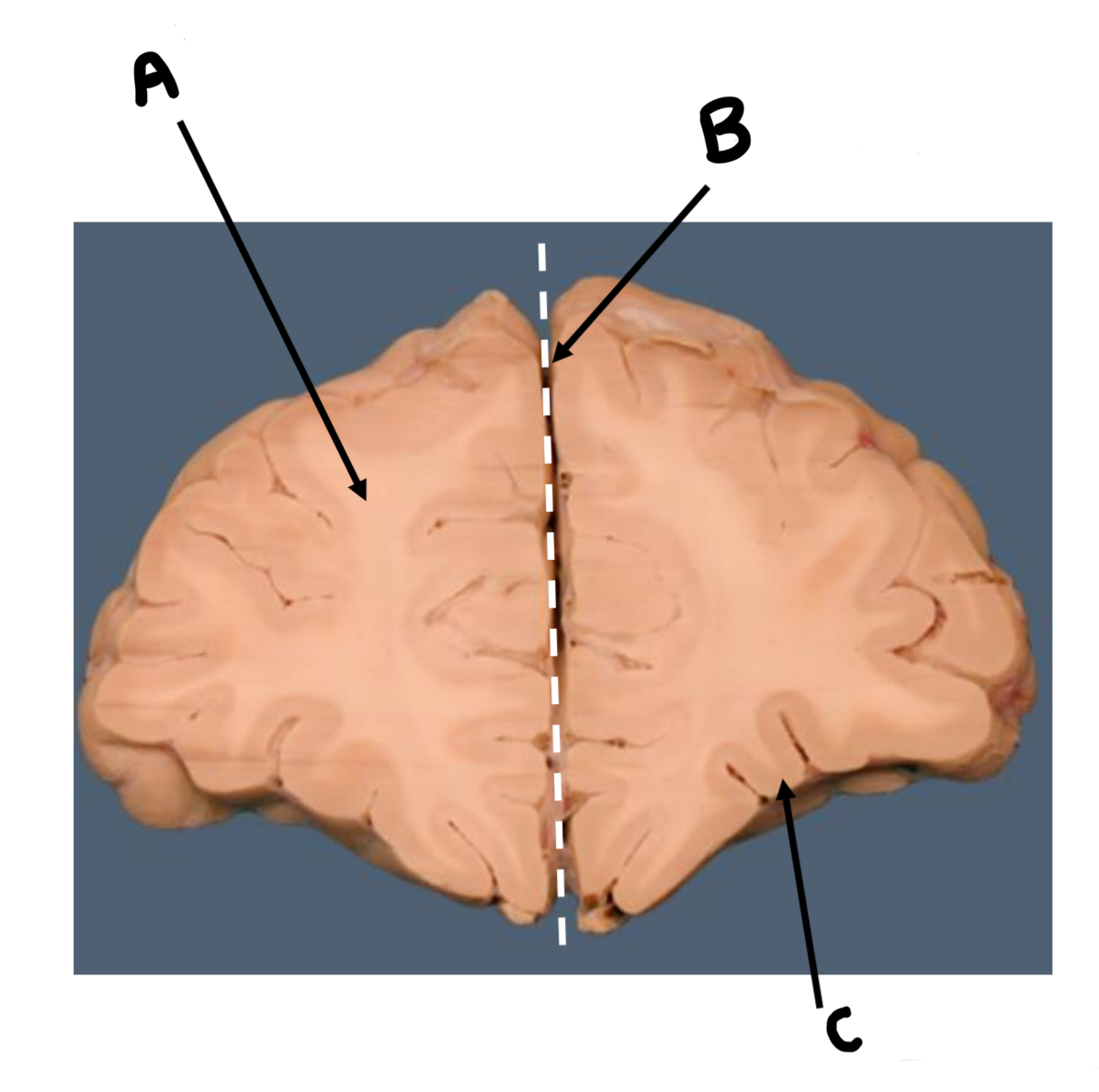
A
White matter (myelinated)
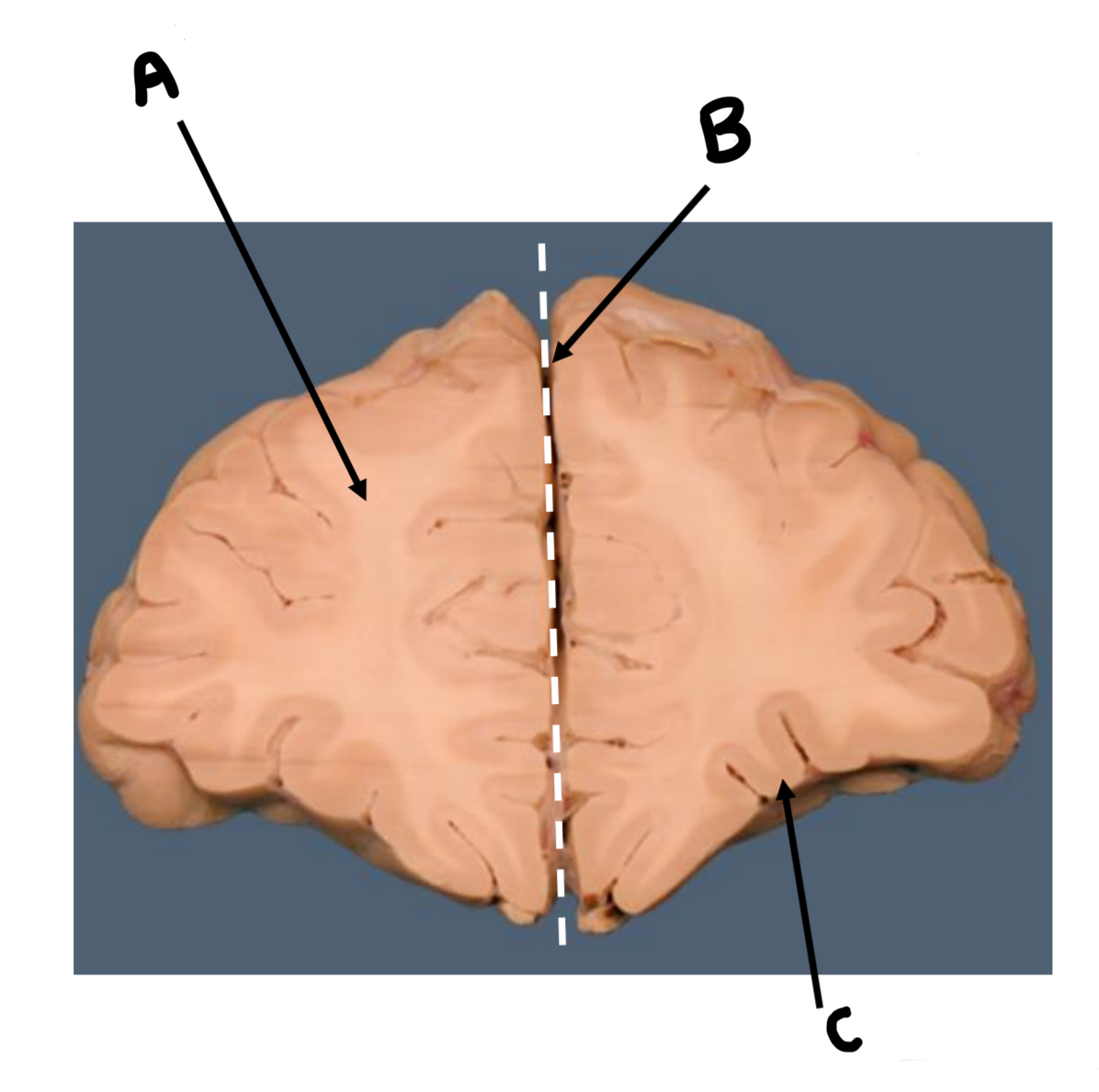
B
Longitudinal fissure (separates brain hemispheres)
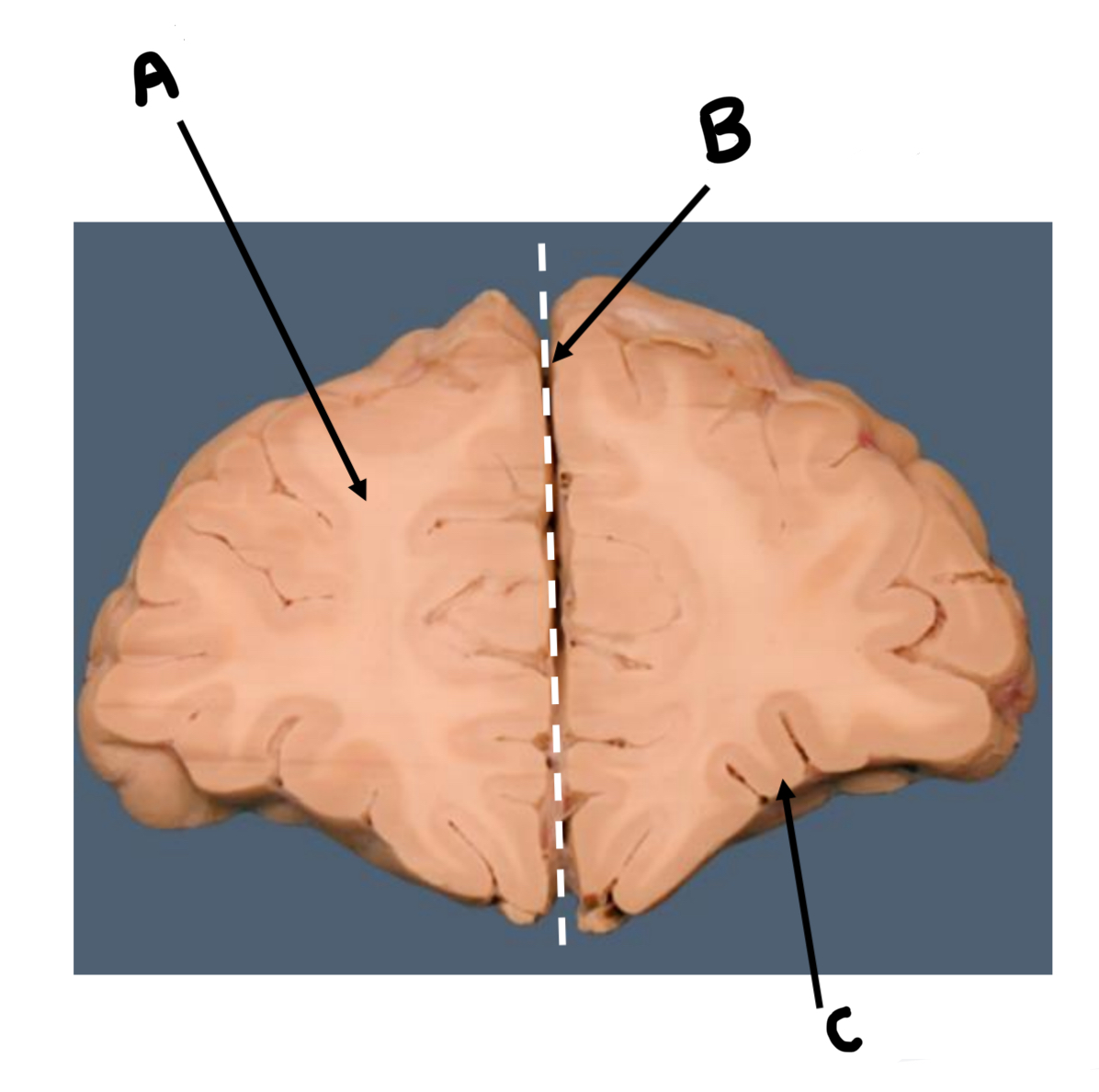
C
Gray matter (unmyelinated)
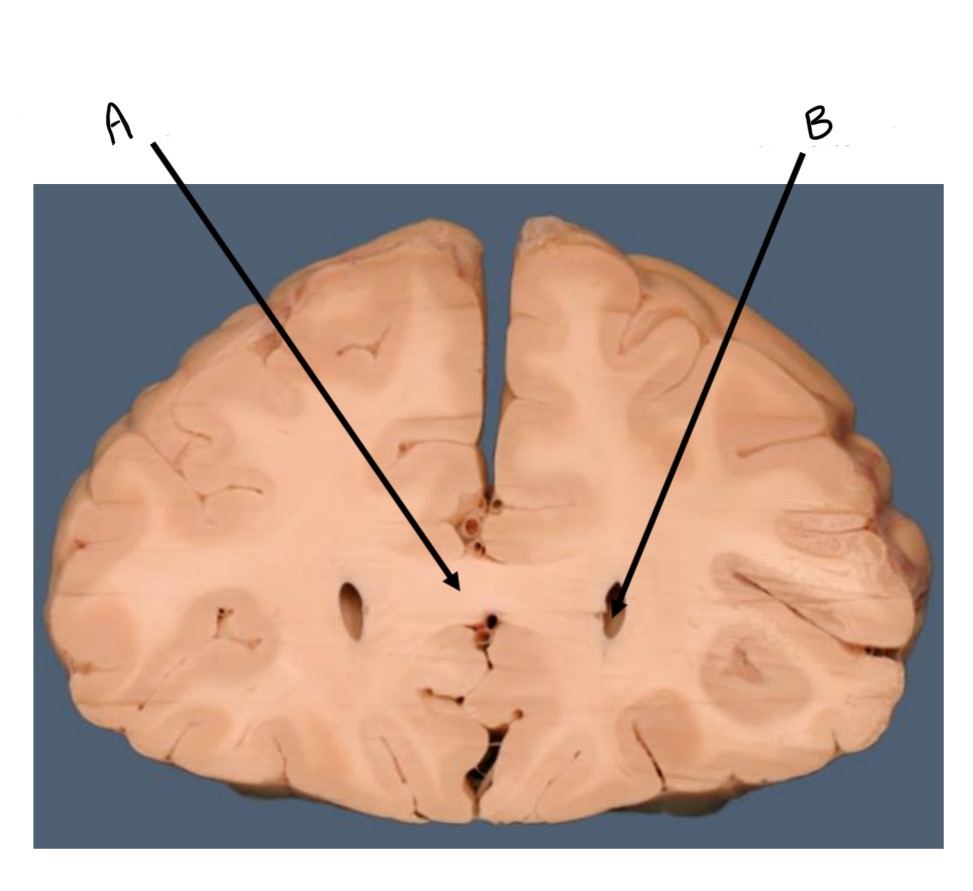
A
Corpus Callosum (communicates brains left and right hemispheres)
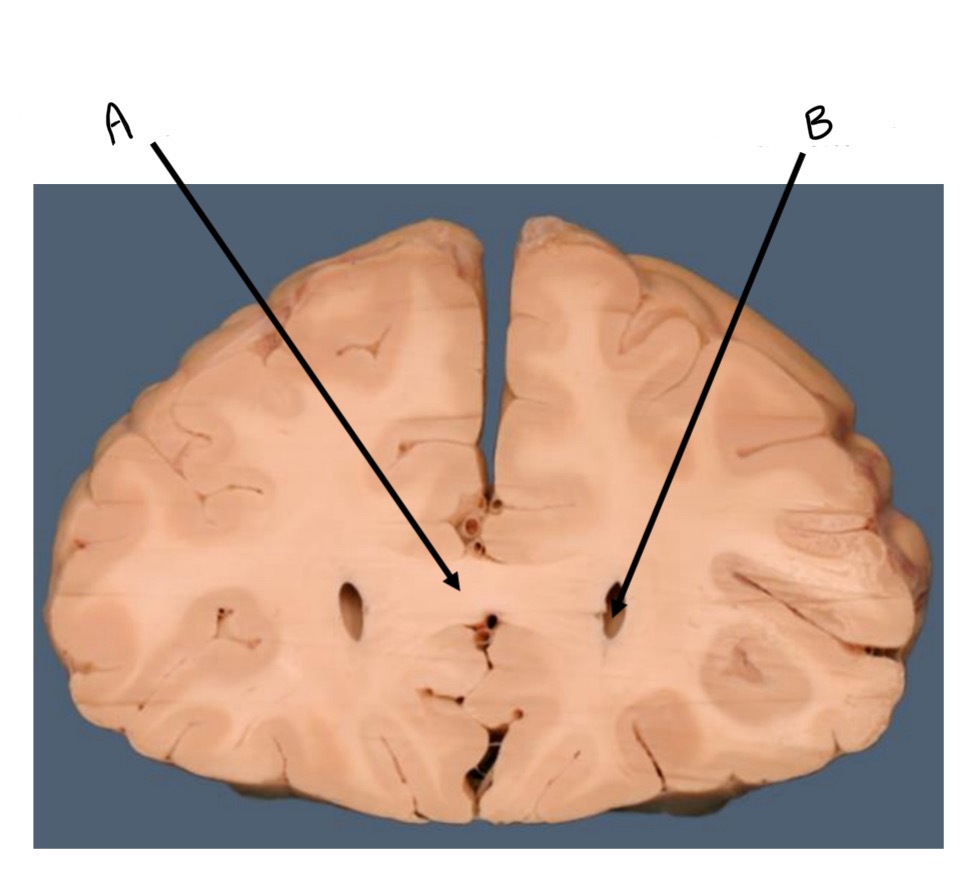
B
Anterior horn of Lateral Ventricle
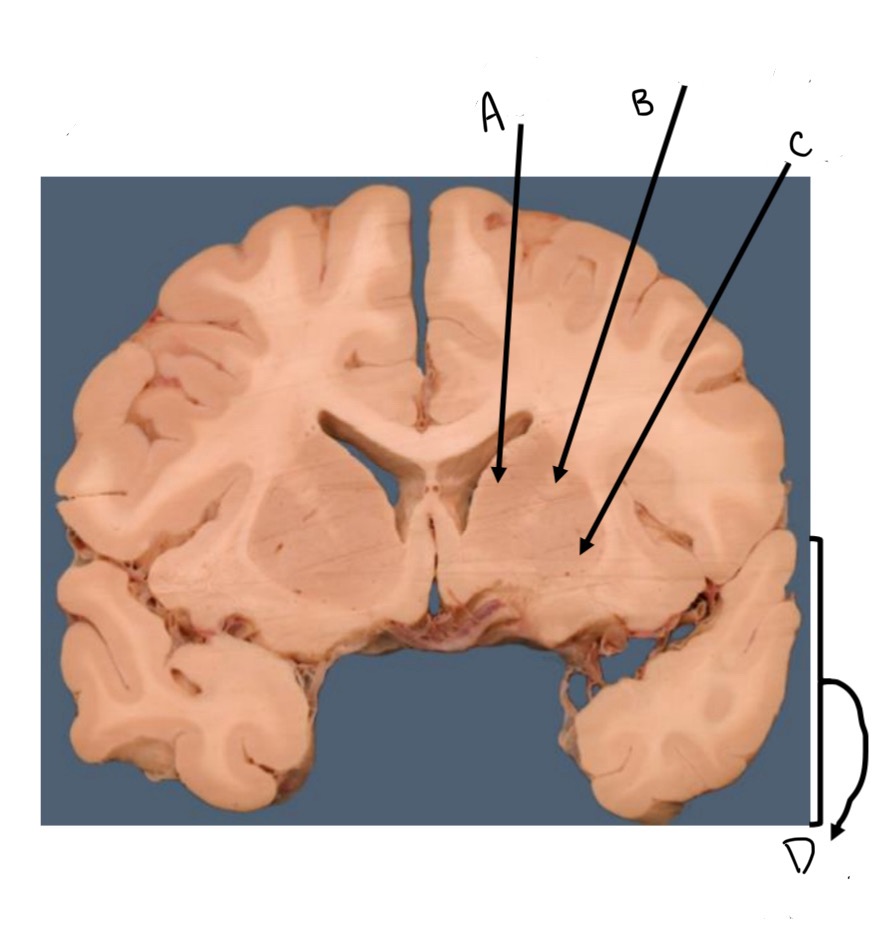
A
Caudate nucleus
- suppress worry signals

B
internal capsule

C
Putamen
- maternal behavior
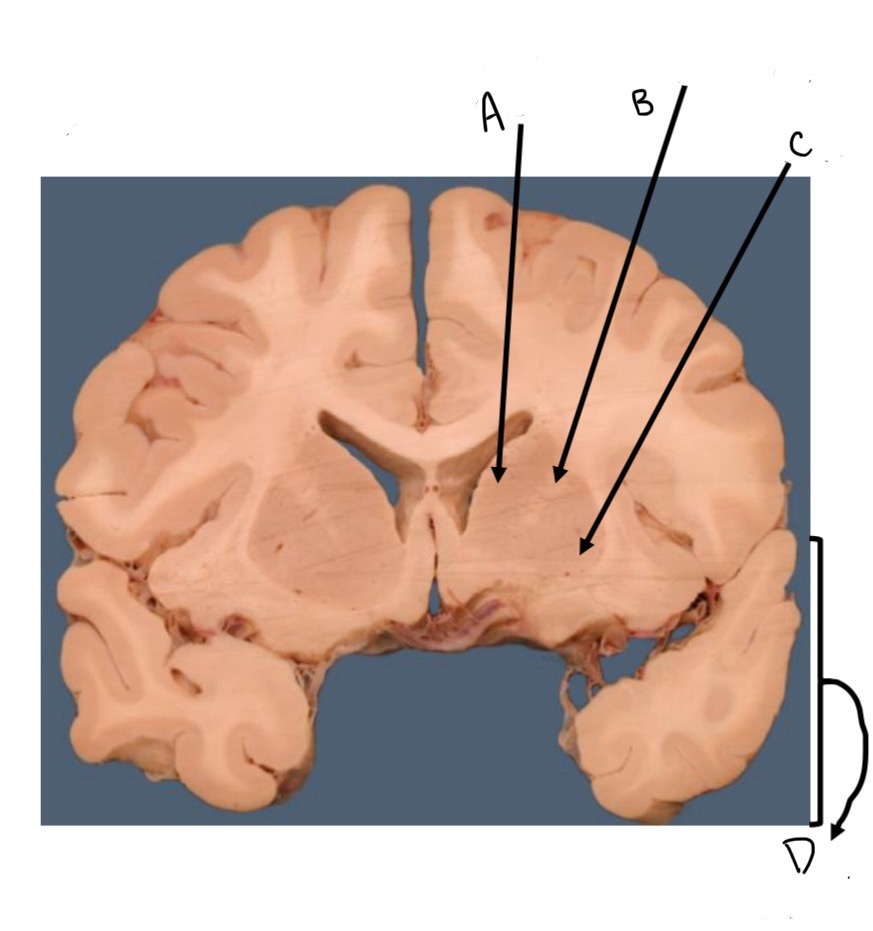
D
Temporal lobe
- comprehension lobe
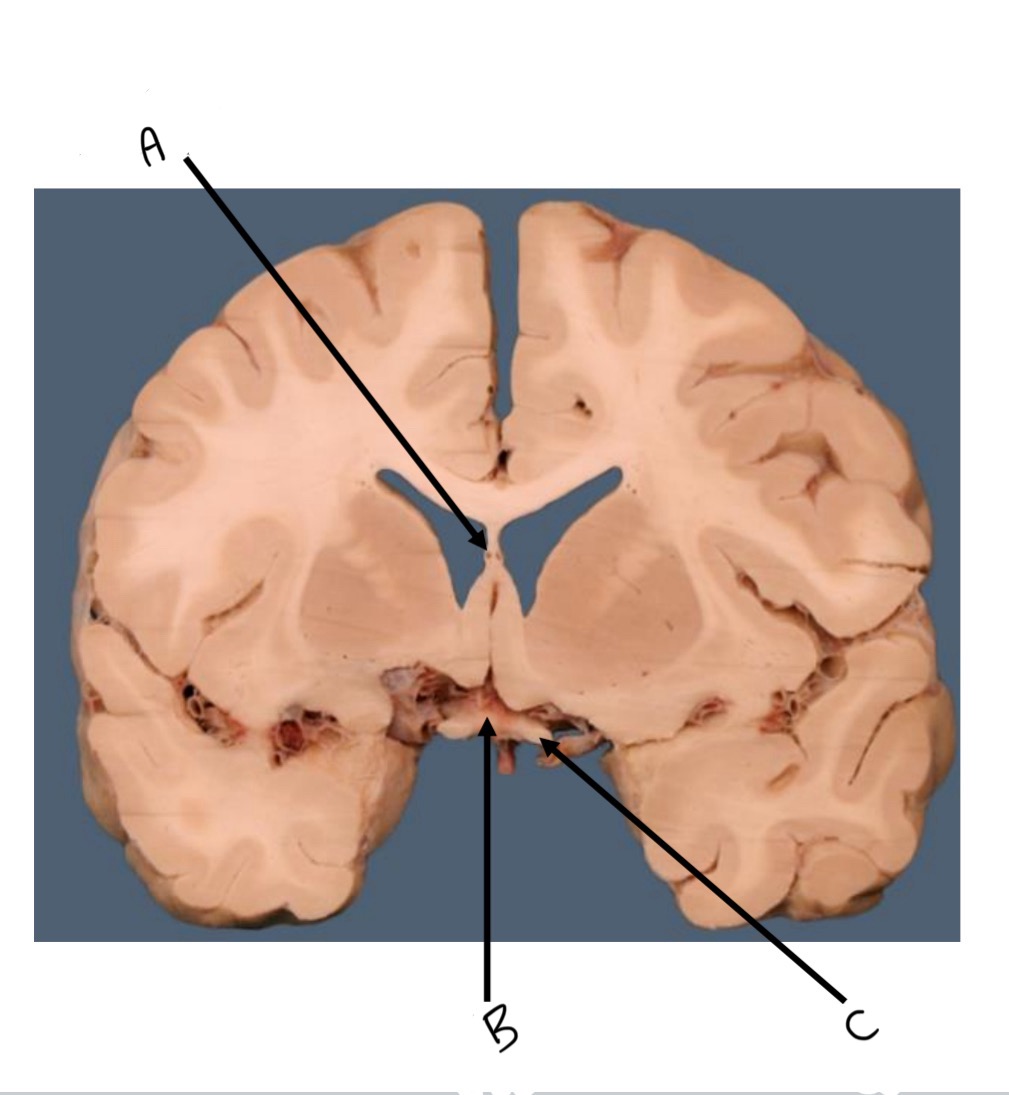
A
Septum pellucidum (separates lateral horns)
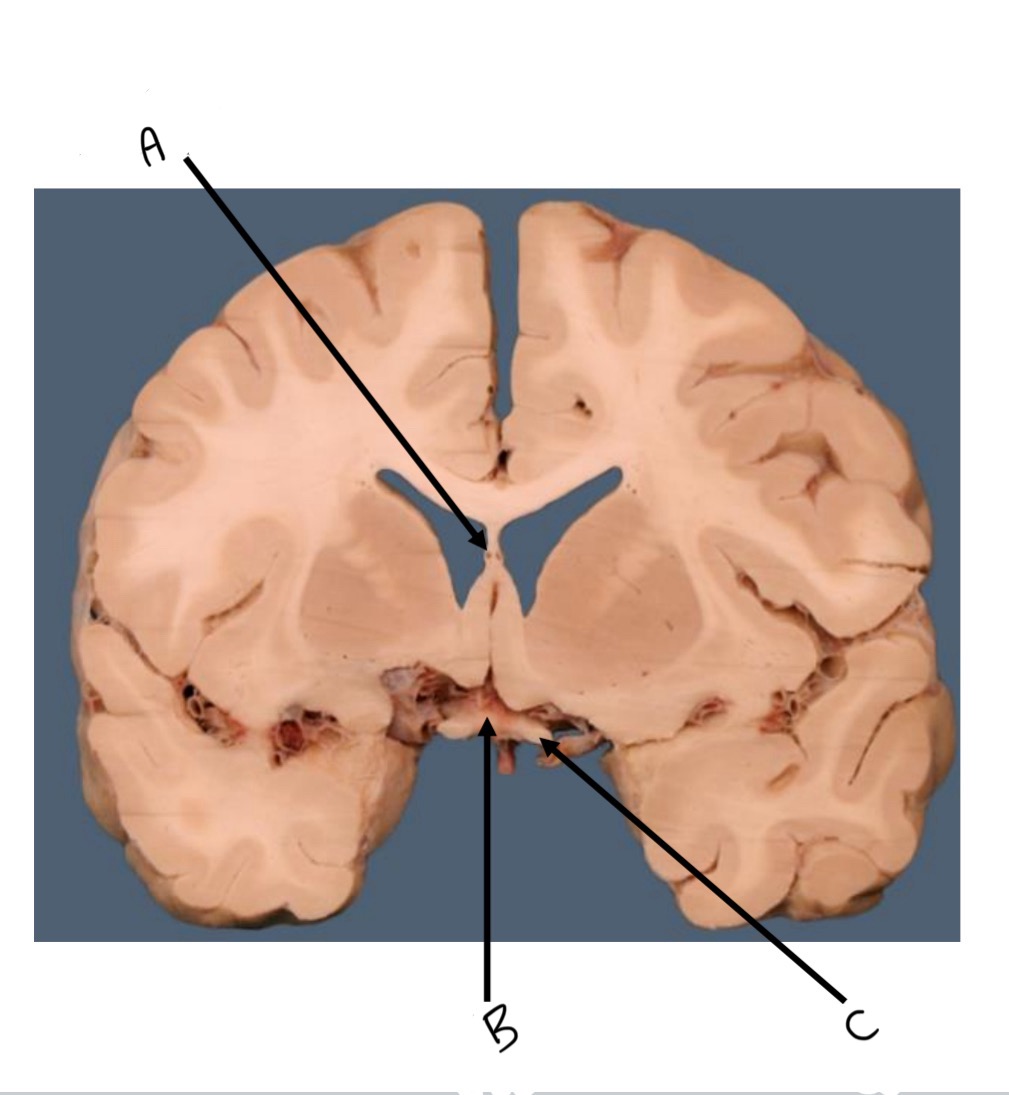
B
Optic tract
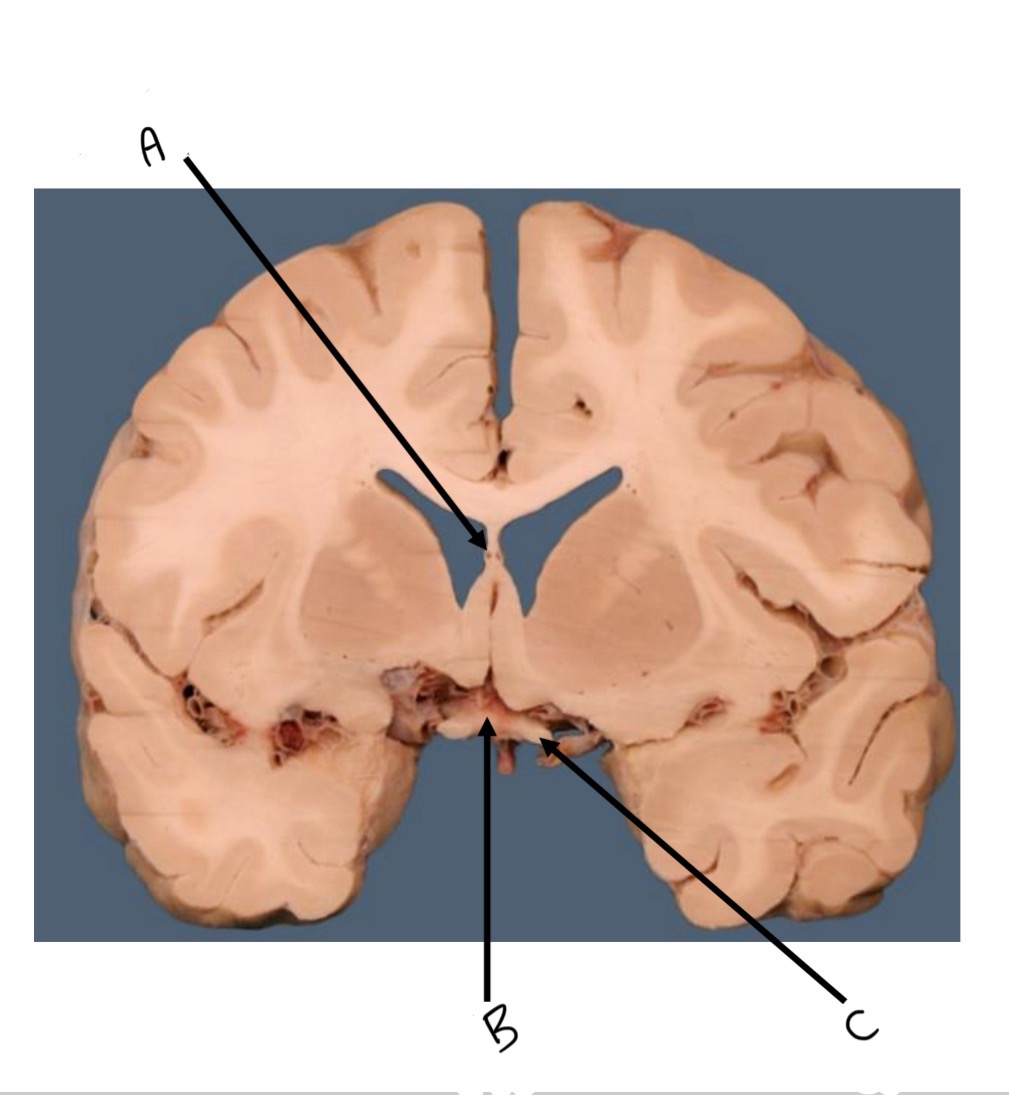
C
Optic nerve
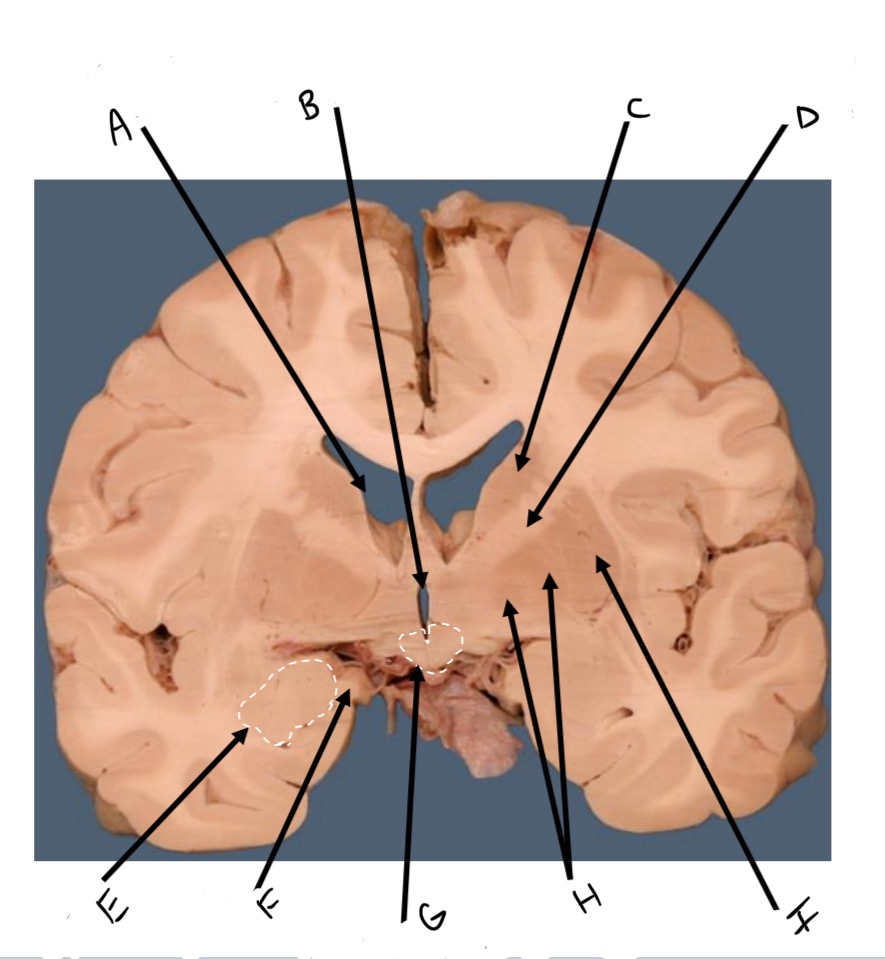
A
Lateral ventricle
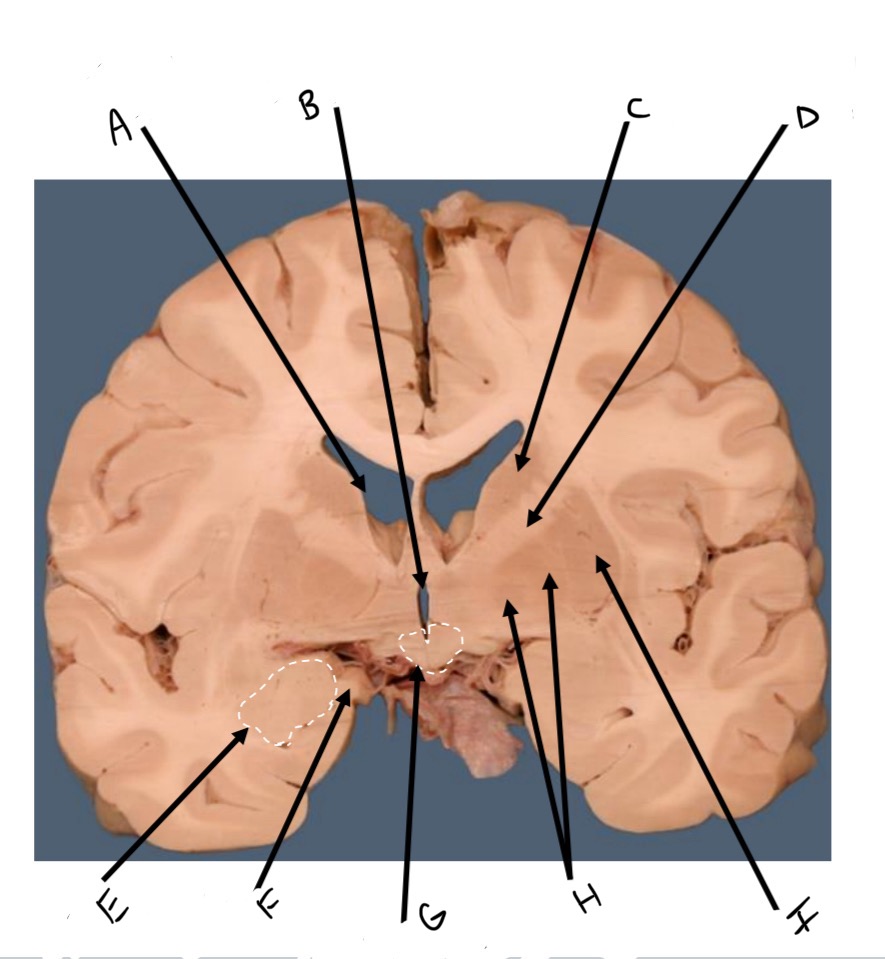
B
3rd ventricle
- secretes and produces CSF
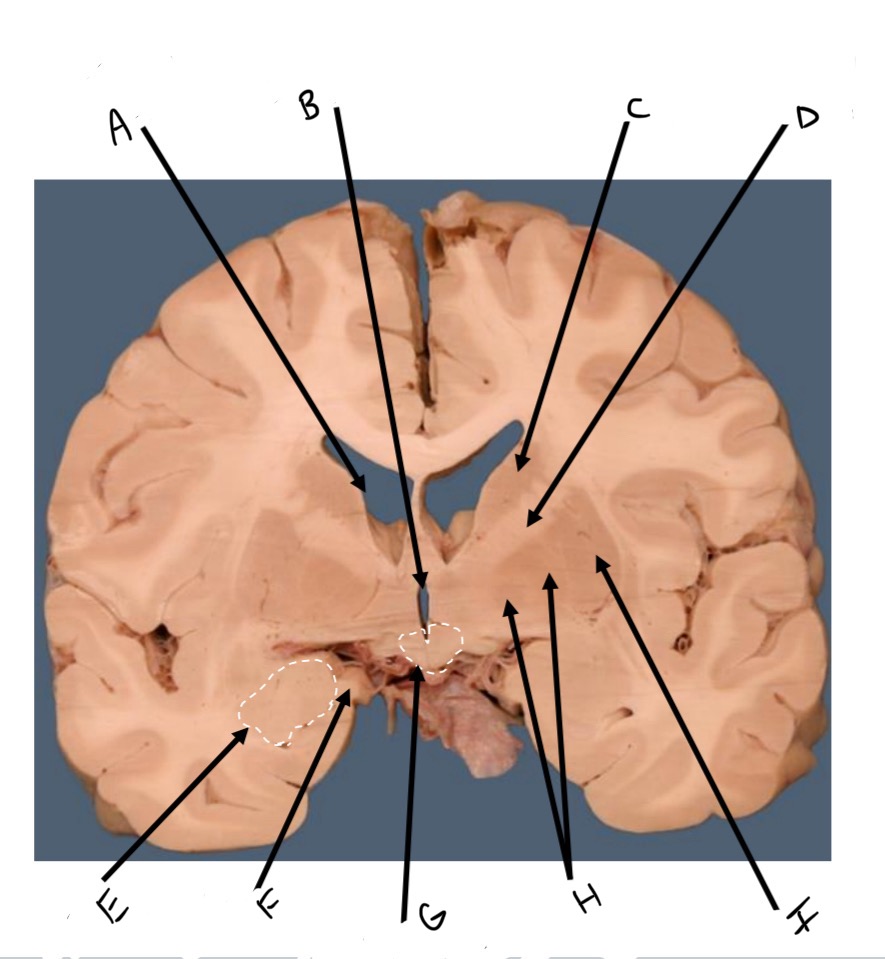
C
Caudate nucleus
- suppress worry signals
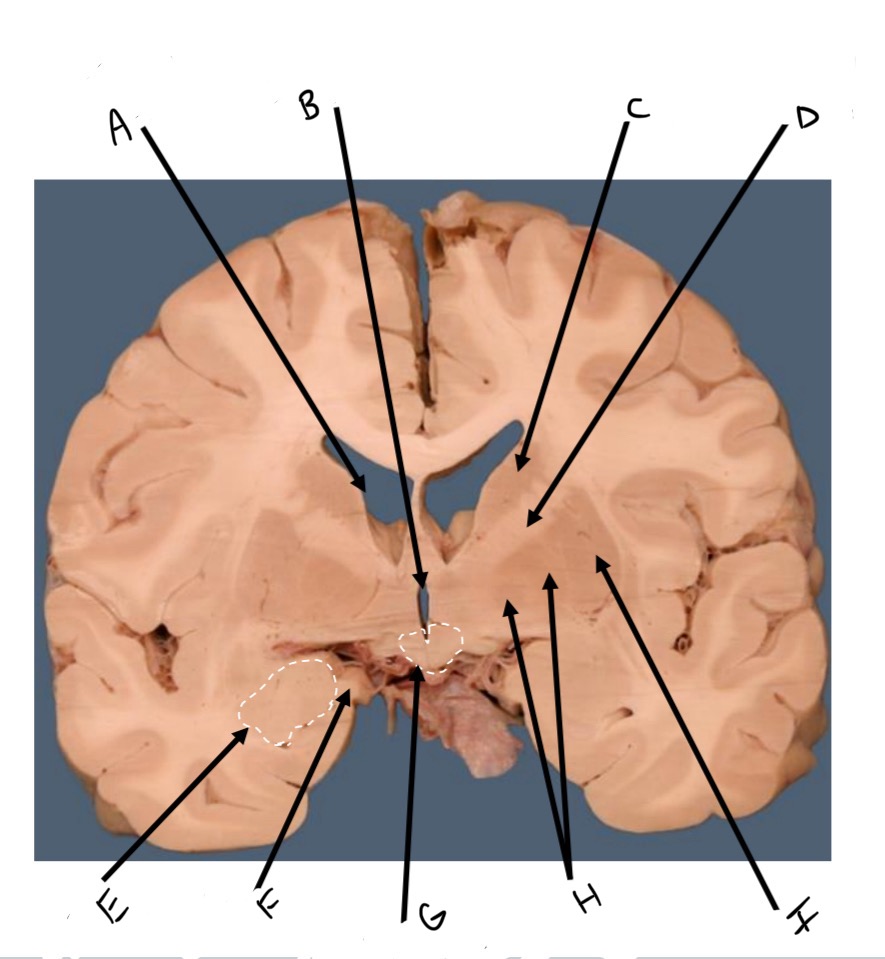
D
Internal capsule
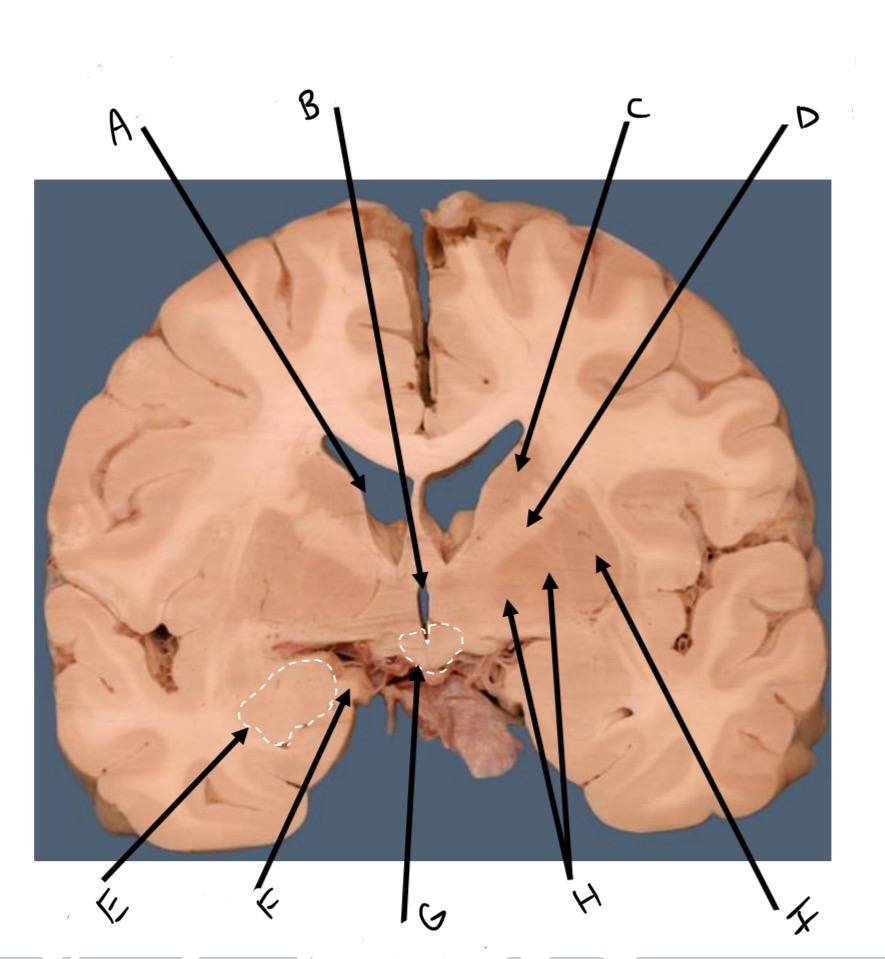
E
Amygdala
- fear
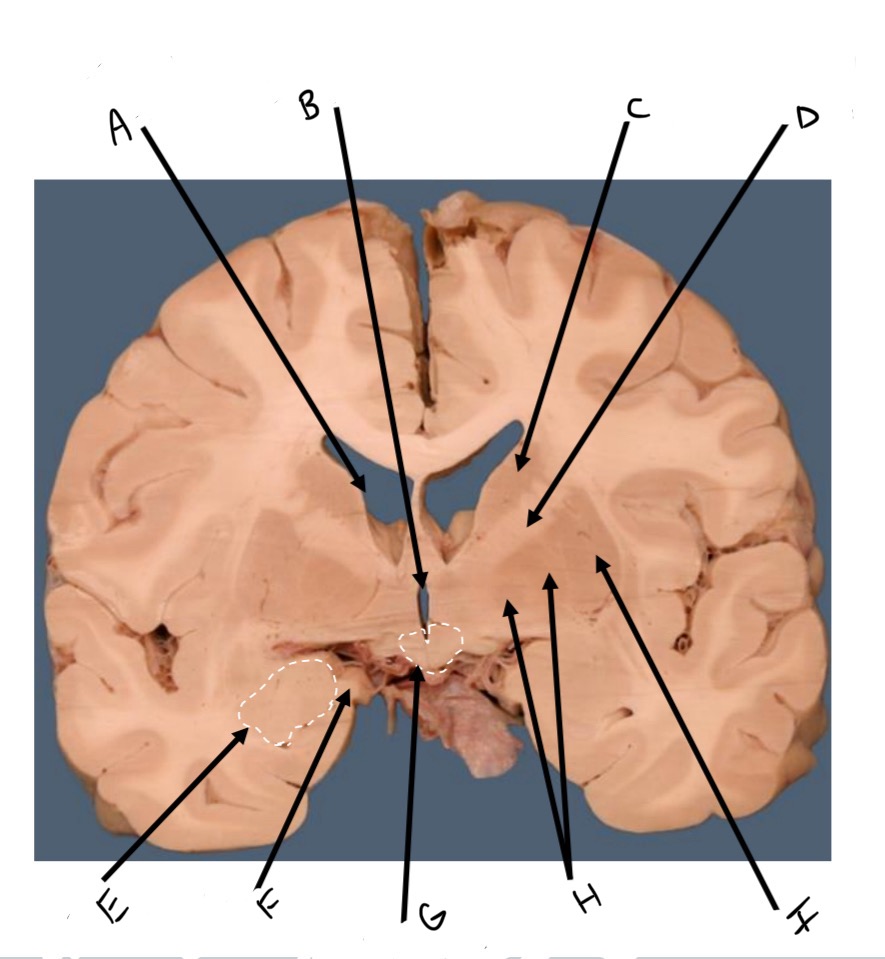
F
Uncus
- processing smell
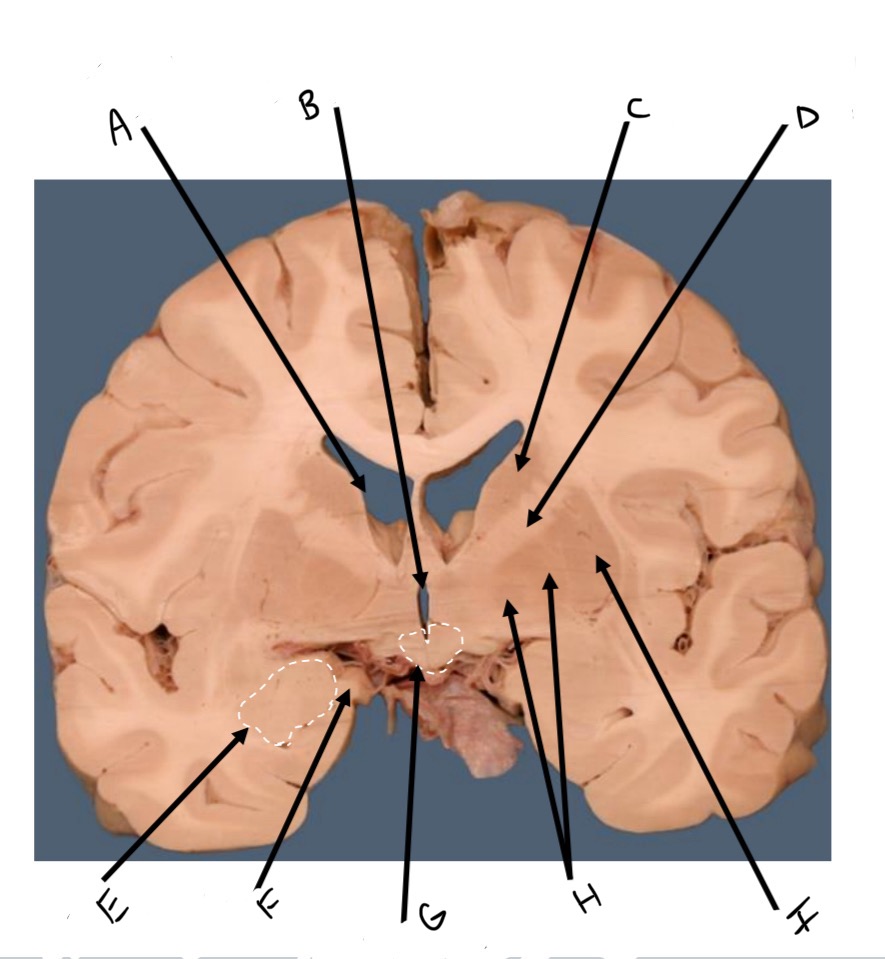
G
Hypothalamus
- survival, behavior
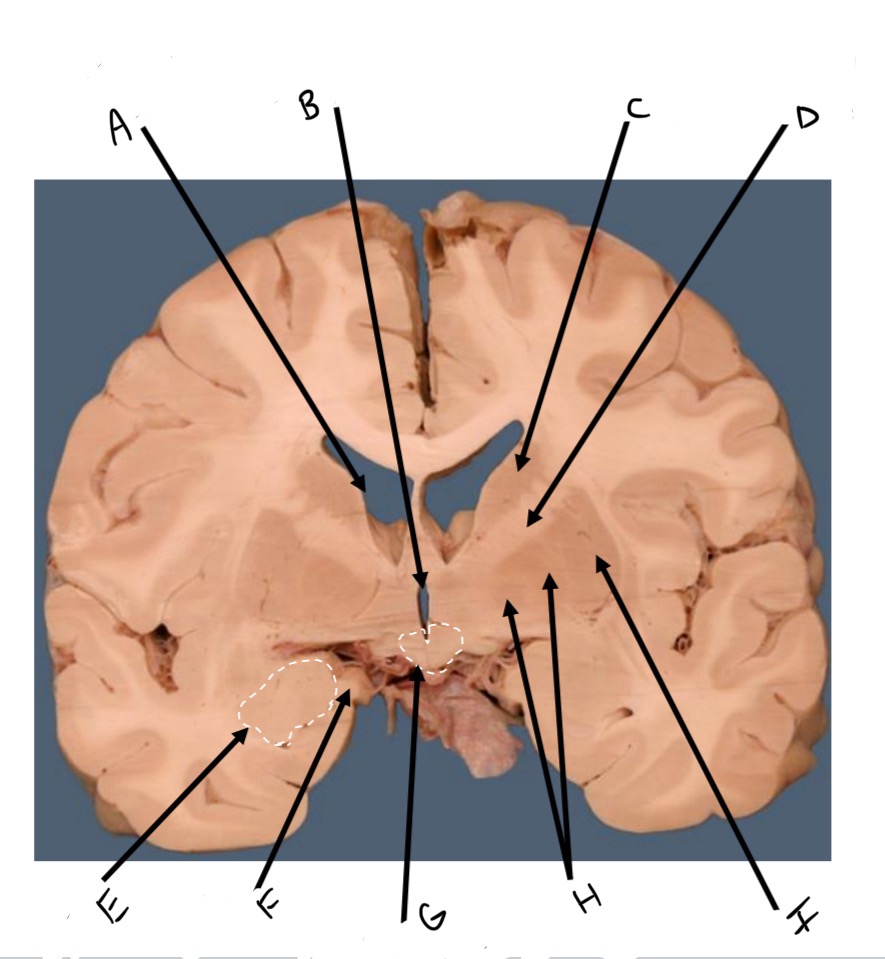
H
Globus Pallidus Internus and Externus
- internus = promotion + suppression movements
- externus = conscious + proprioception movements
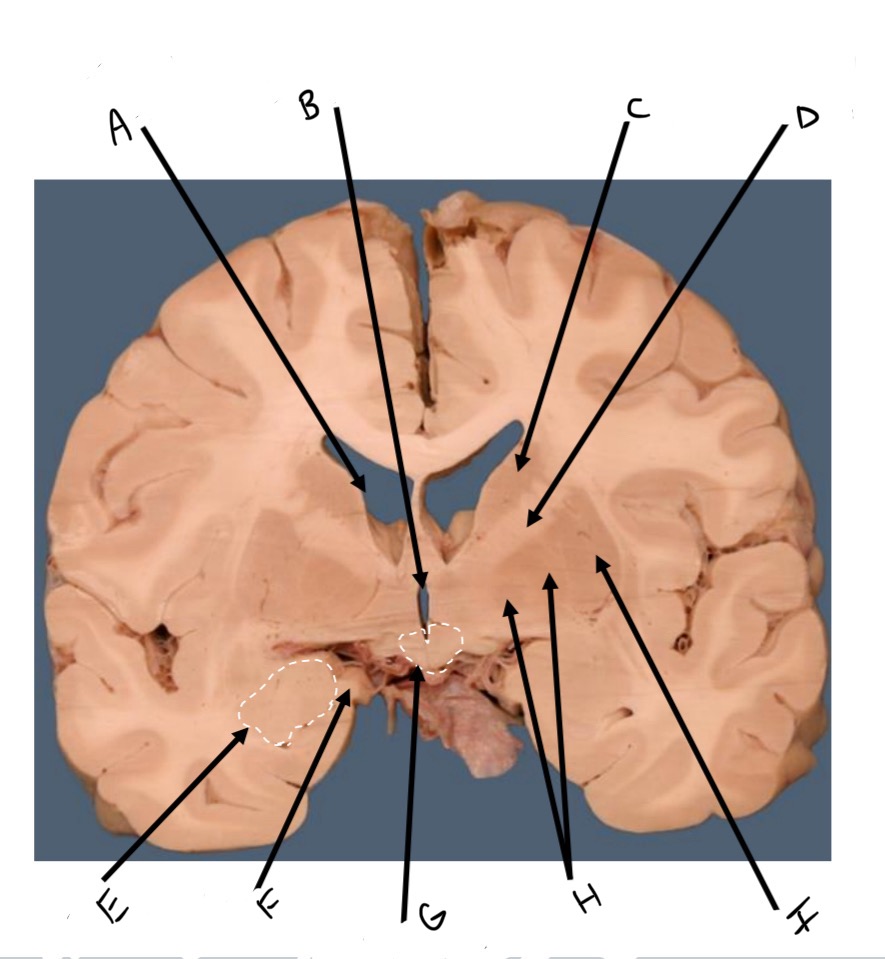
I
Putamen
- maternal behavior
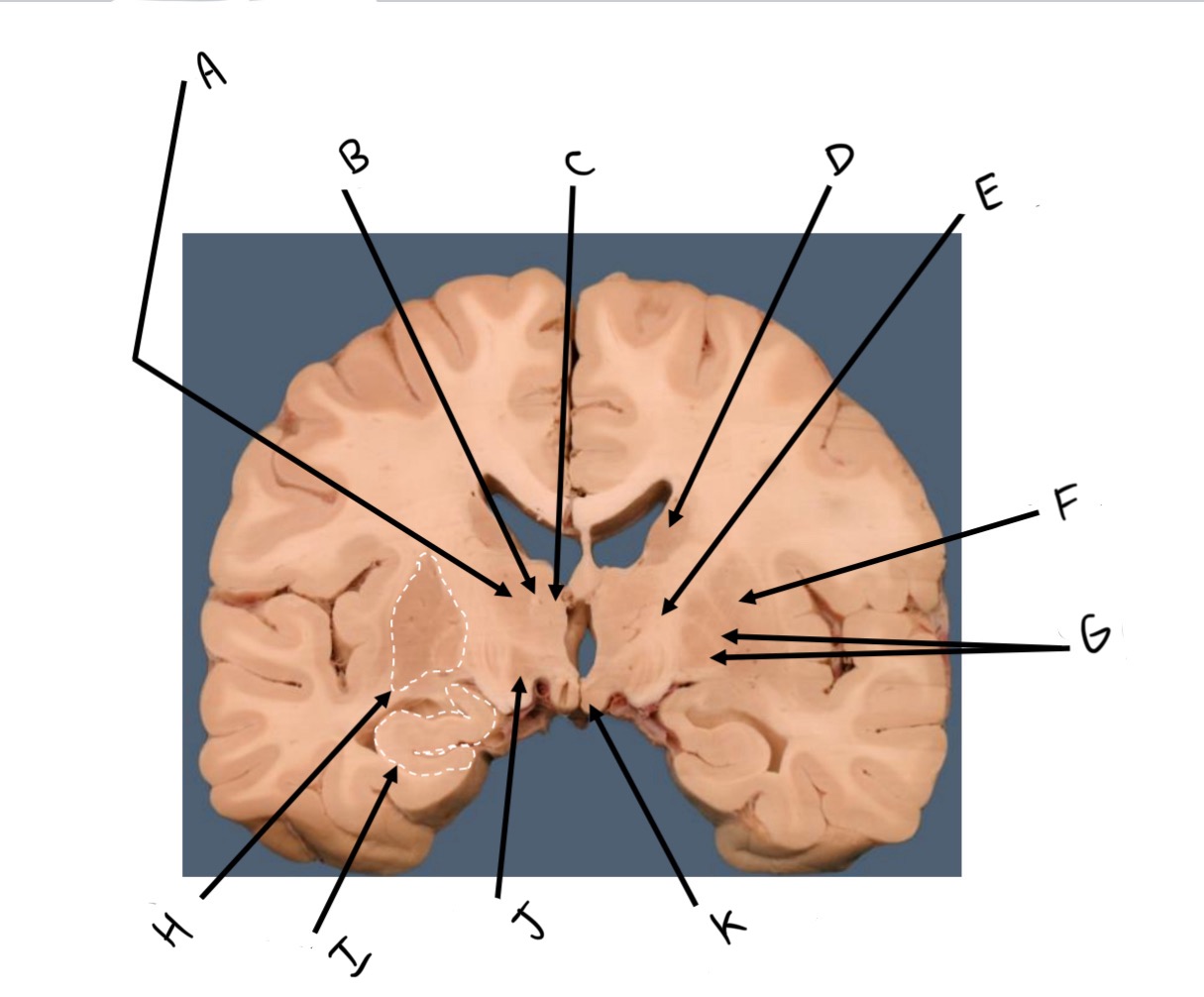
A
Dorsomedial nucleus of thalamus
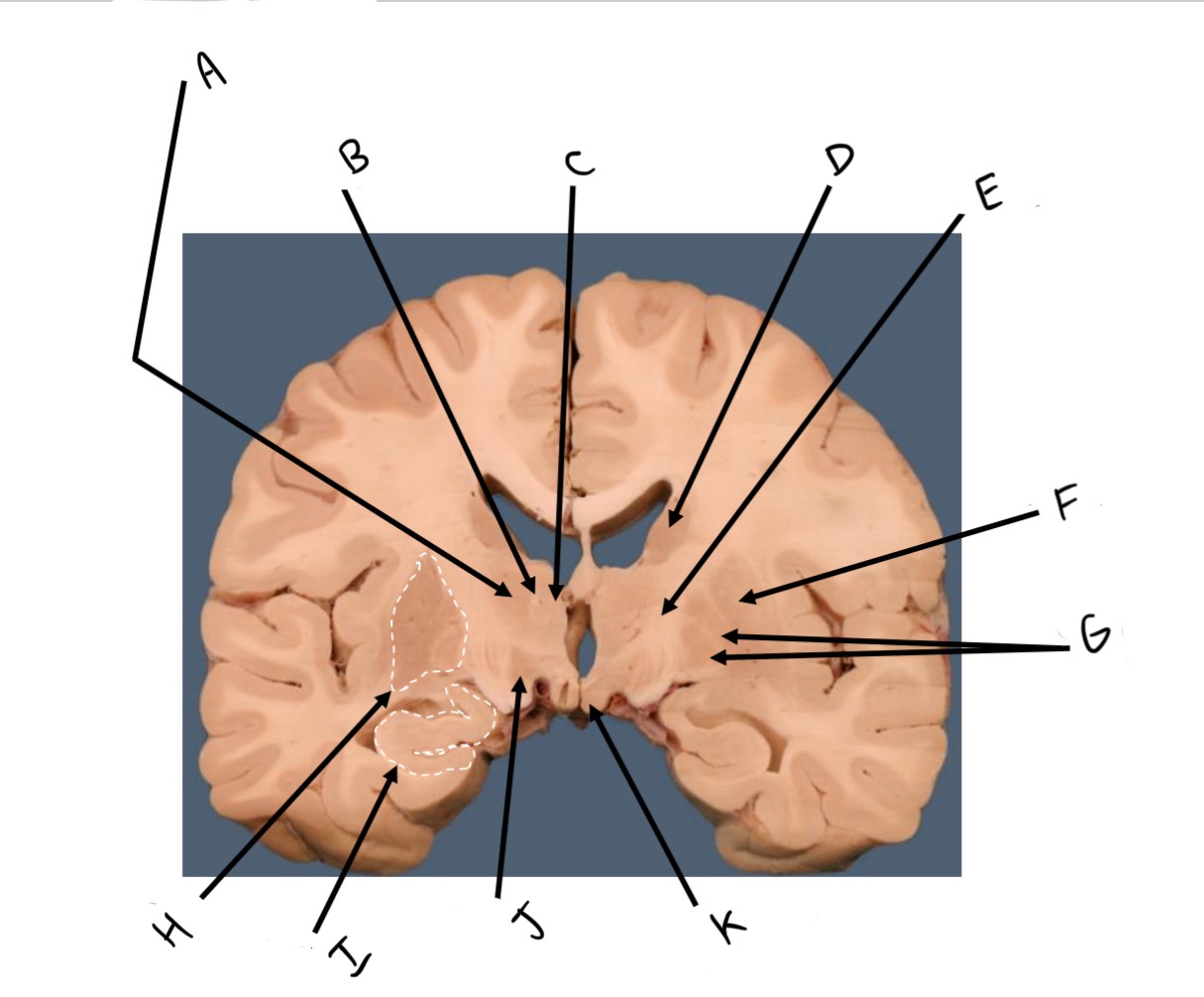
B
Mammillothalamic tract
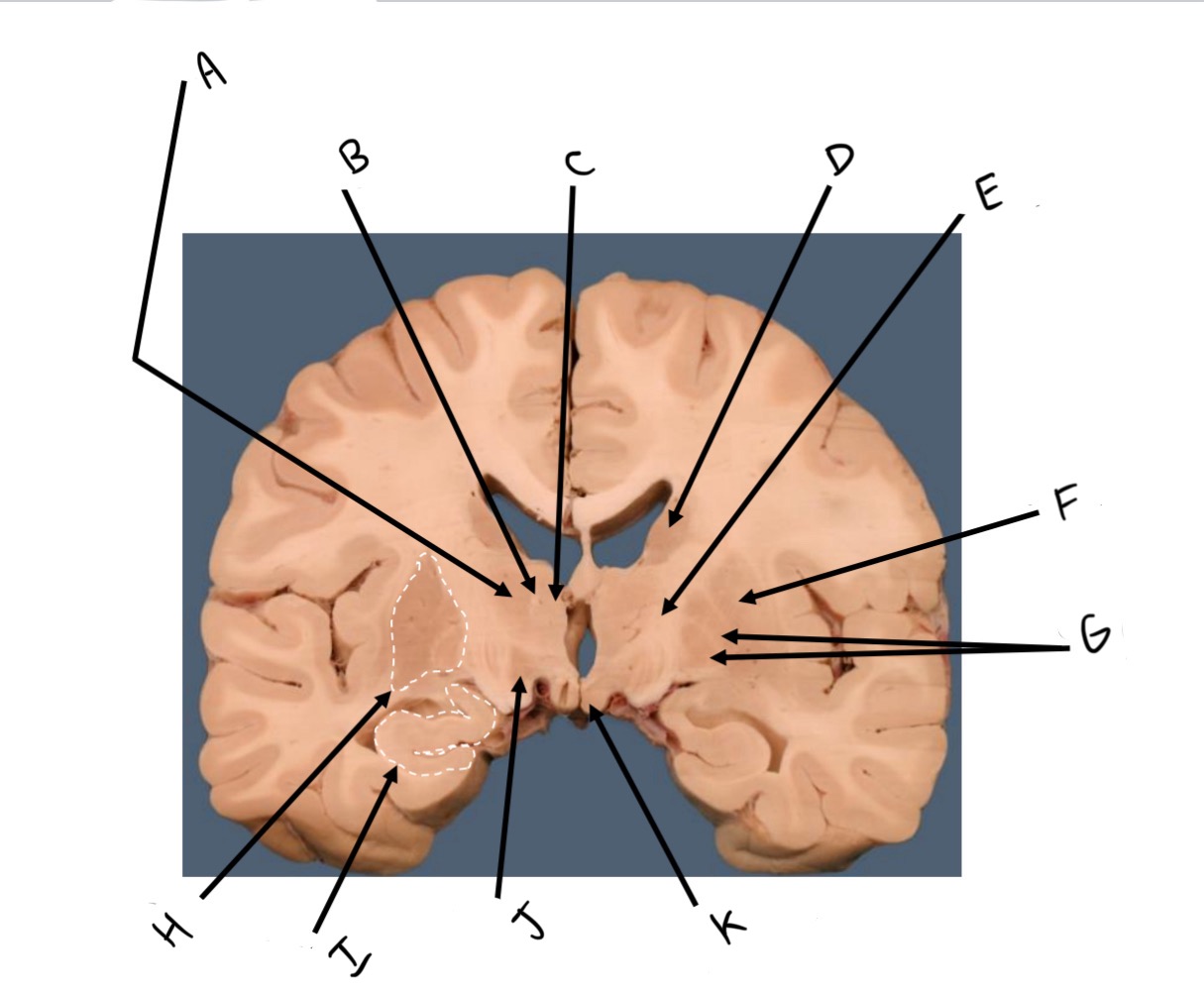
C
Anterior nucleus of thalamus
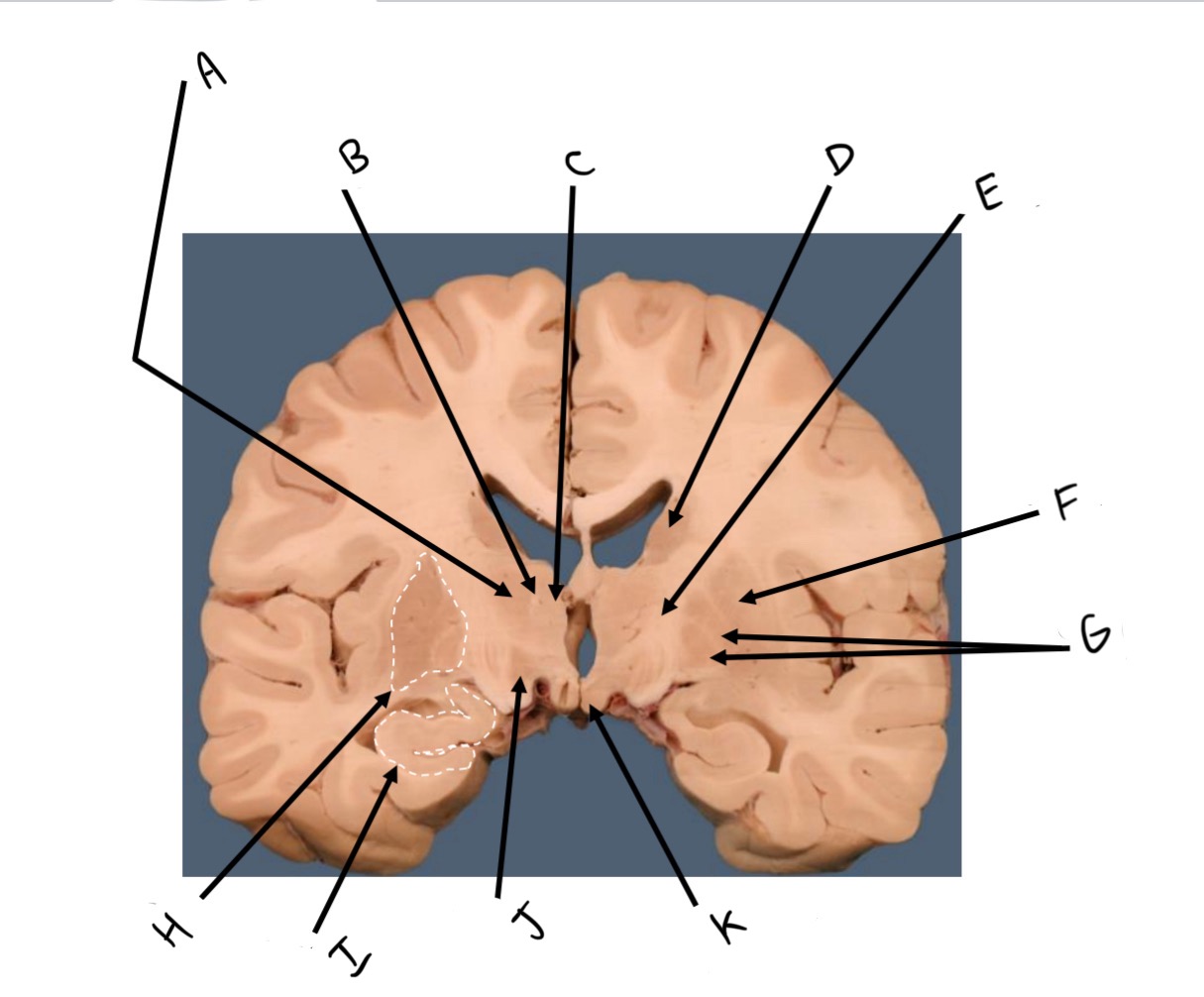
D
Caudate nucleus
- suppress worry signals
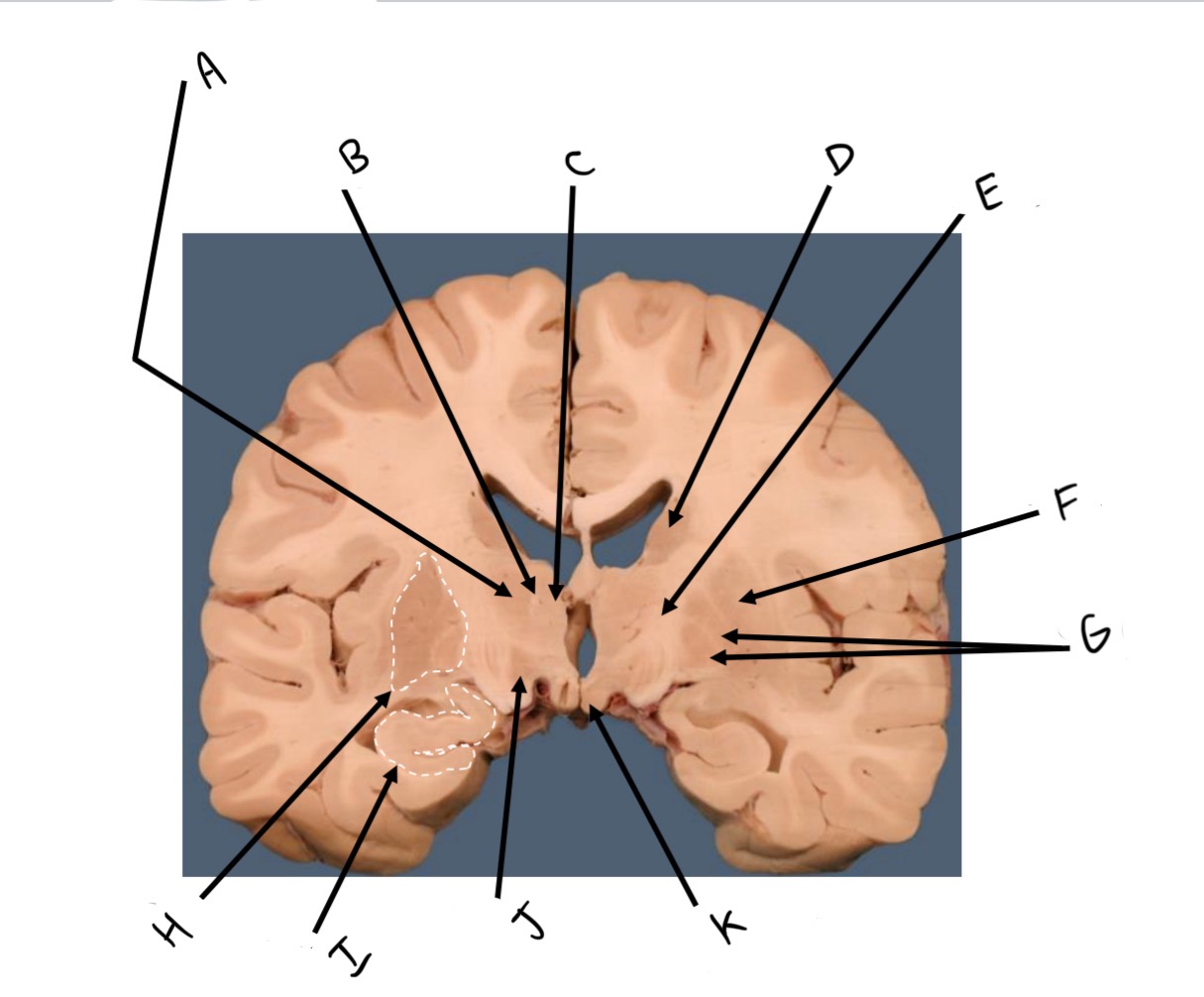
E
Internal capsule
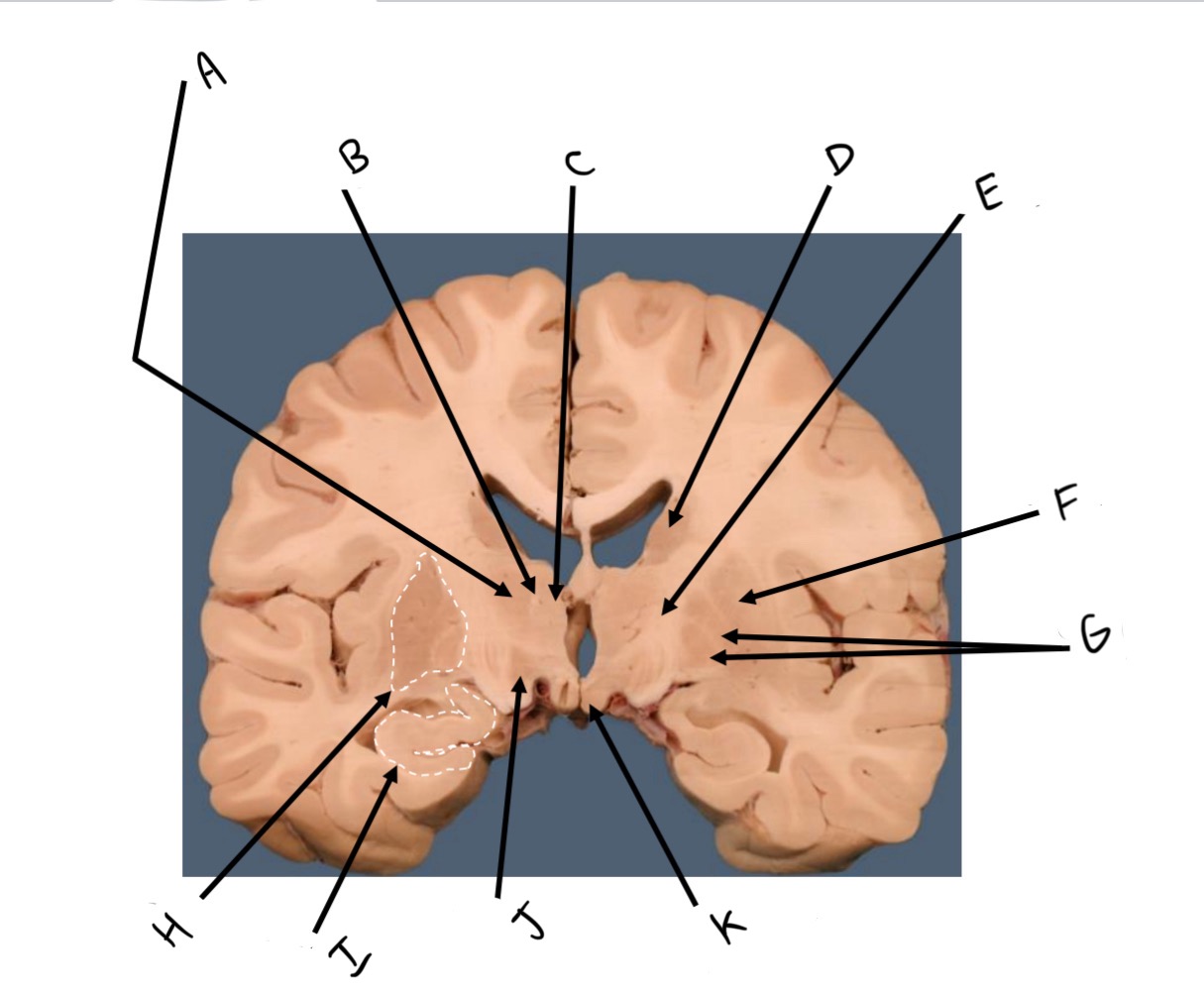
F
Putamen
- maternal behavior
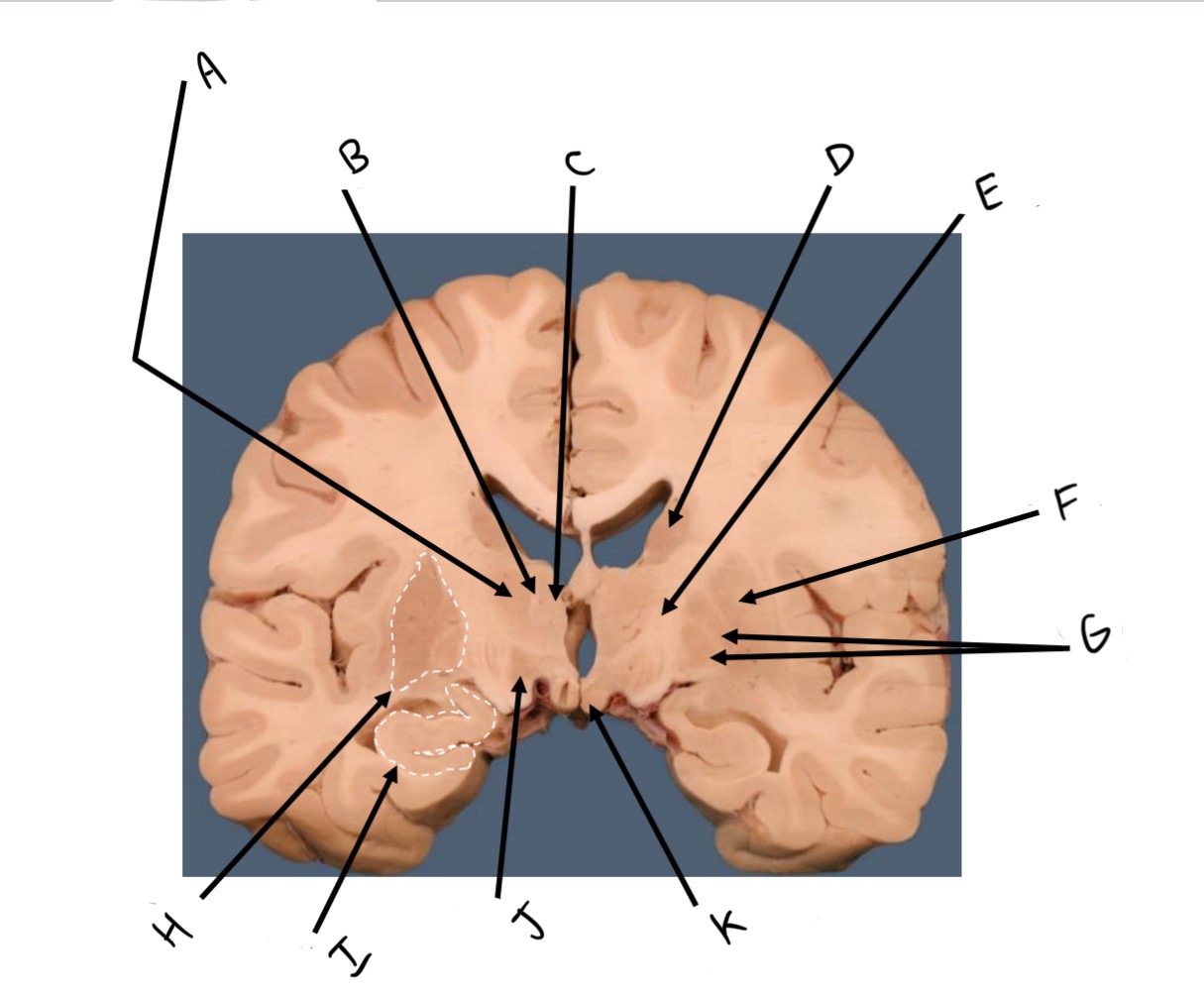
G
Globus pallidus Internus and externus
- internus = promotion + suppression movements
- externus = conscious + proprioceptive movements
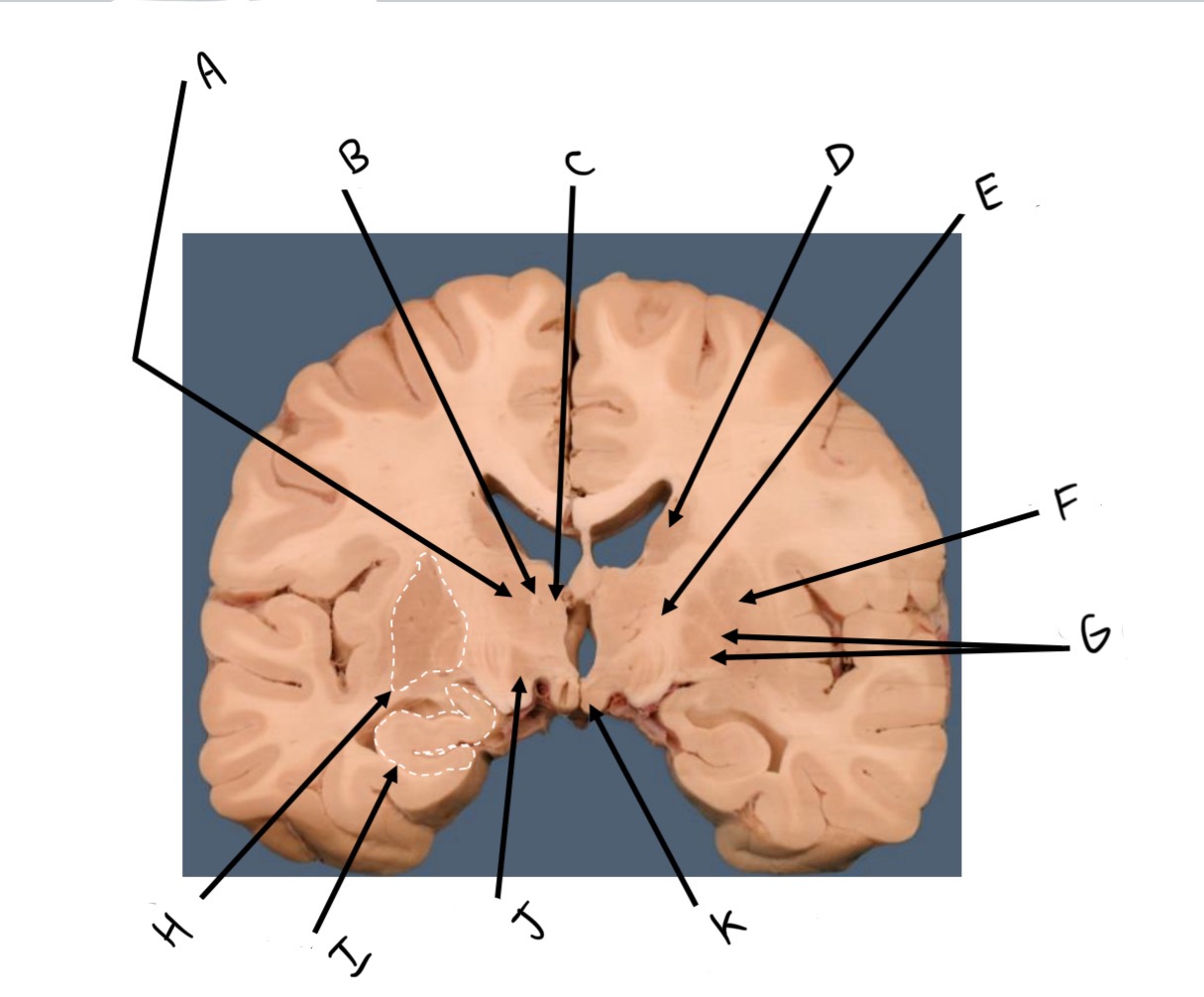
H
Basal ganglia
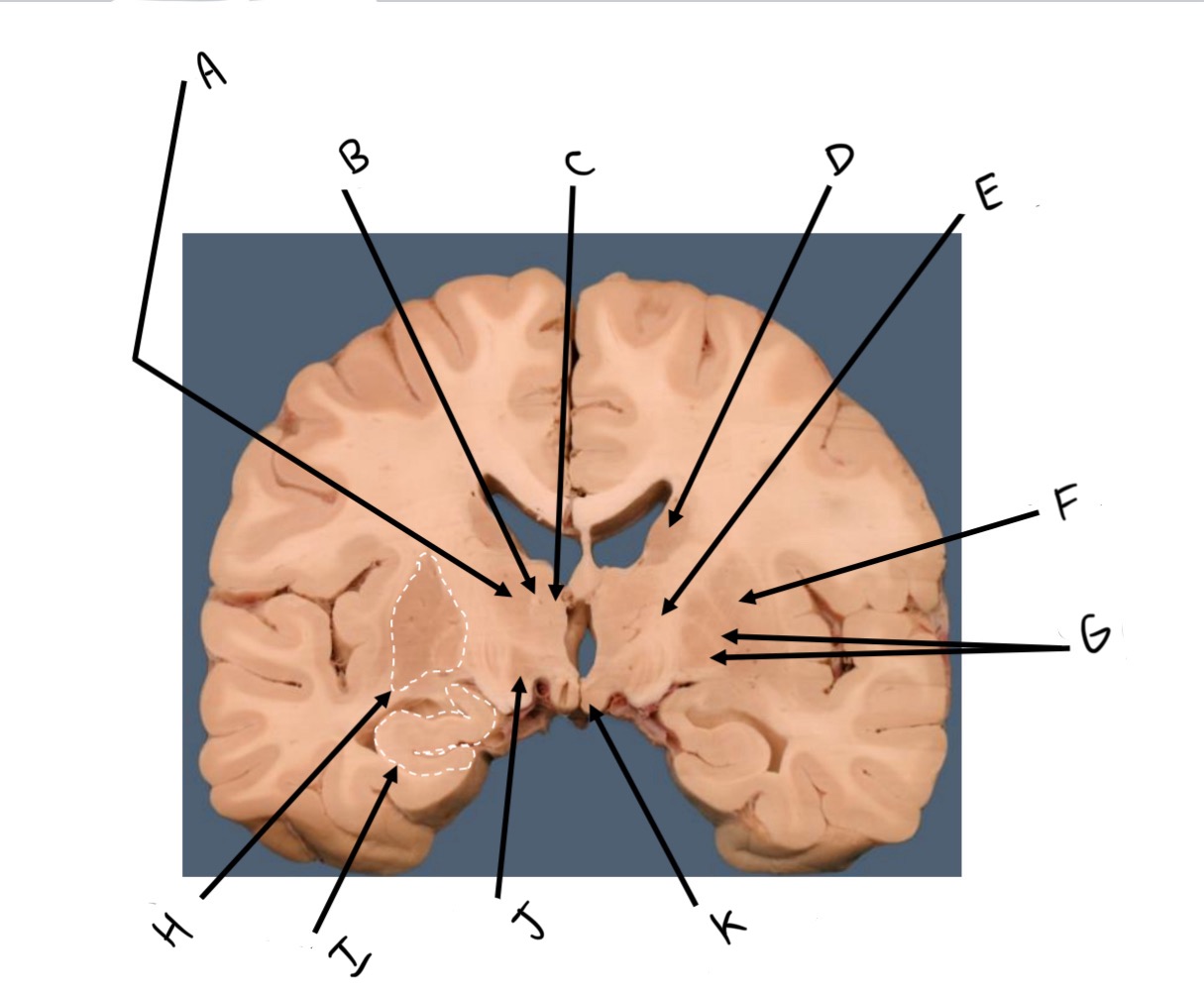
I
Hippocampus (memory and learning)
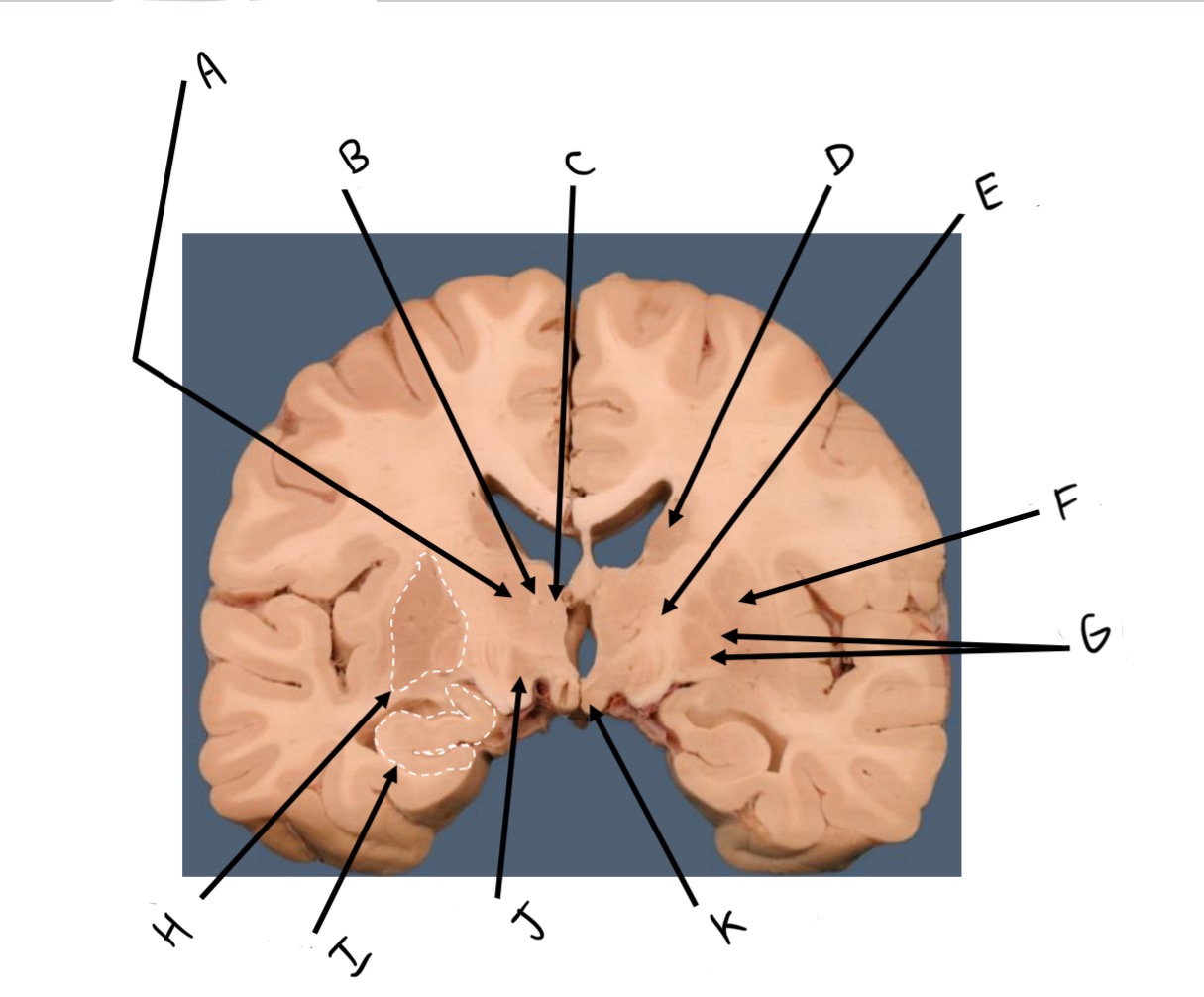
J
Hypothalamus
- survival, behavior
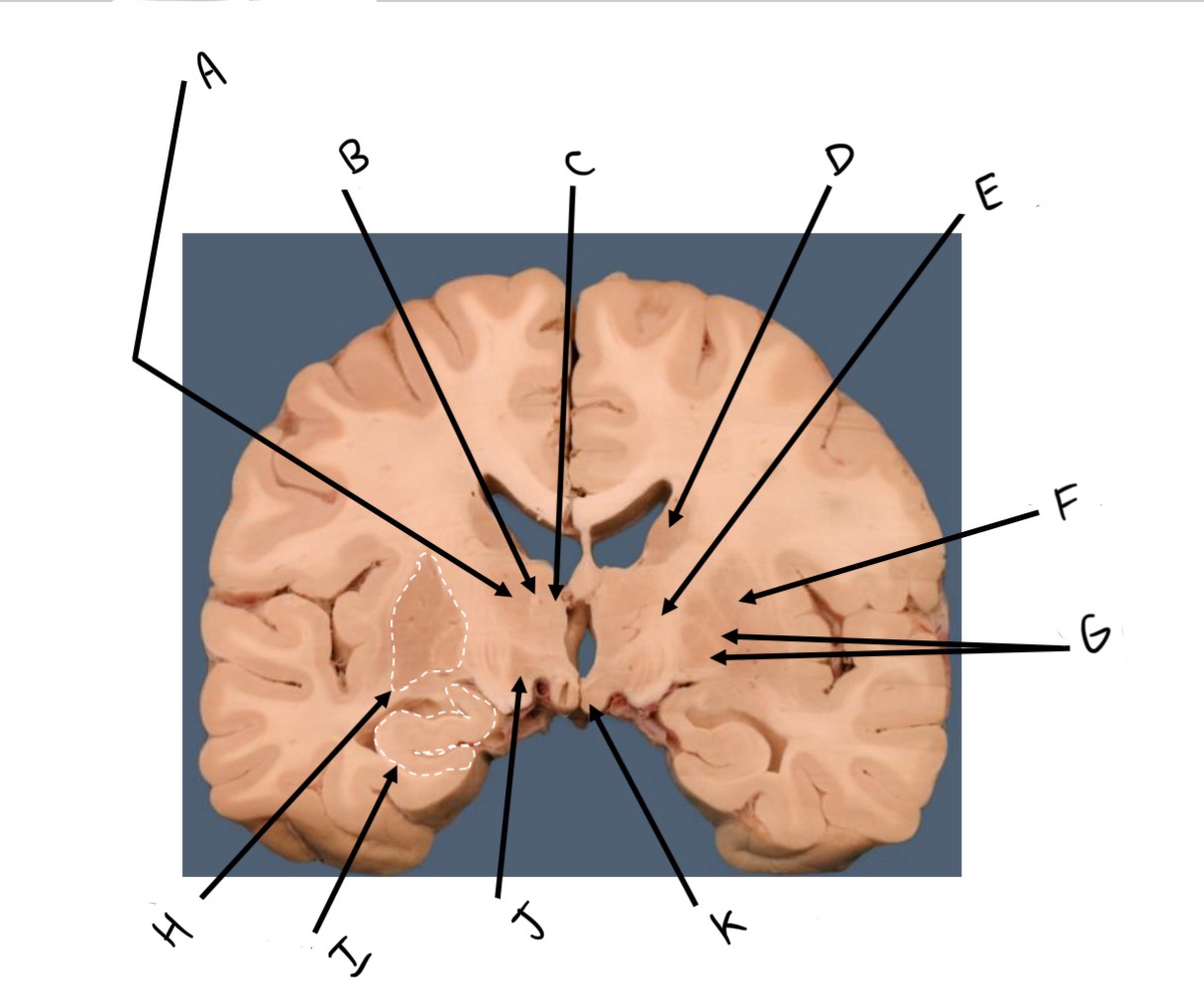
K
Mammillary body
- recollective memory
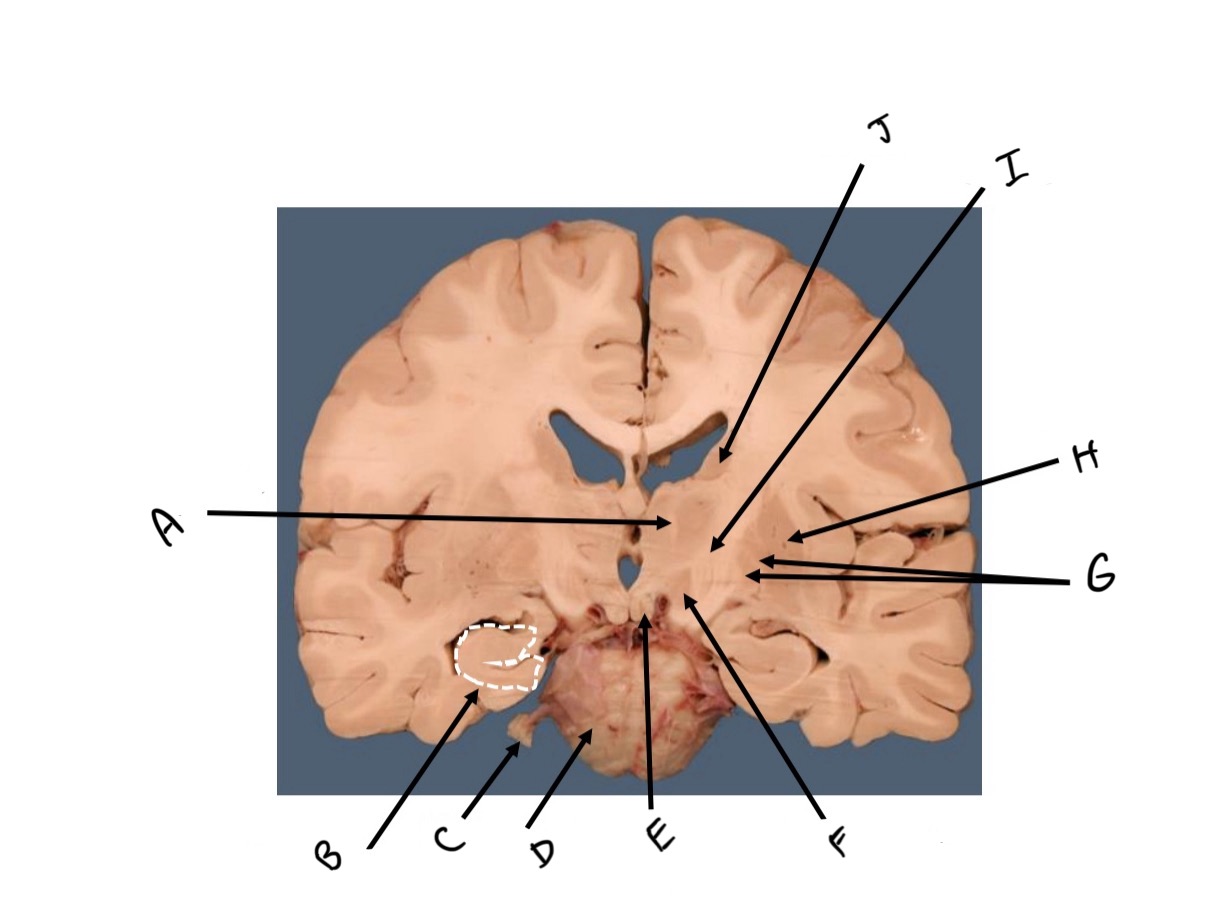
A
Mammillothalamic tract
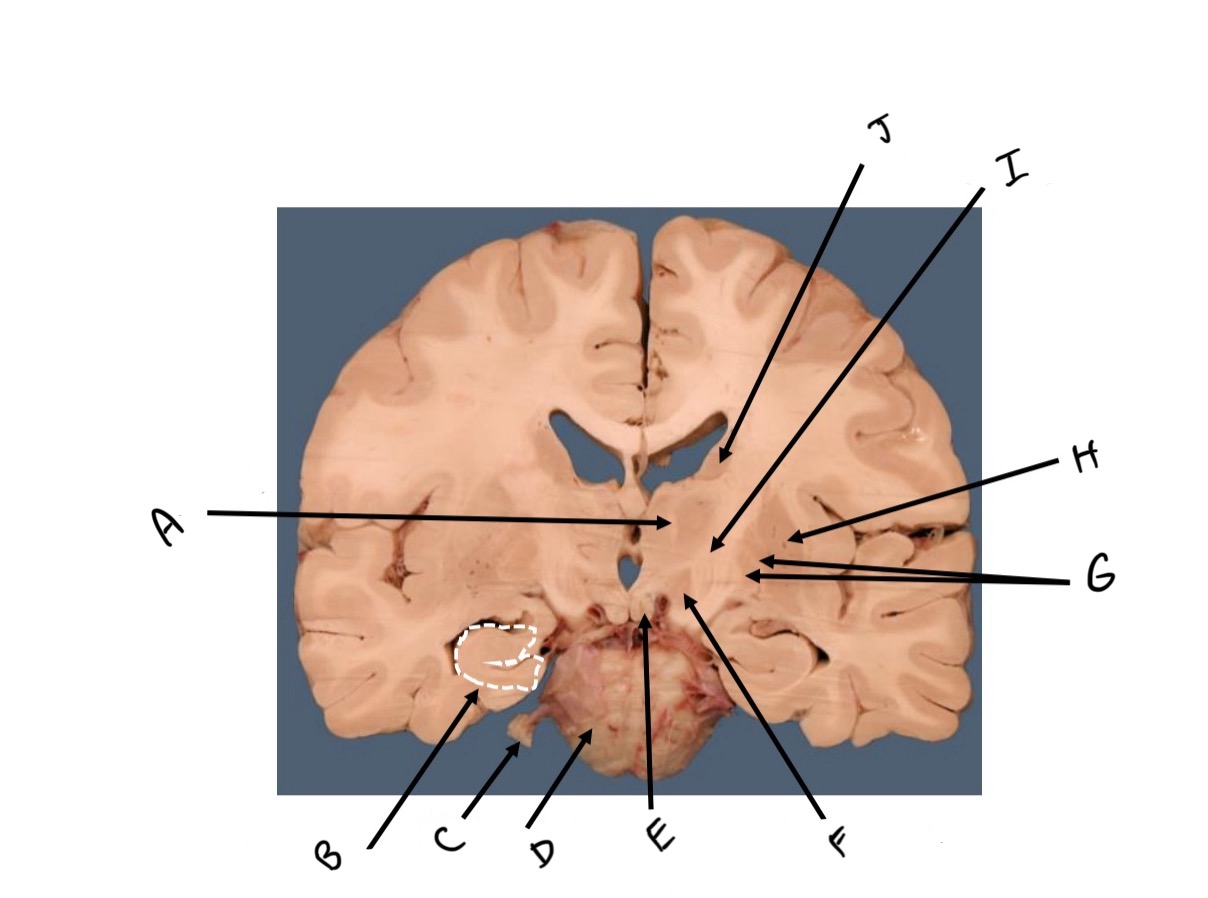
B
Hippocampus
- memory and learning
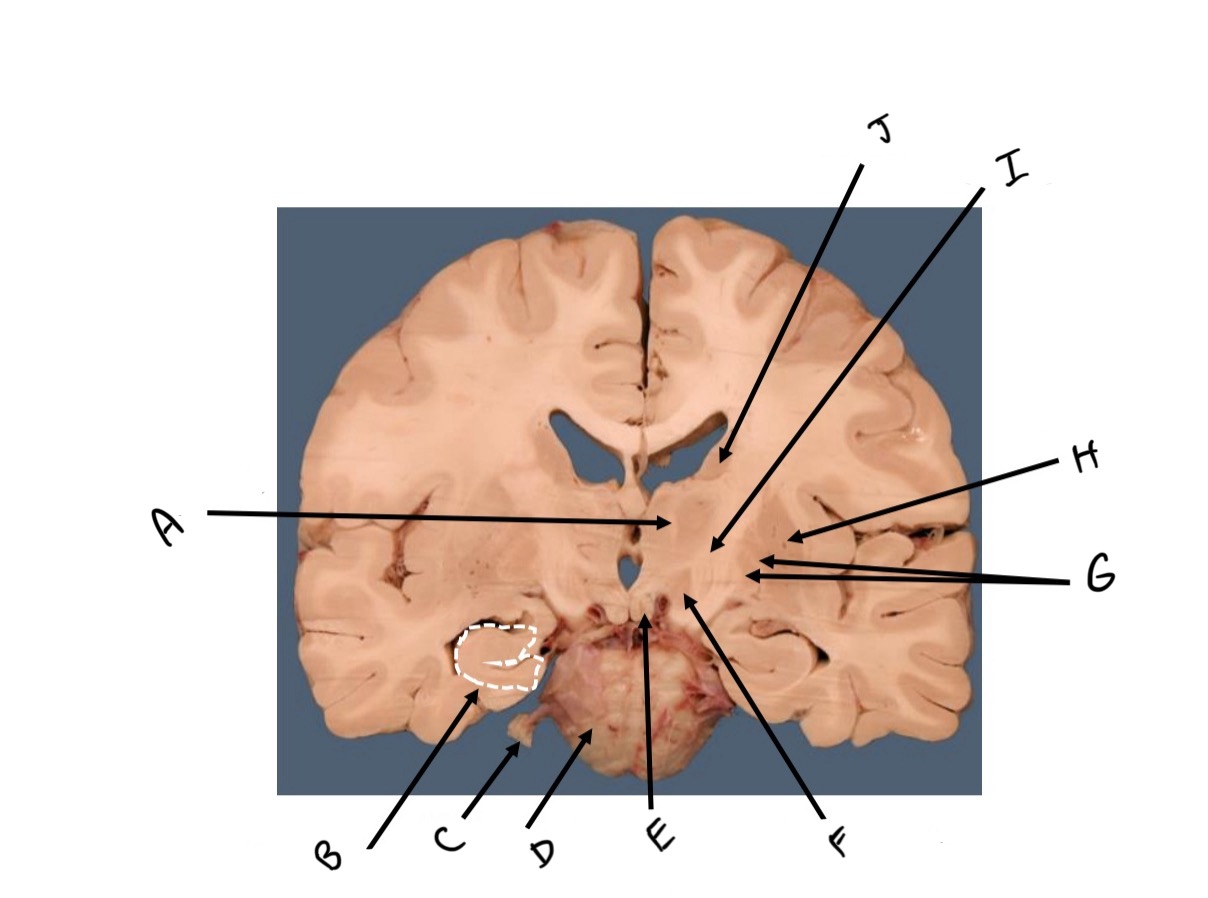
C
CNV
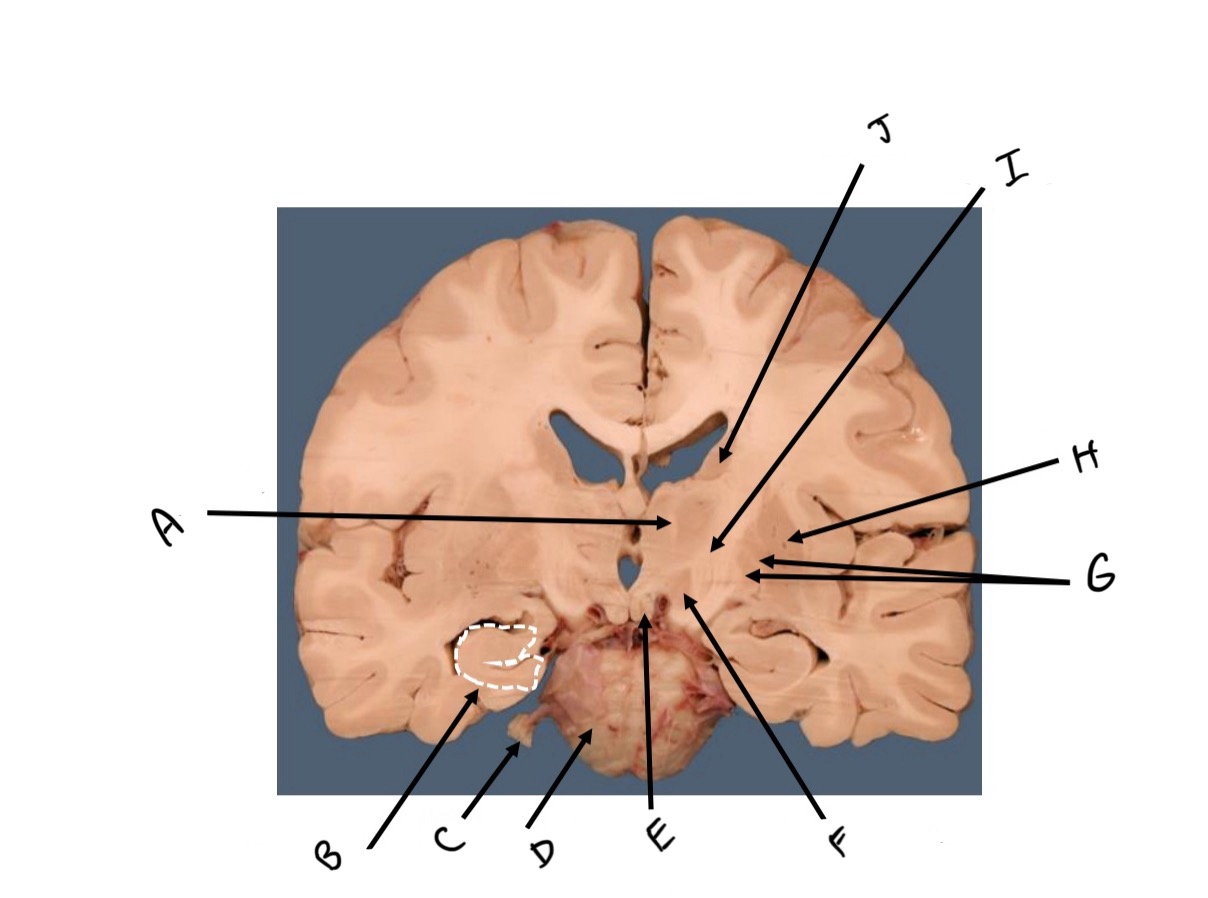
D
Pons
- unconscious movement
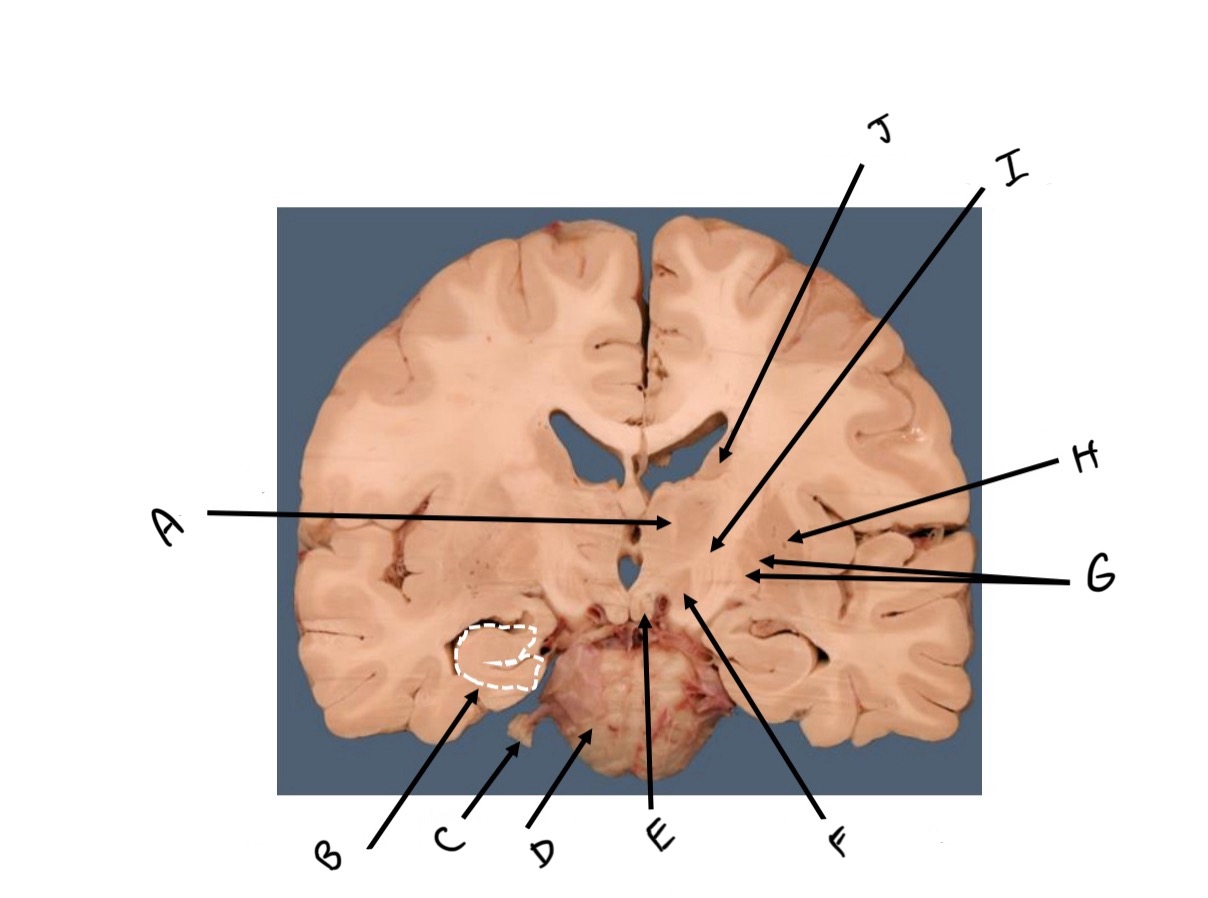
E
Mammillary body
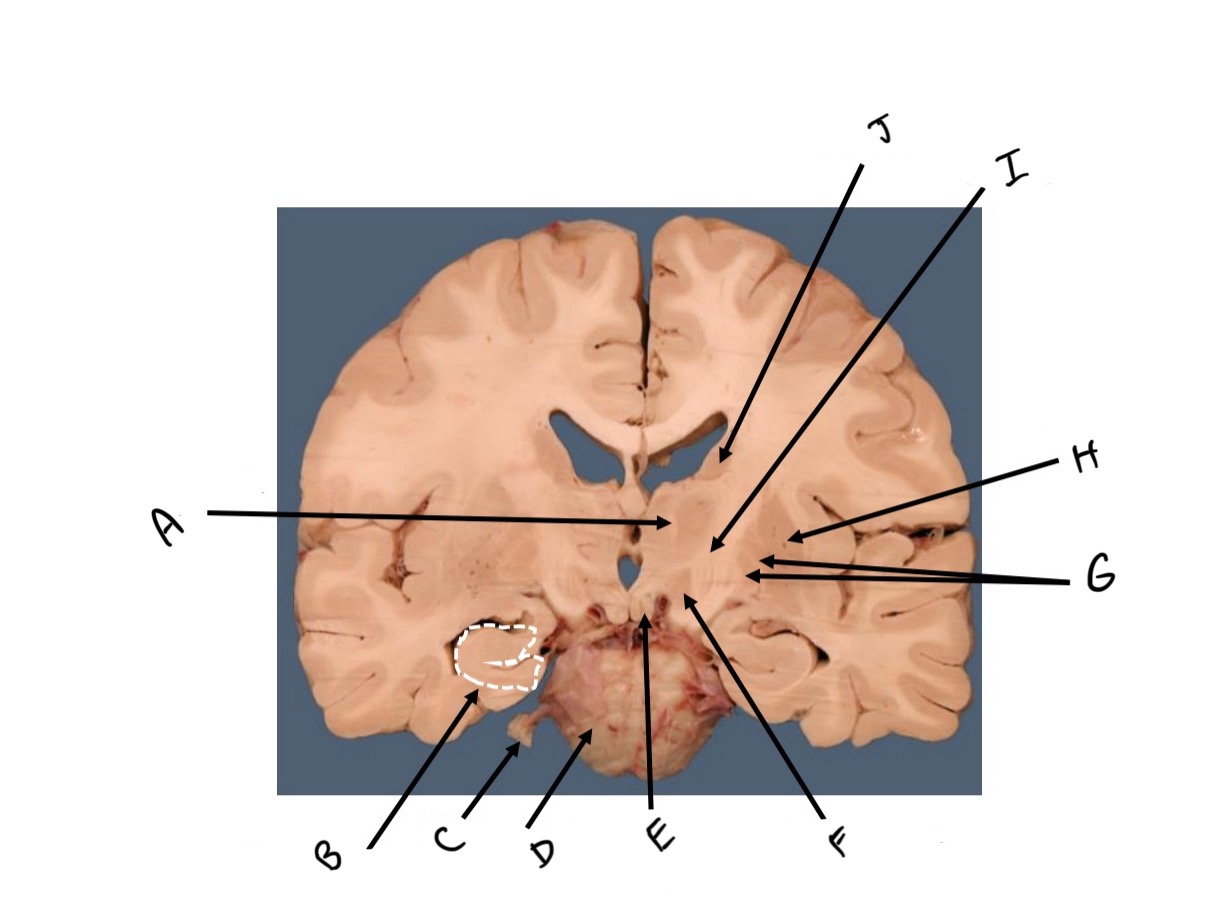
F
Hypothalamus
- survival, behavior
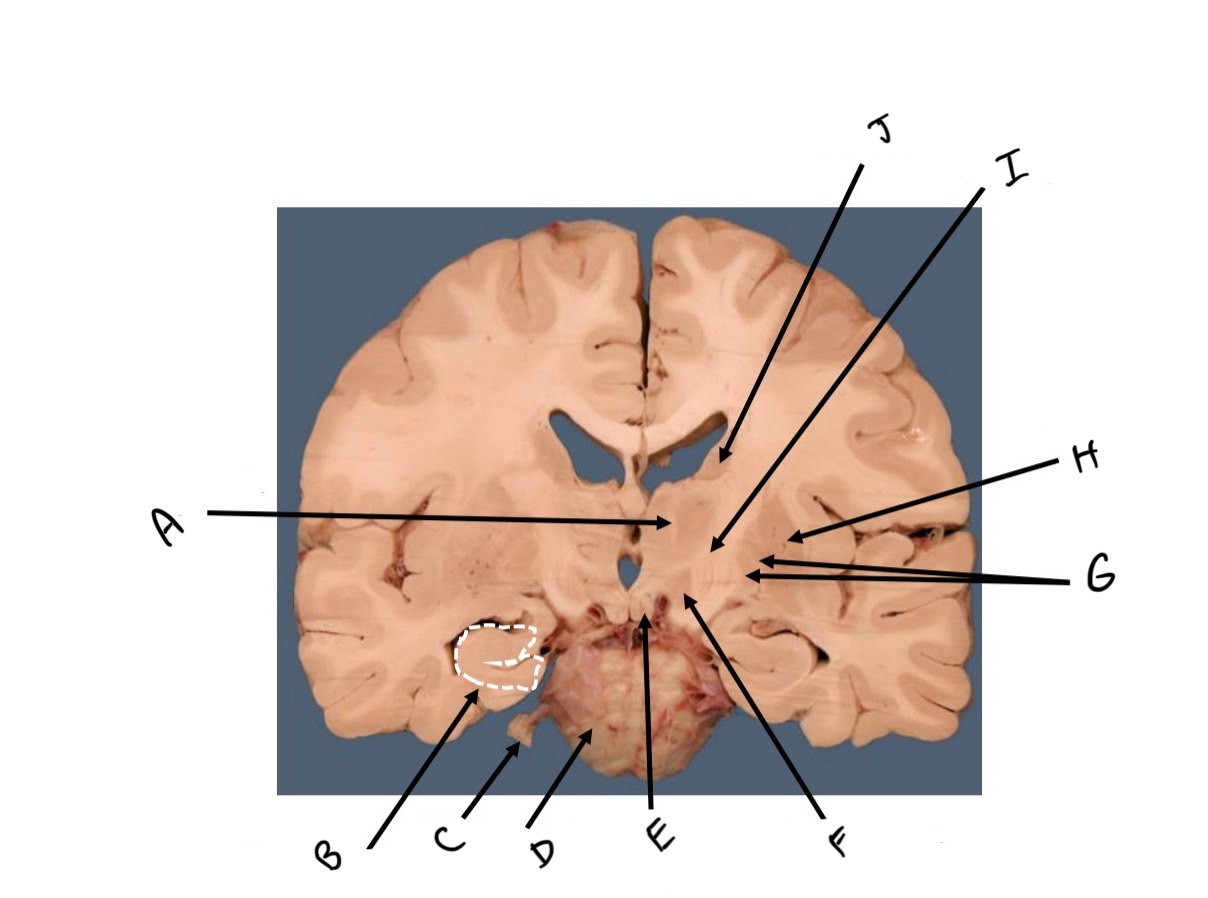
G
Globus pallidus Internus and Externus
- internus = promotion + suppression
- externus = conscious + proprioceptive
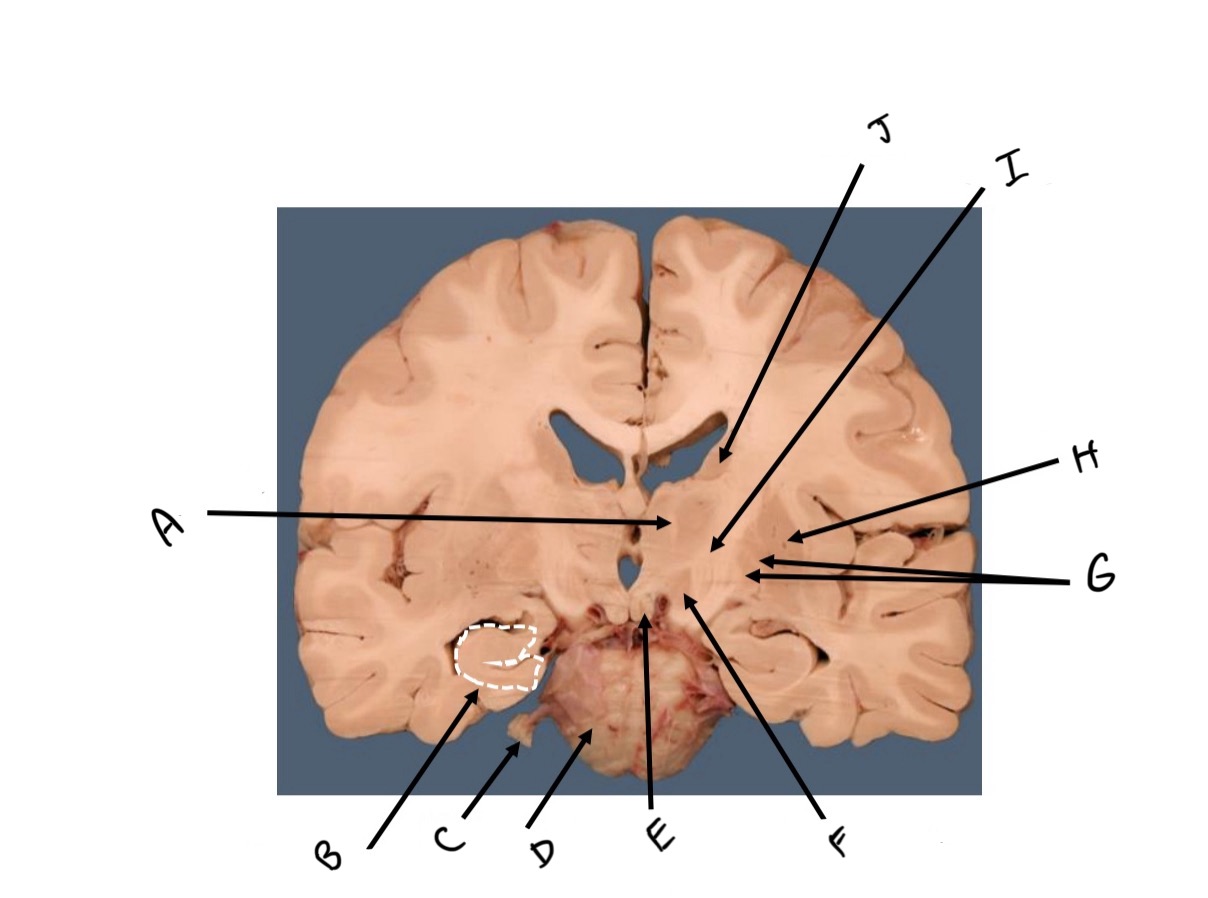
H
Putamen
- motherly behavior
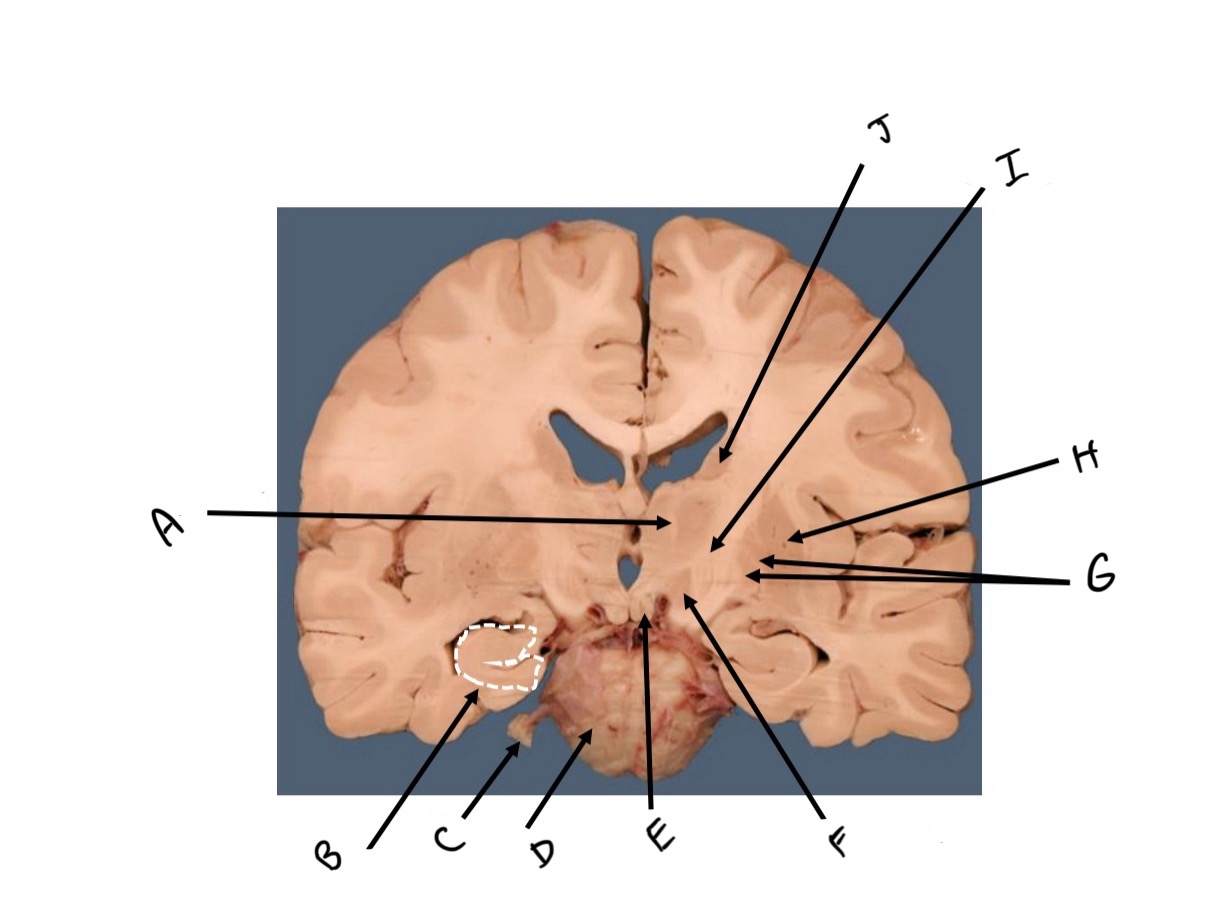
I
Internal capsule
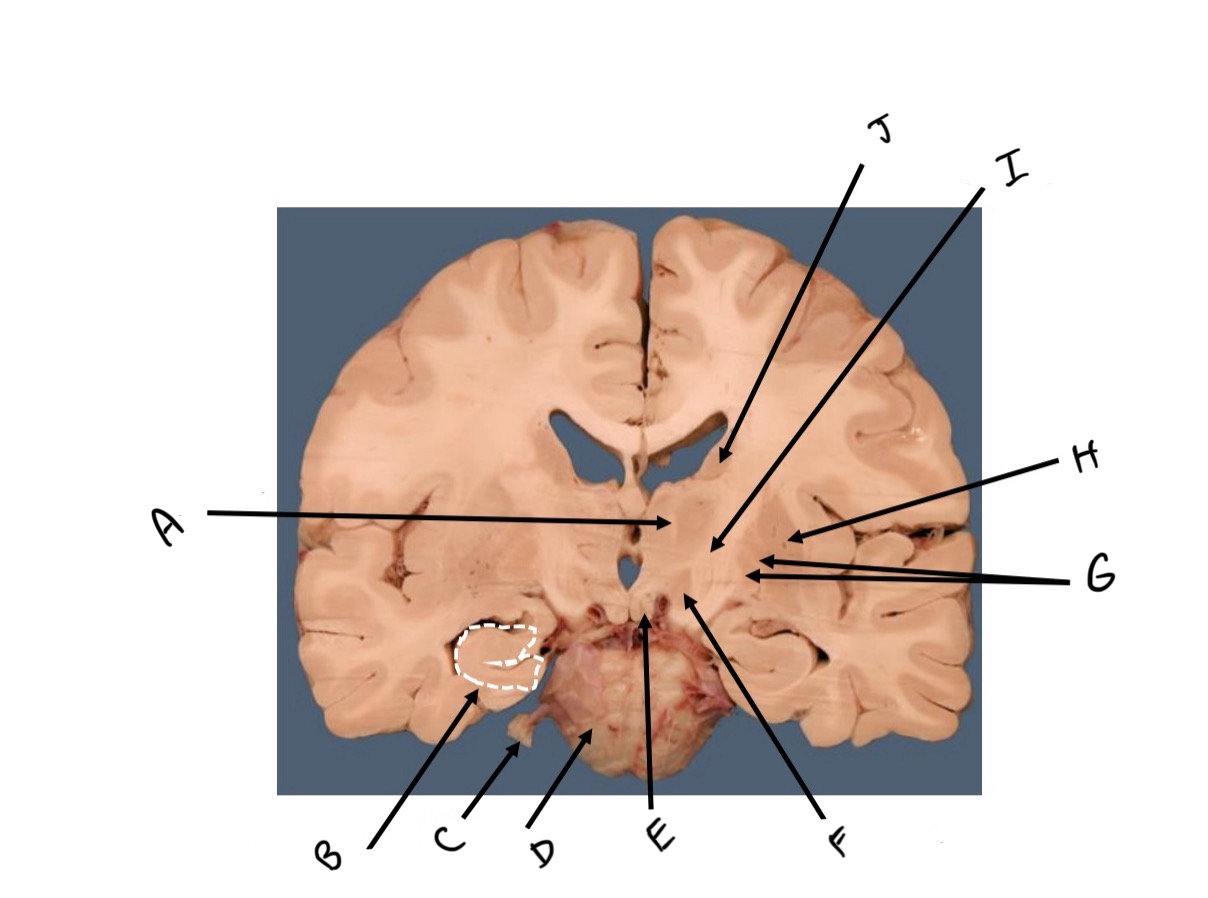
J
Caudate nucleus
- suppressing worry signals
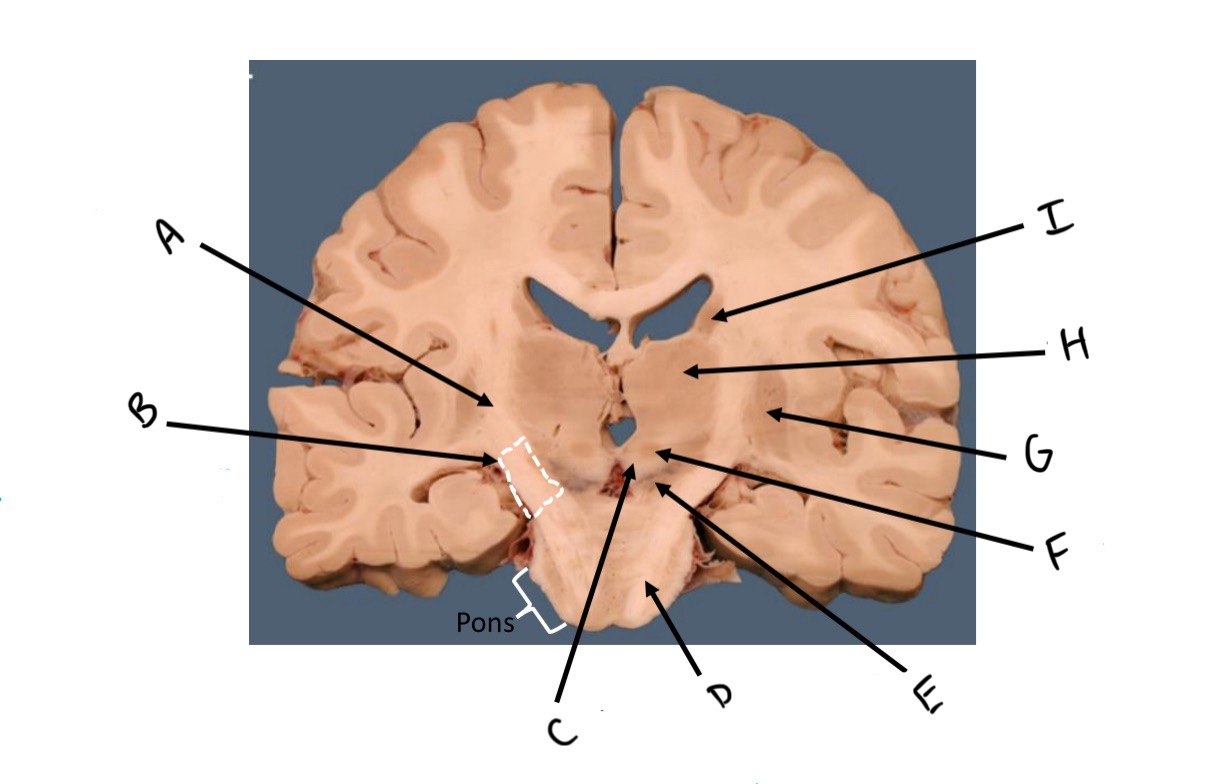
A
Internal capsule
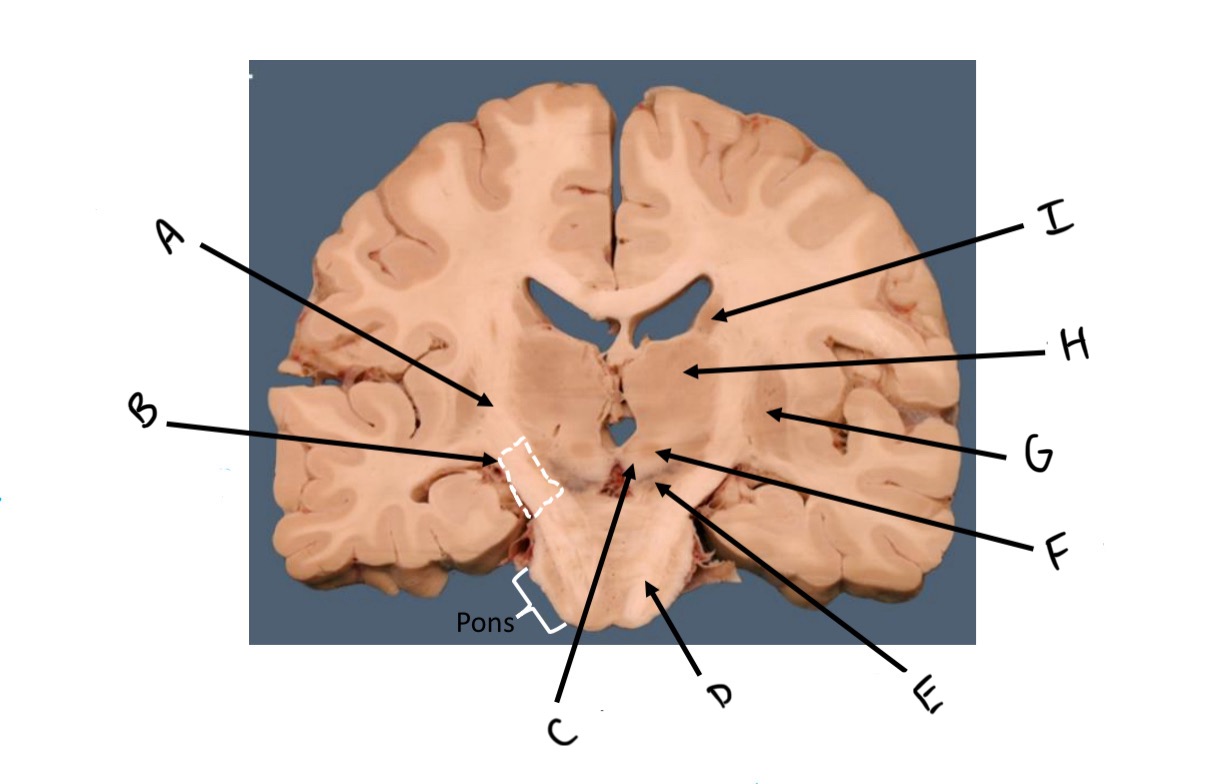
B
Crus cerebri
- connects cerebral hemisphere with opposite half
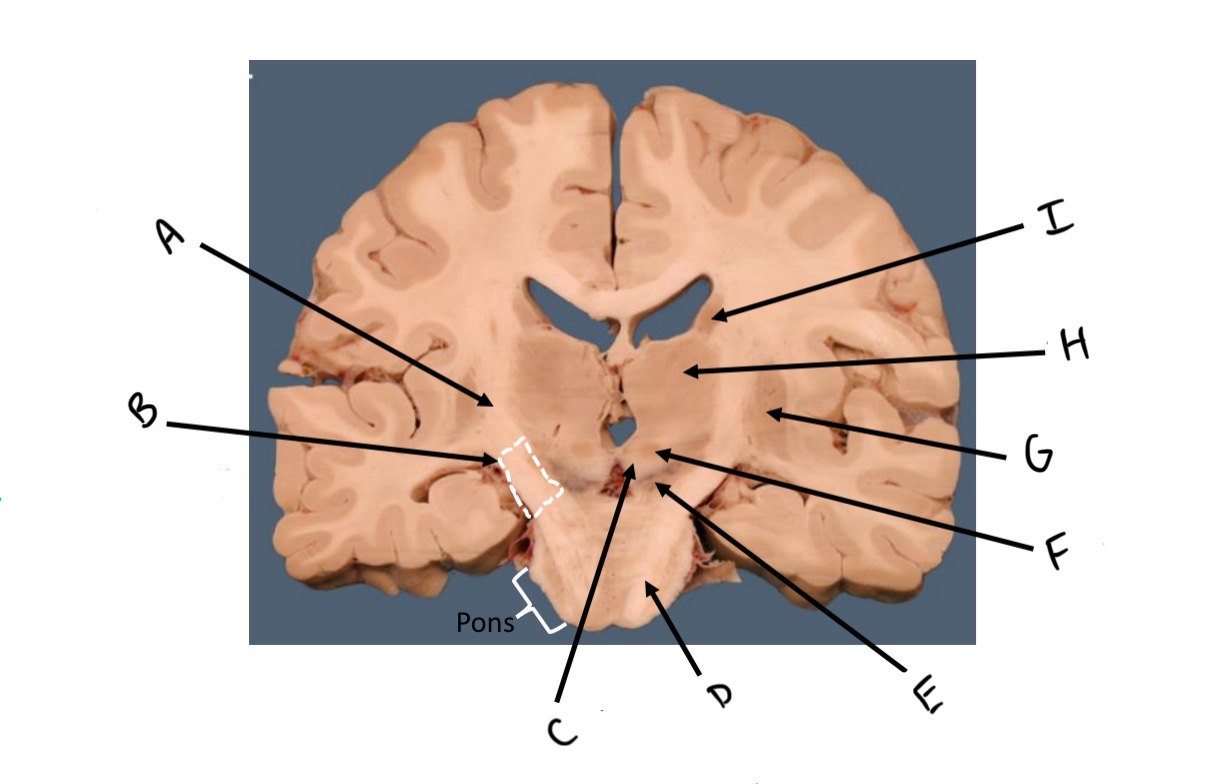
C
Mammillothalamic body
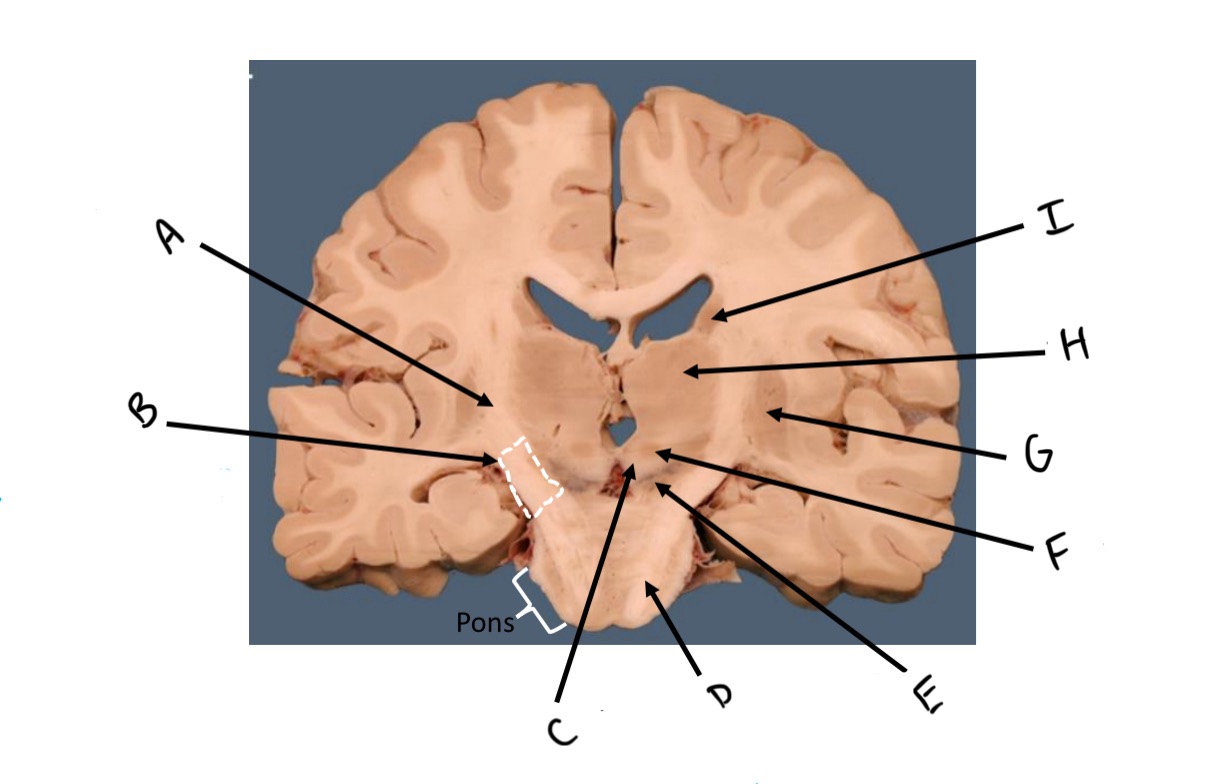
D
Corticospinal Fibers
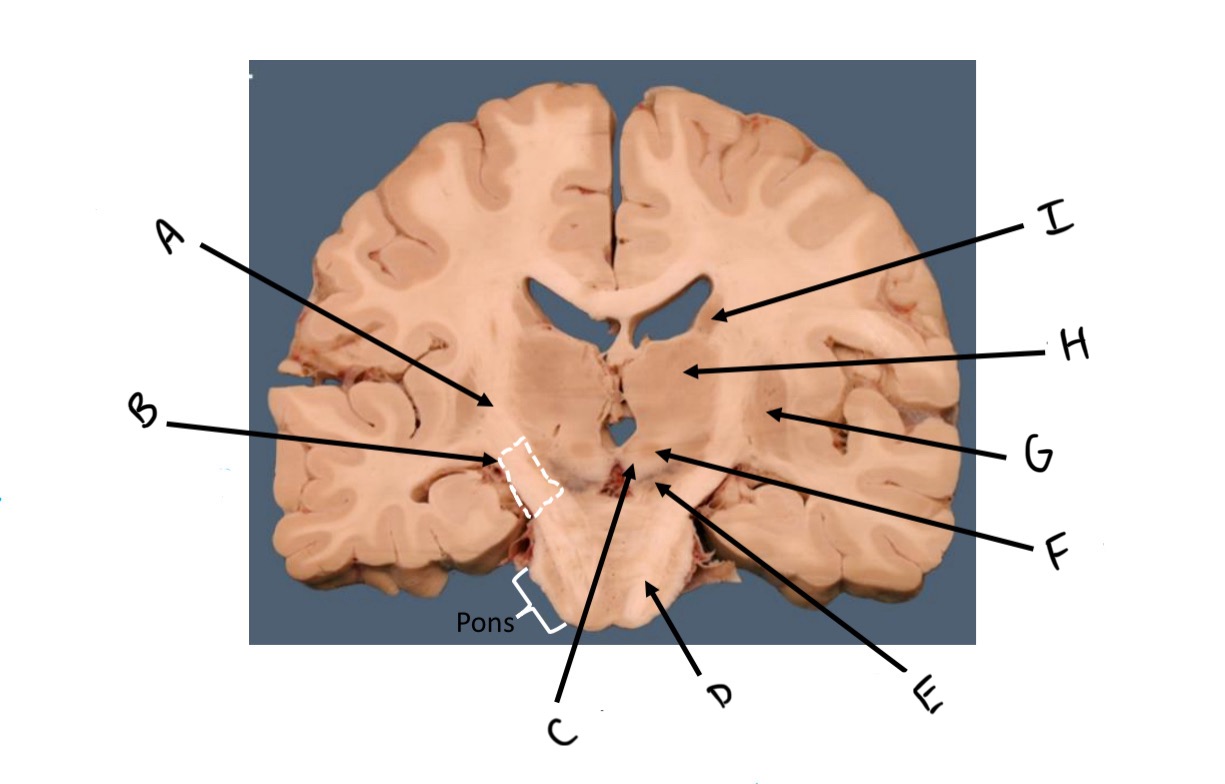
E
Substantia nigra
- produces dopamine
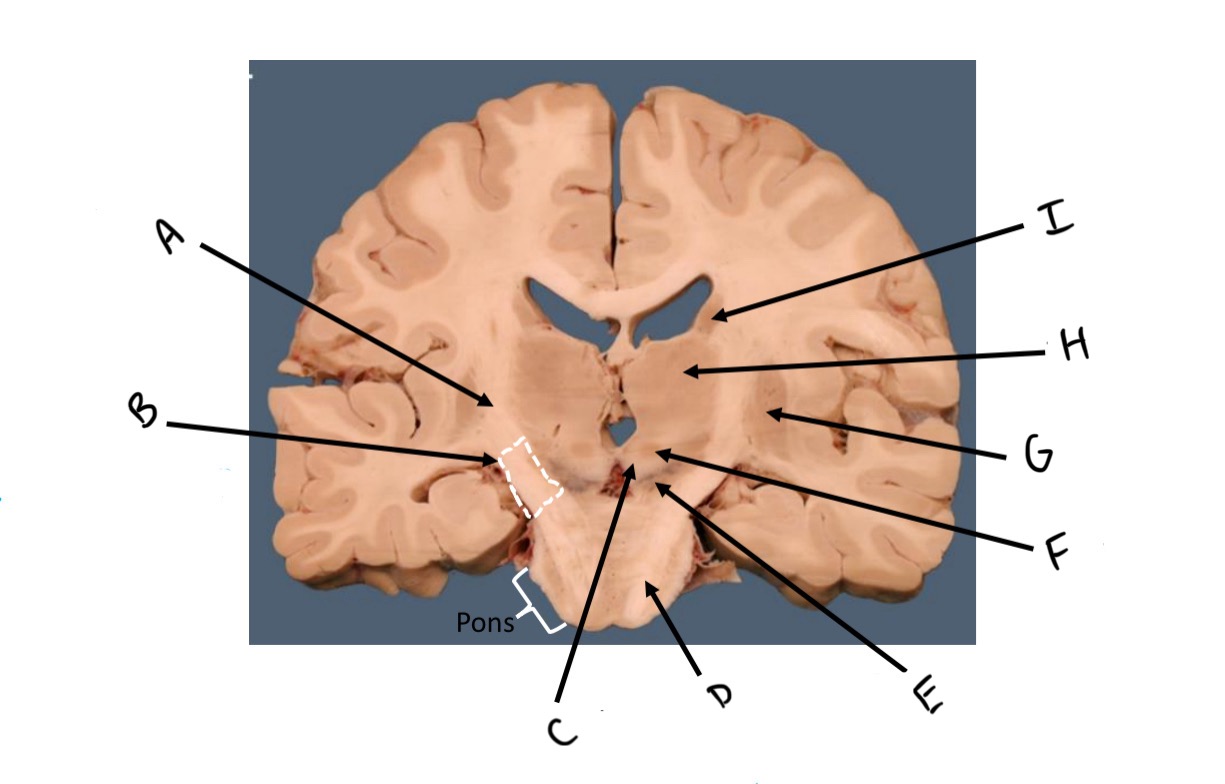
F
Red nucleus
- muscle tone
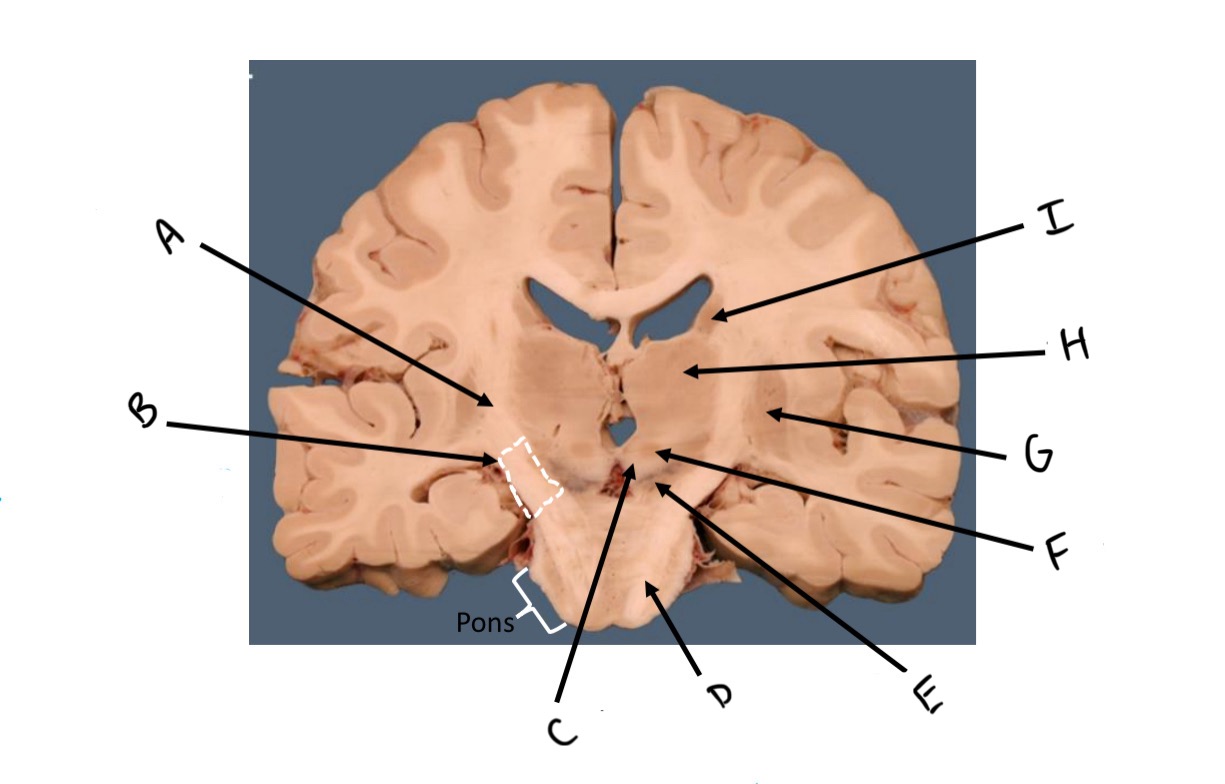
G
Putamen
- maternal behavior
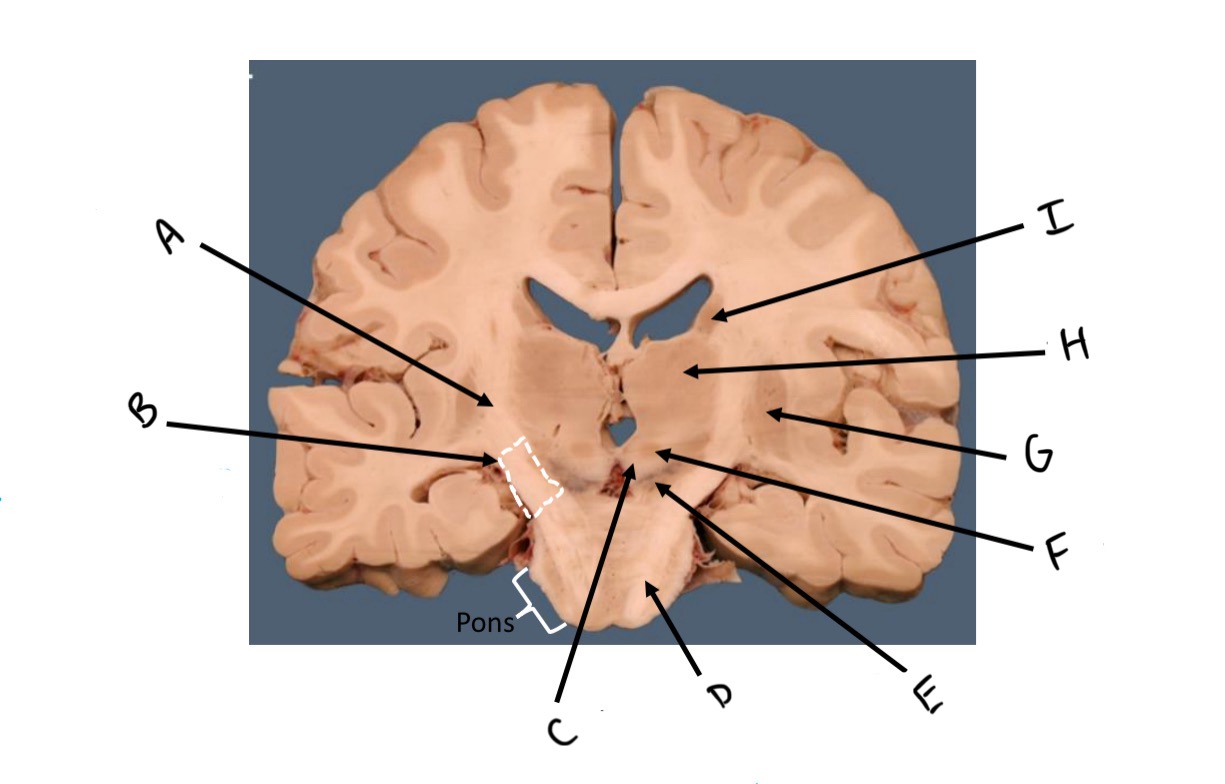
H
Thalamus
- relay information center
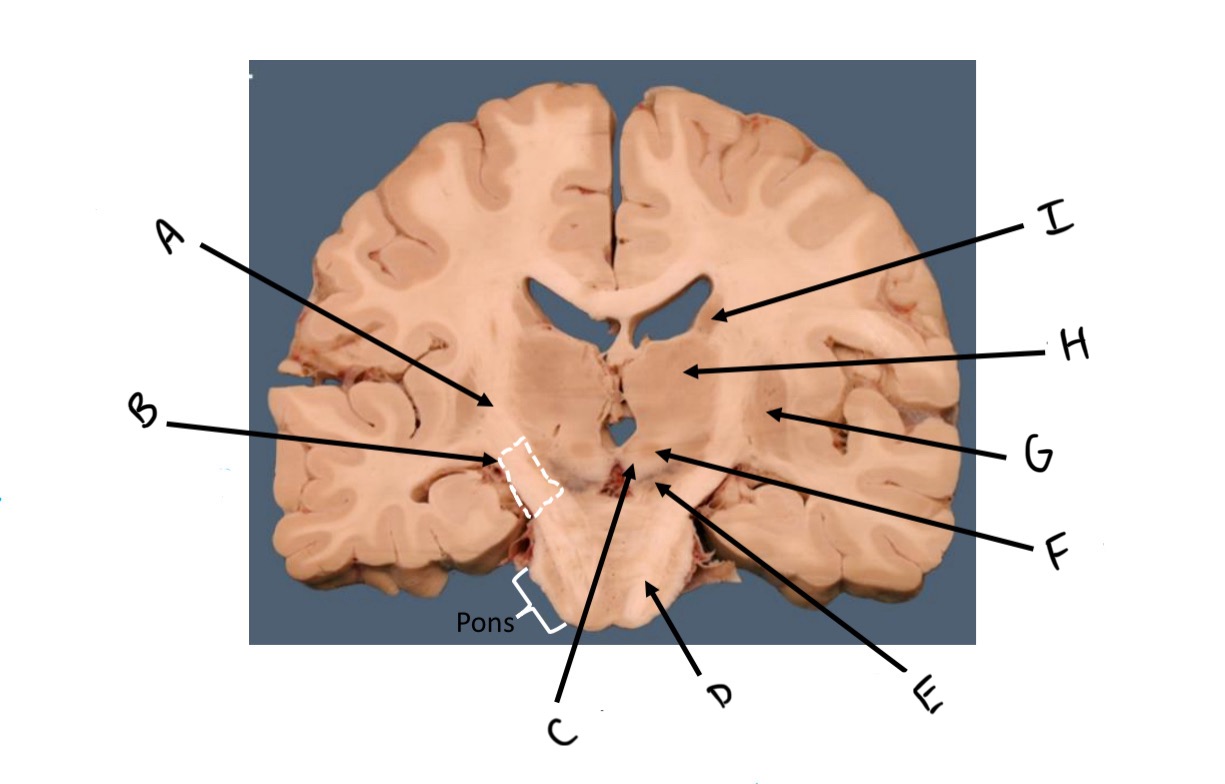
I
Caudate nucleus
- suppresses worry signals
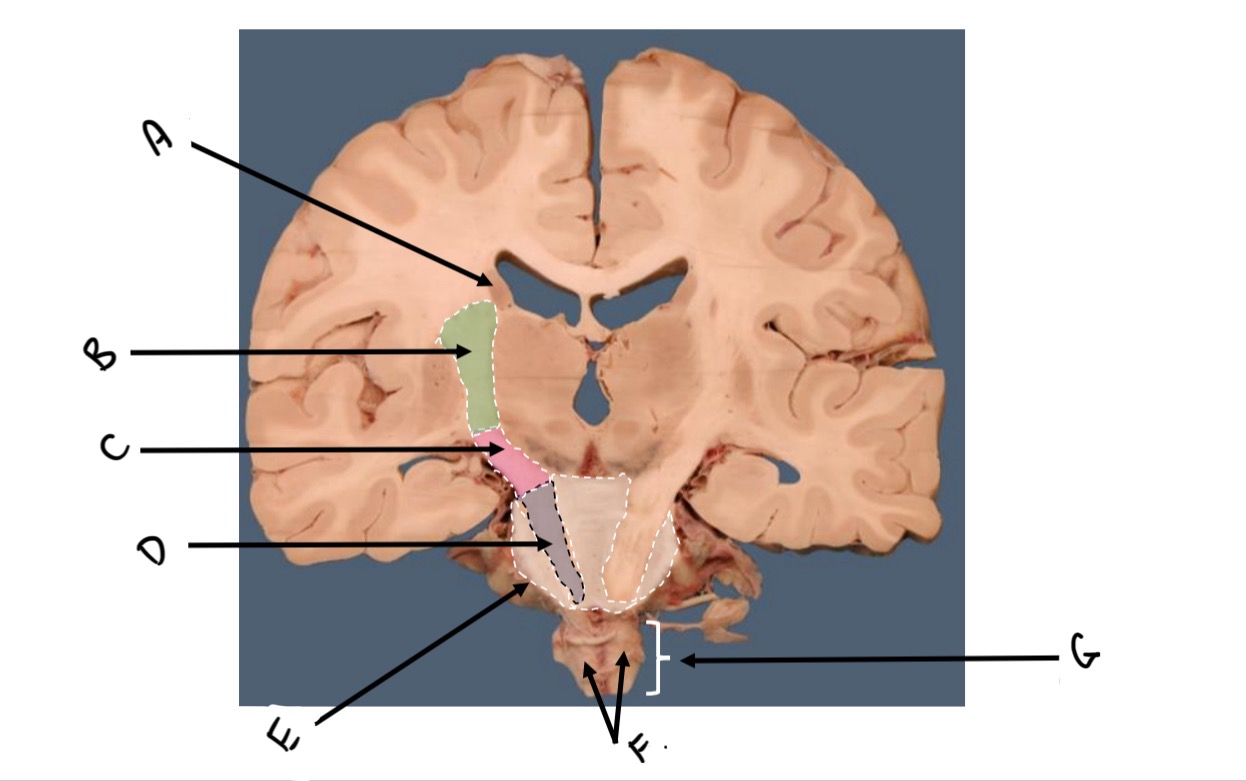
A
Caudate nucleus
- suppress worry signals
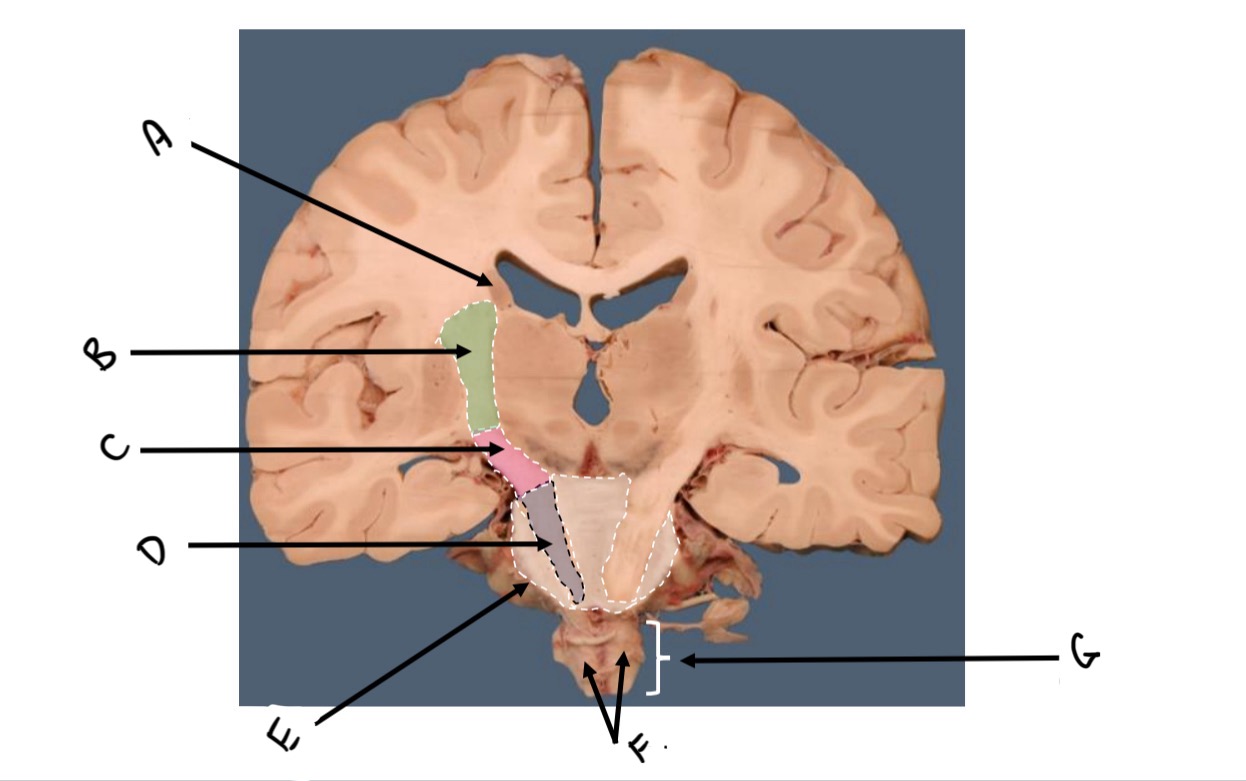
B
Internal capsule
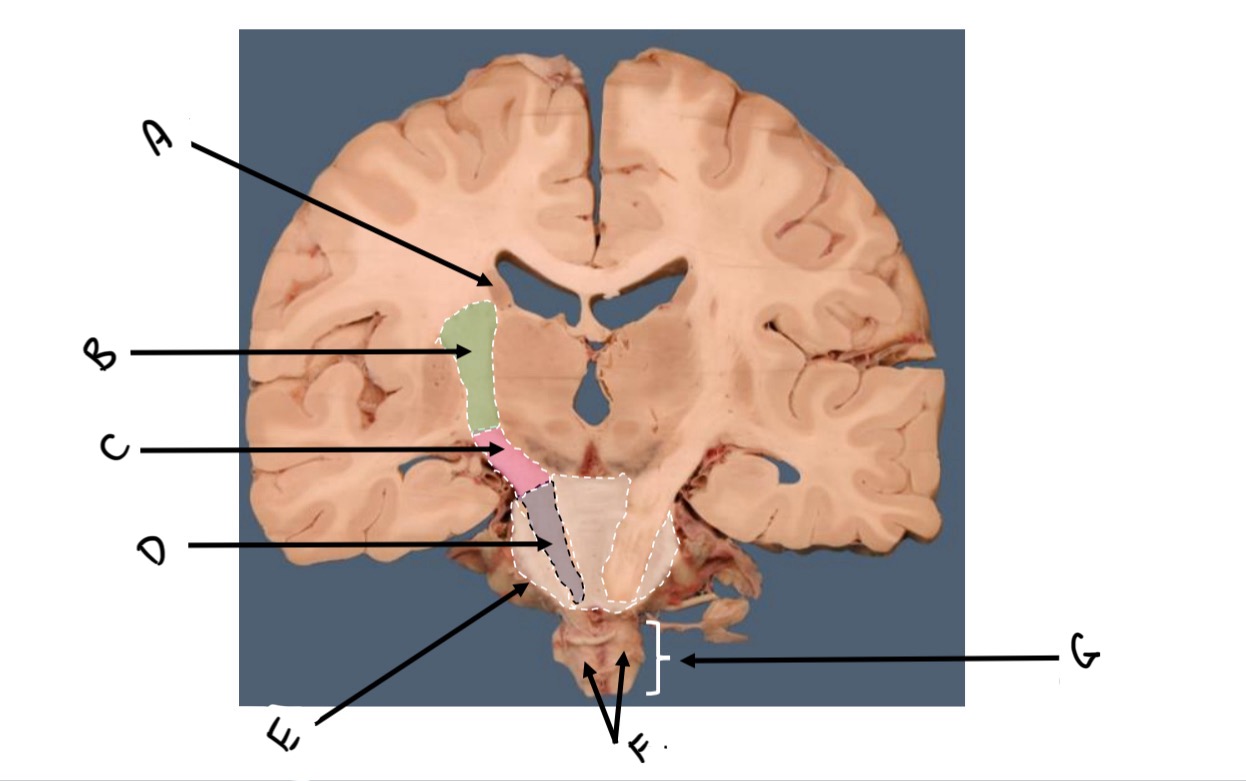
C
Crus cerebri
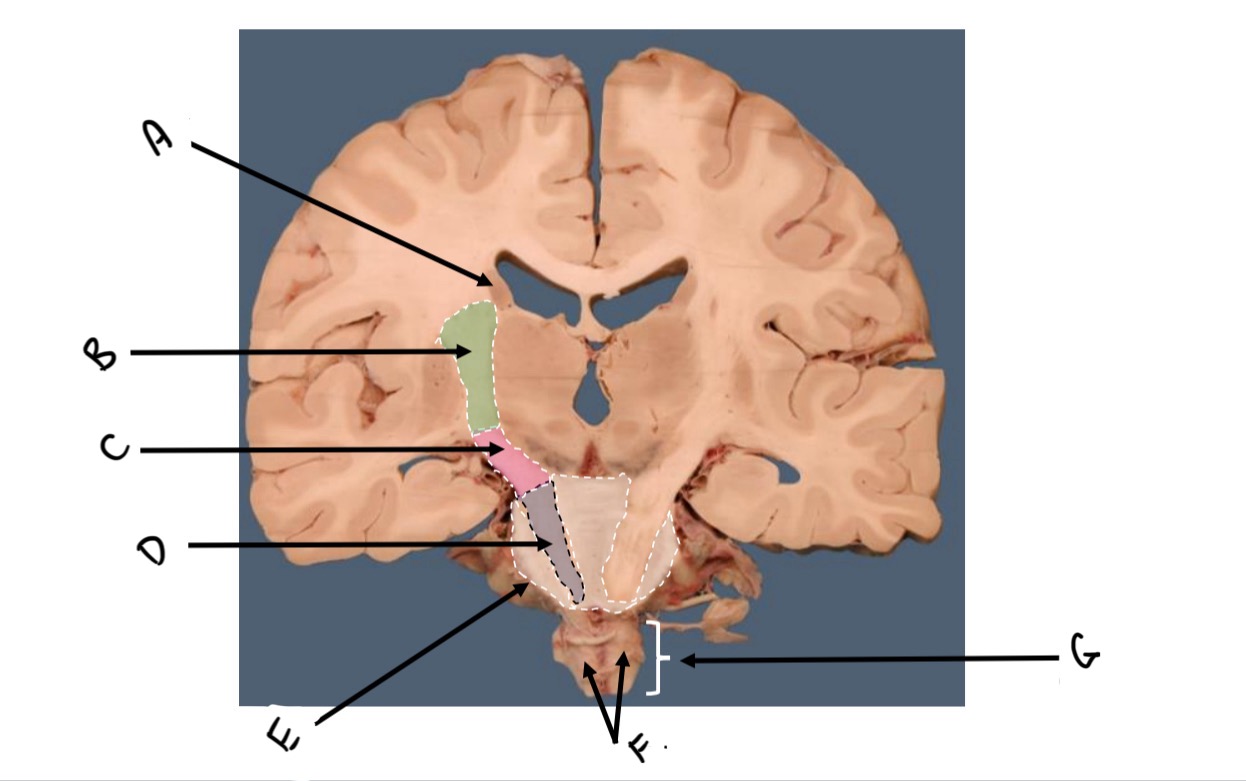
D
Corticospinal fibers
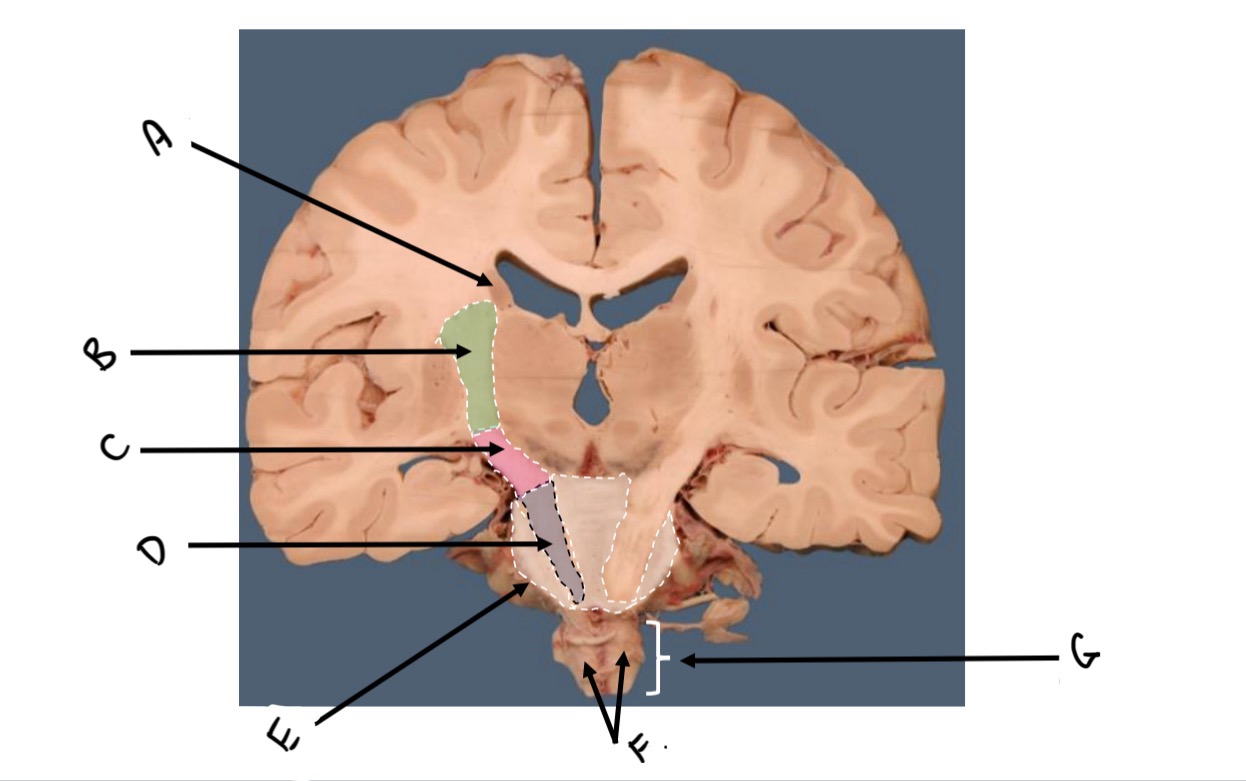
E
Basilar pons
- transmits fibers

F
Pyramids
- voluntary muscle movement
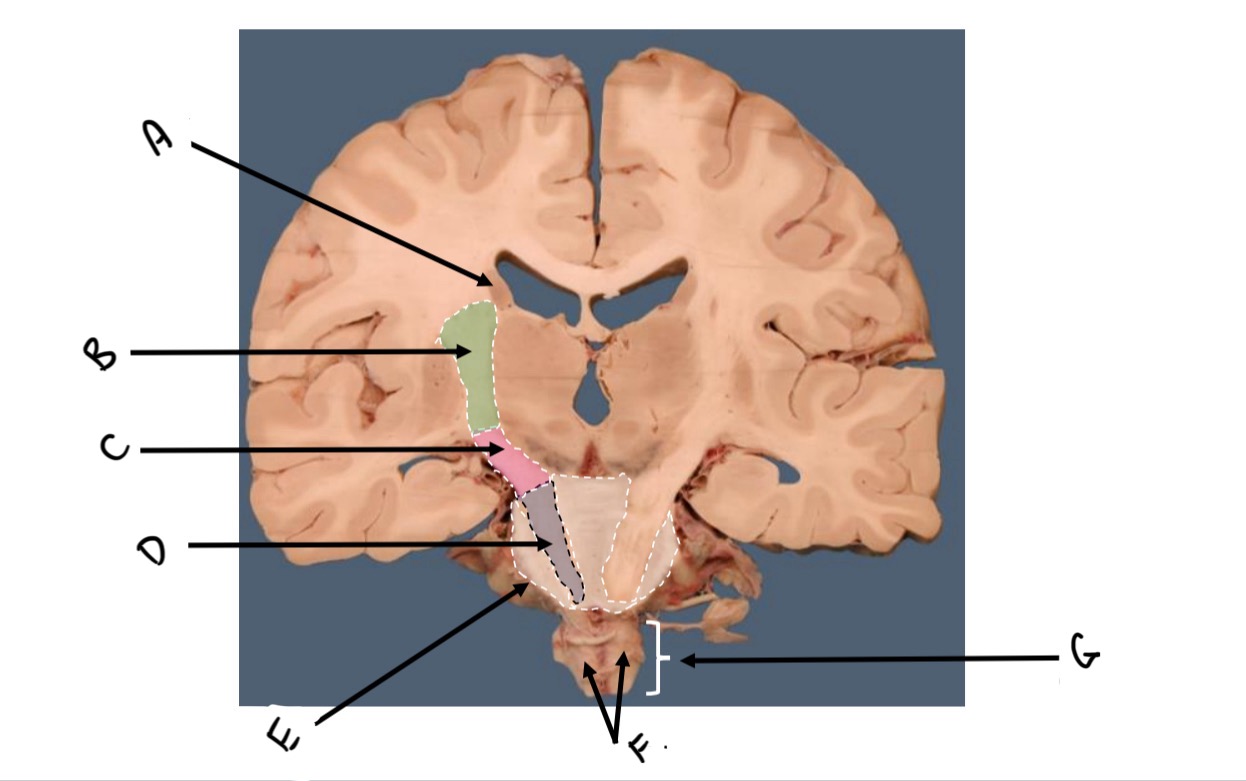
G
Medulla
- controls vital functions
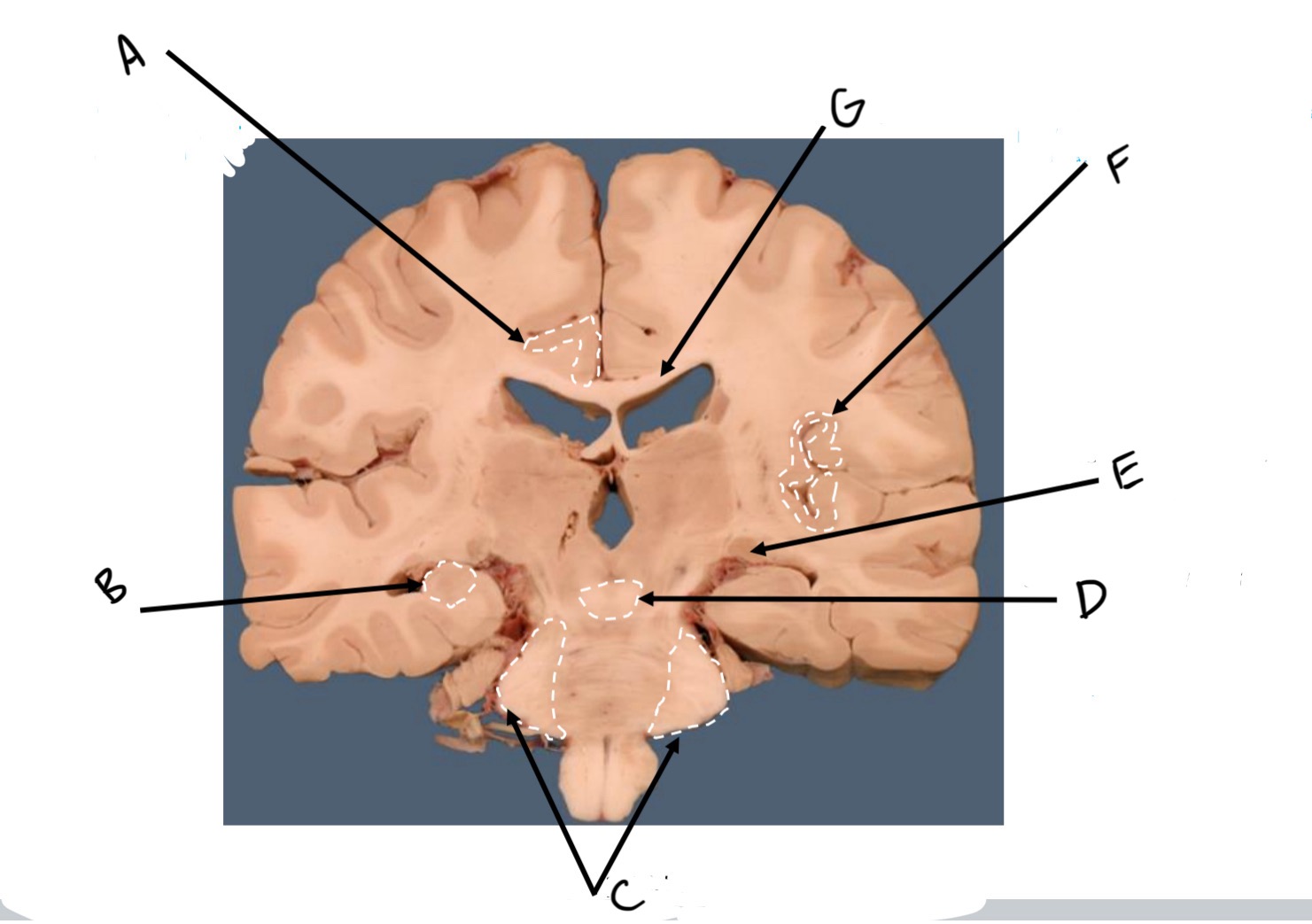
A
Cingulate gyrus
- emotion and behavior
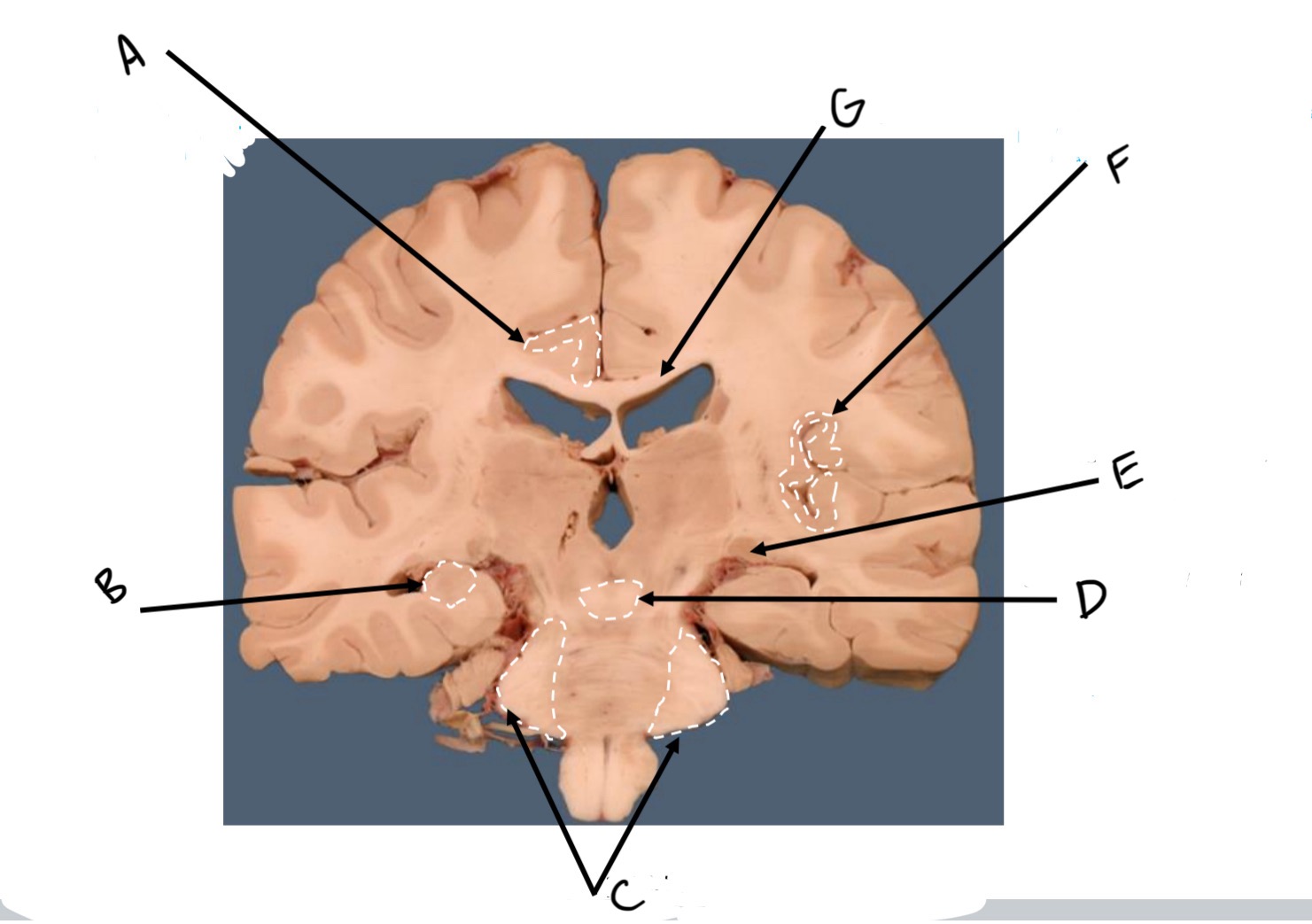
B
Hippocampus
- long term memory

C
Middle cerebellar peduncle
- carries motor signals
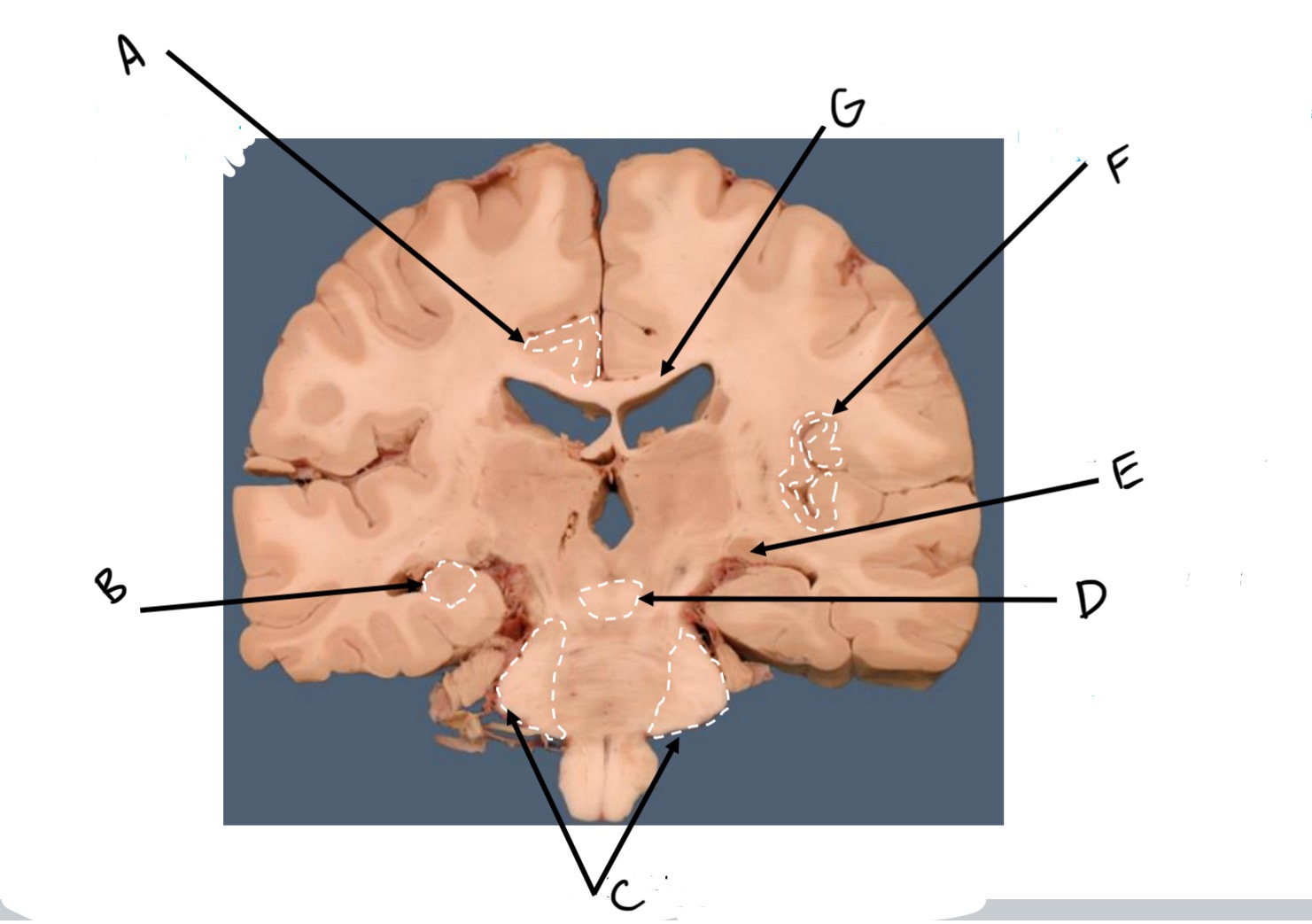
D
Superior cerebellar peduncle
- carries info from cerebellum to brainstem
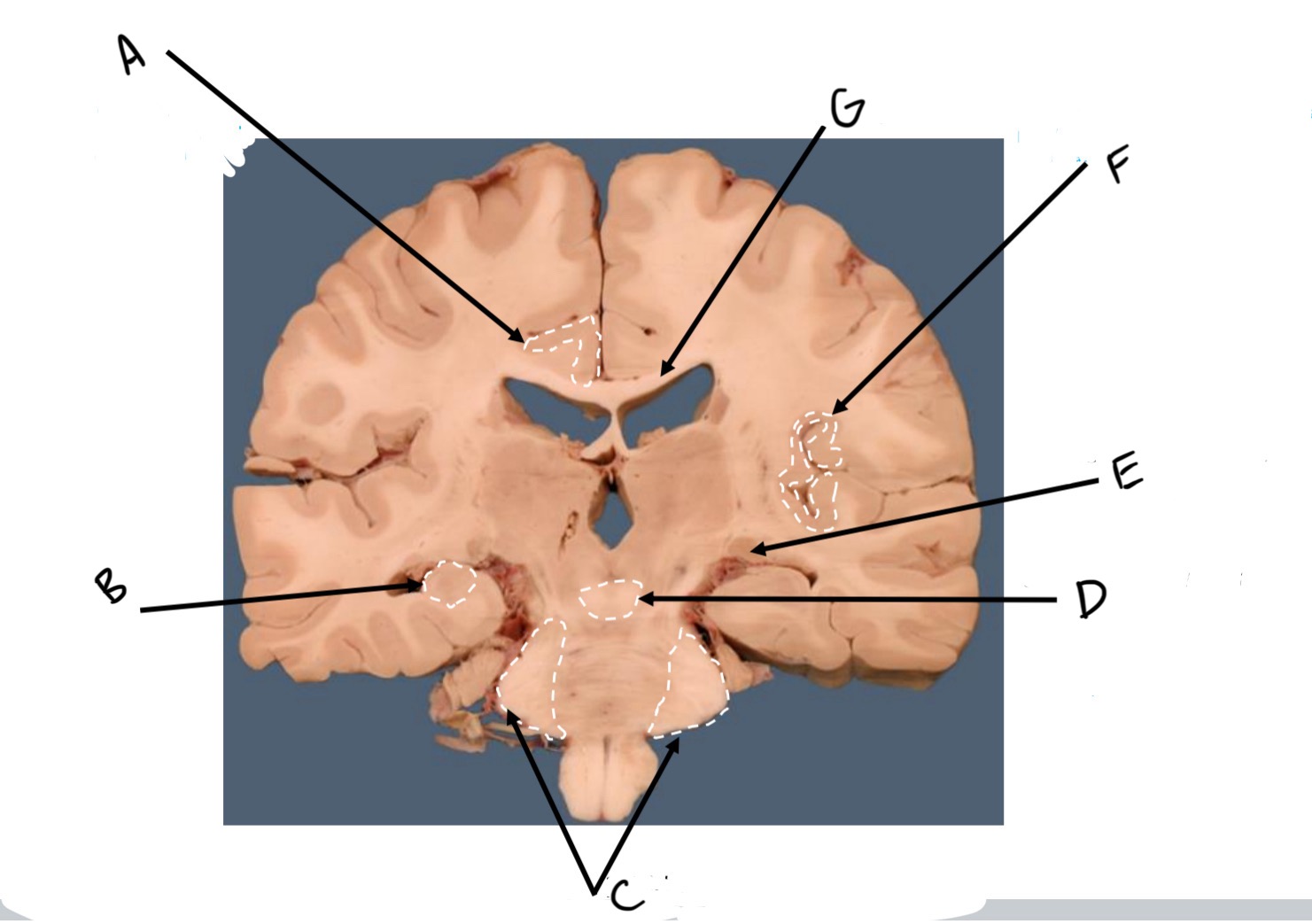
E
Lateral geniculate nucleus
- relays visual information
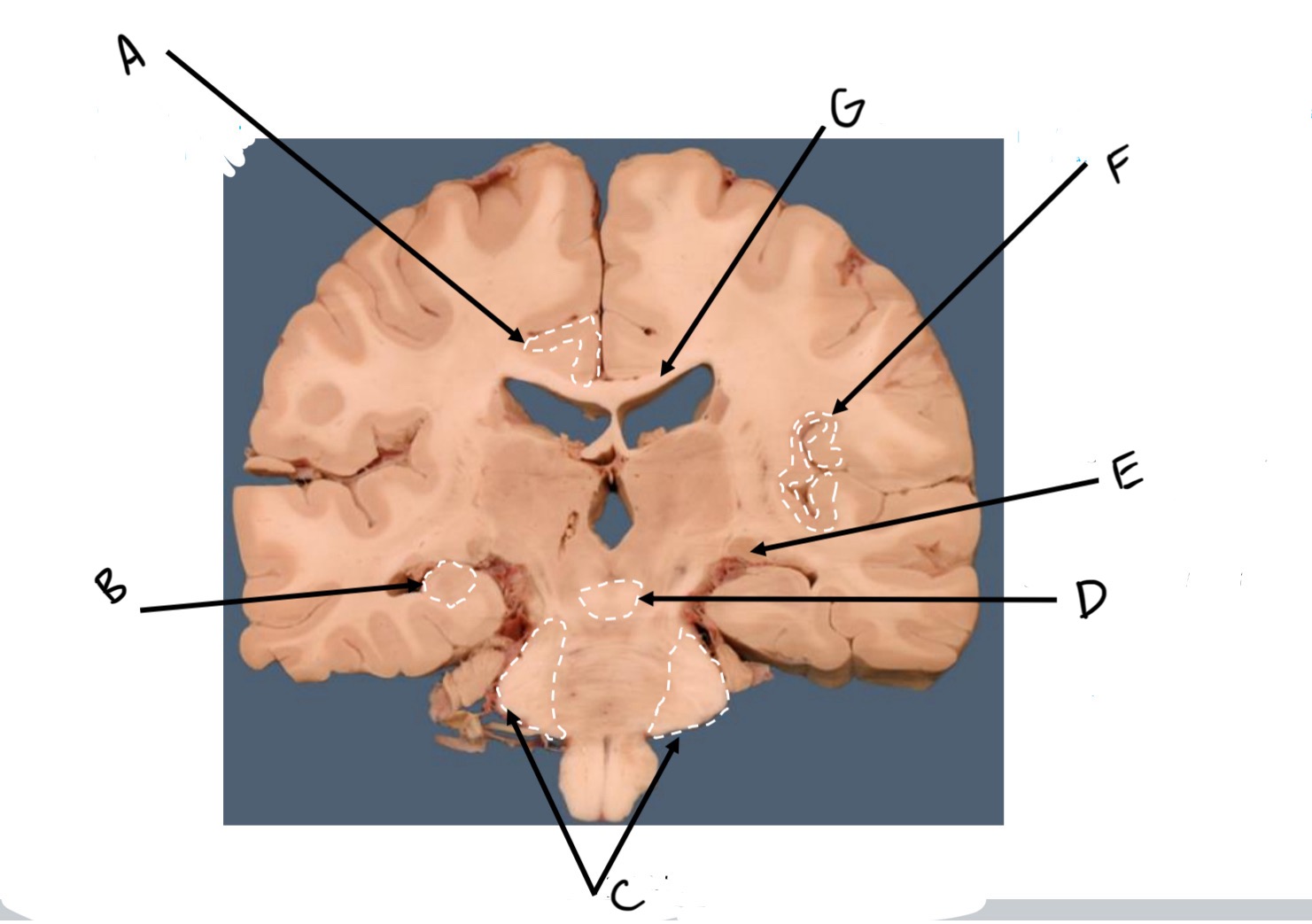
F
Insula
- taste and viscera sensation
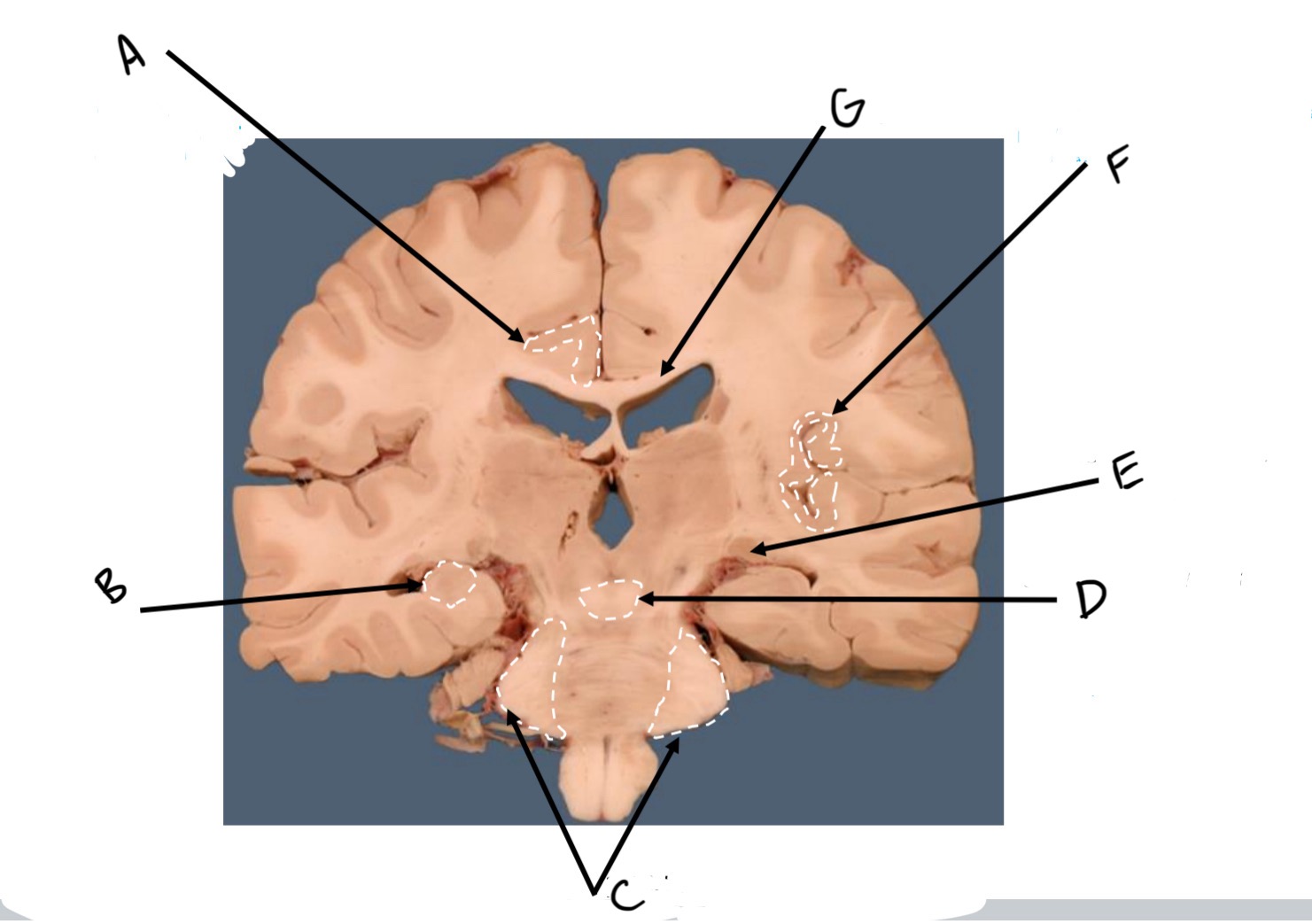
G
Corpus callosum
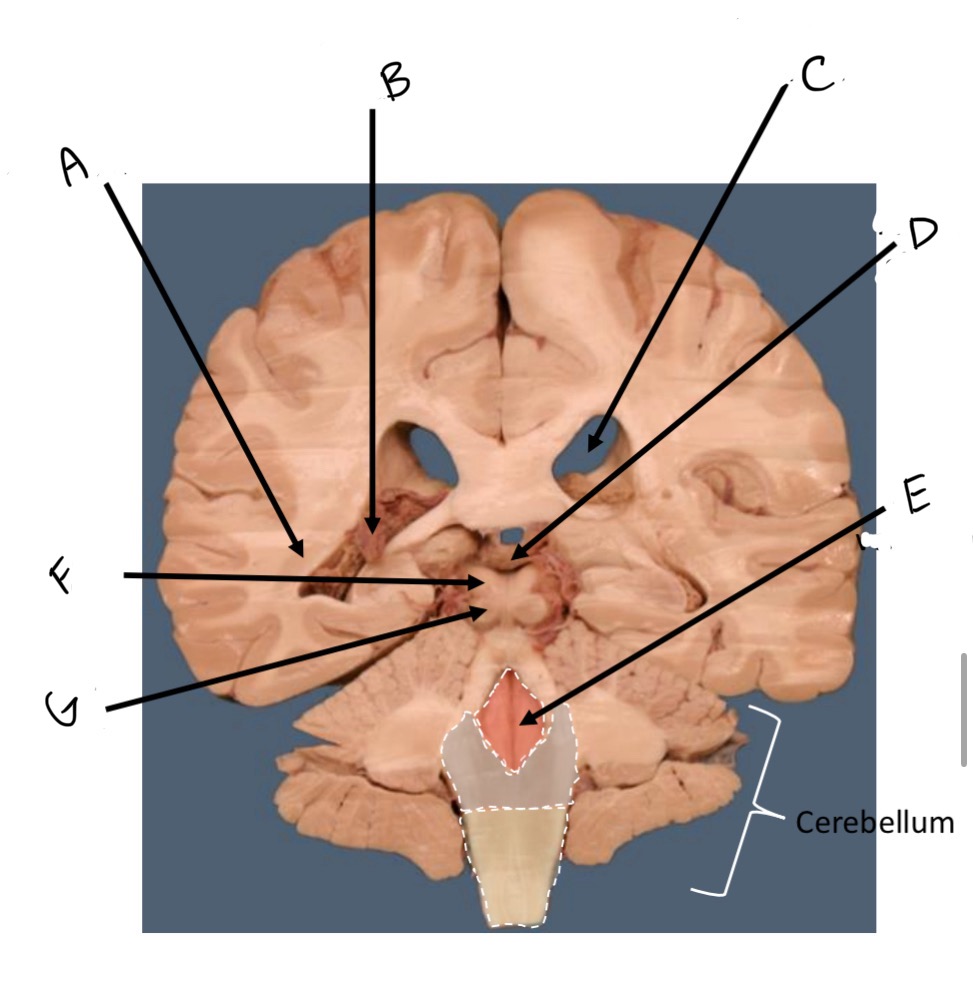
A
Optic radiations
- visual info from retina to cortex
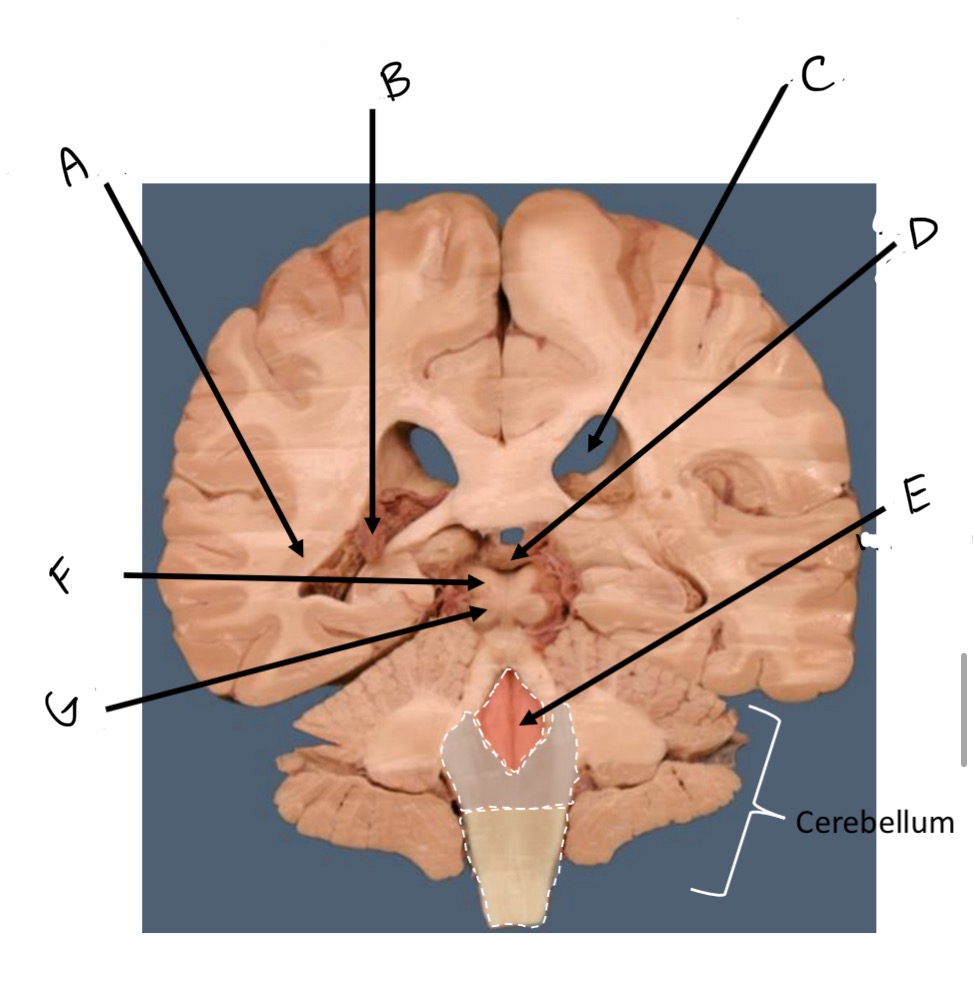
B
choroid plexus
- produces CSF
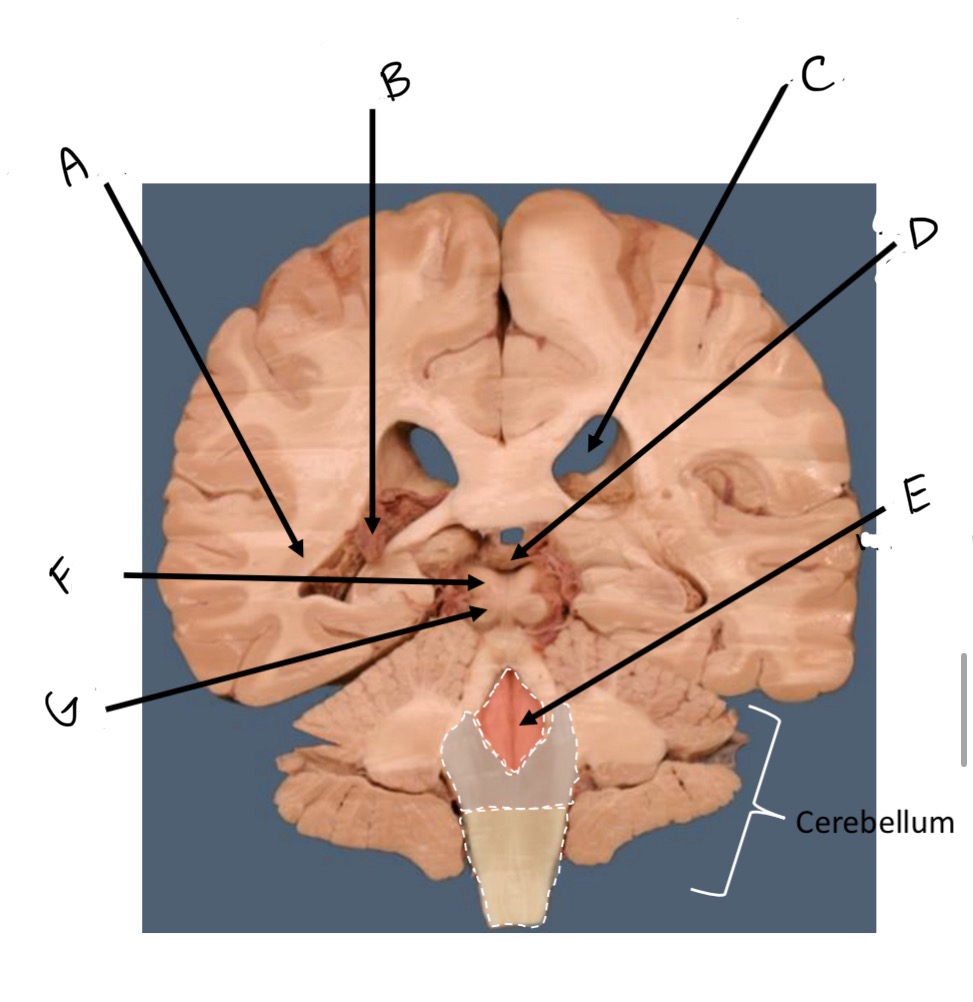
C
lateral ventricle
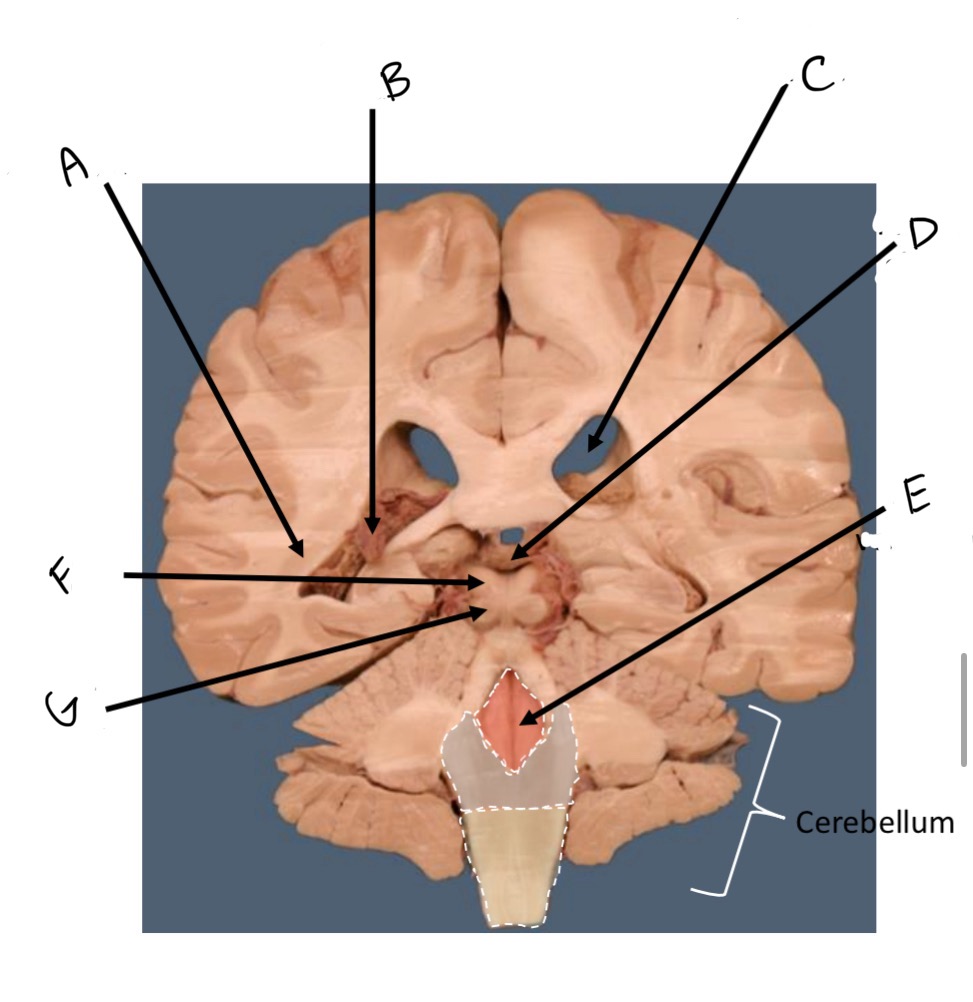
D
pineal gland
- produces melatonin
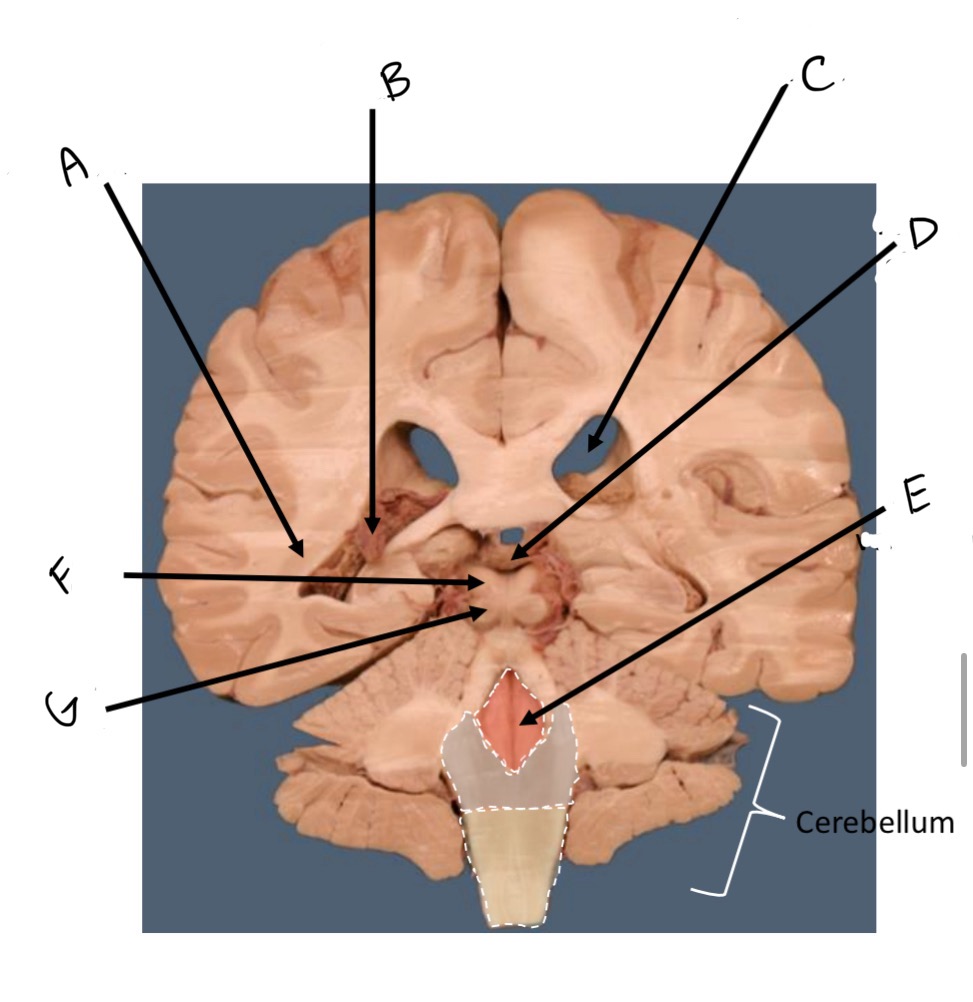
E
4th ventricle
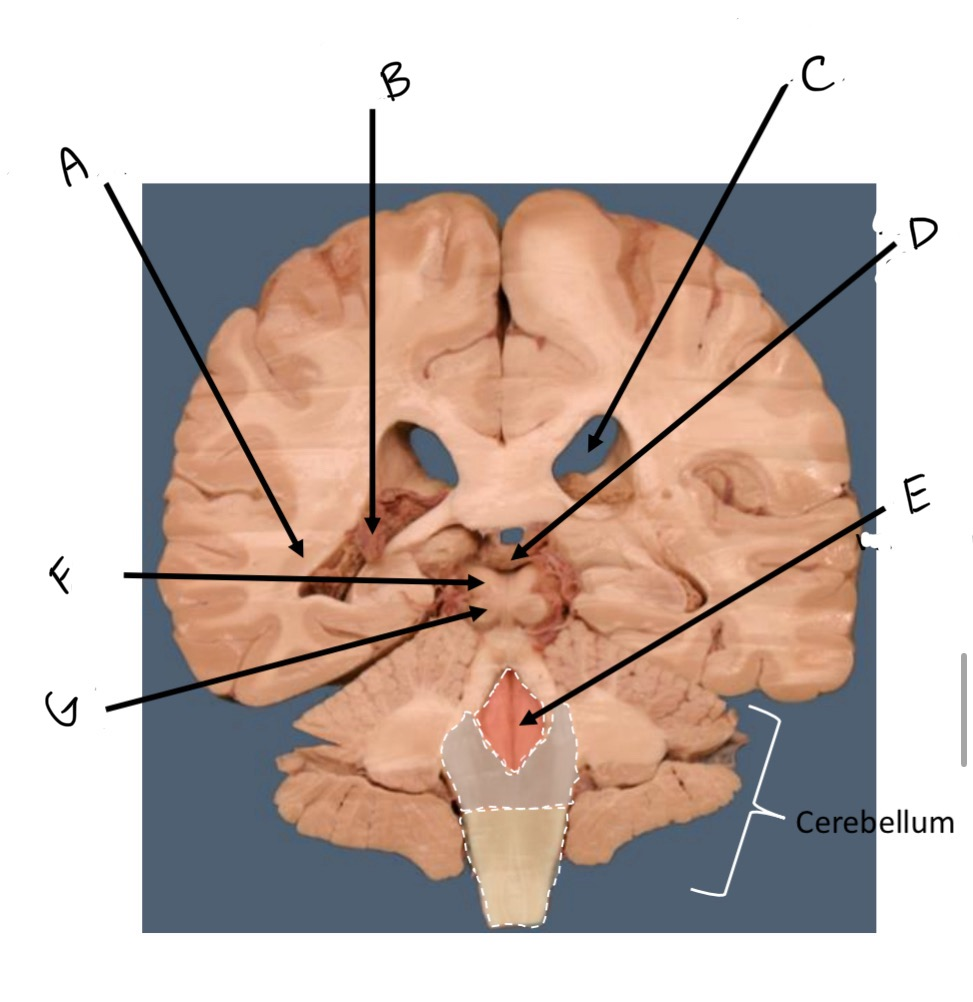
F
Superior colliculus
- visual recognition
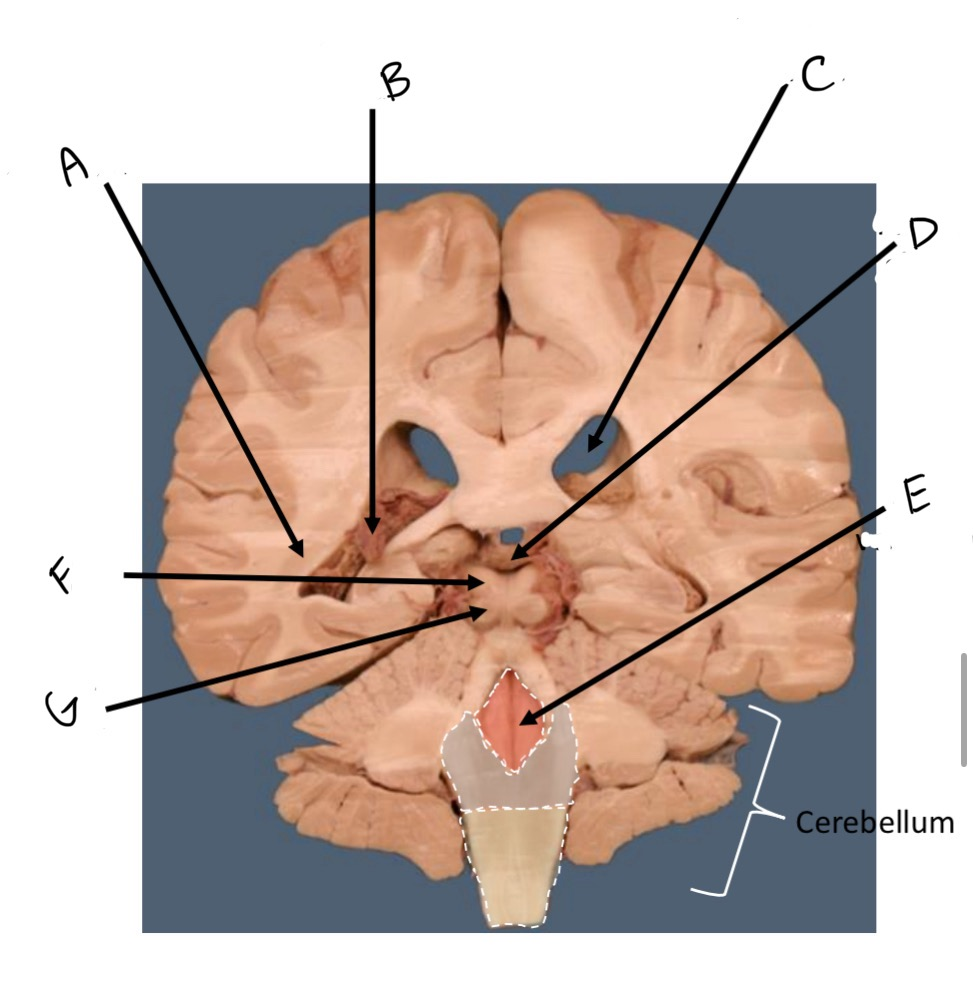
G
Inferior colliculus
- auditory
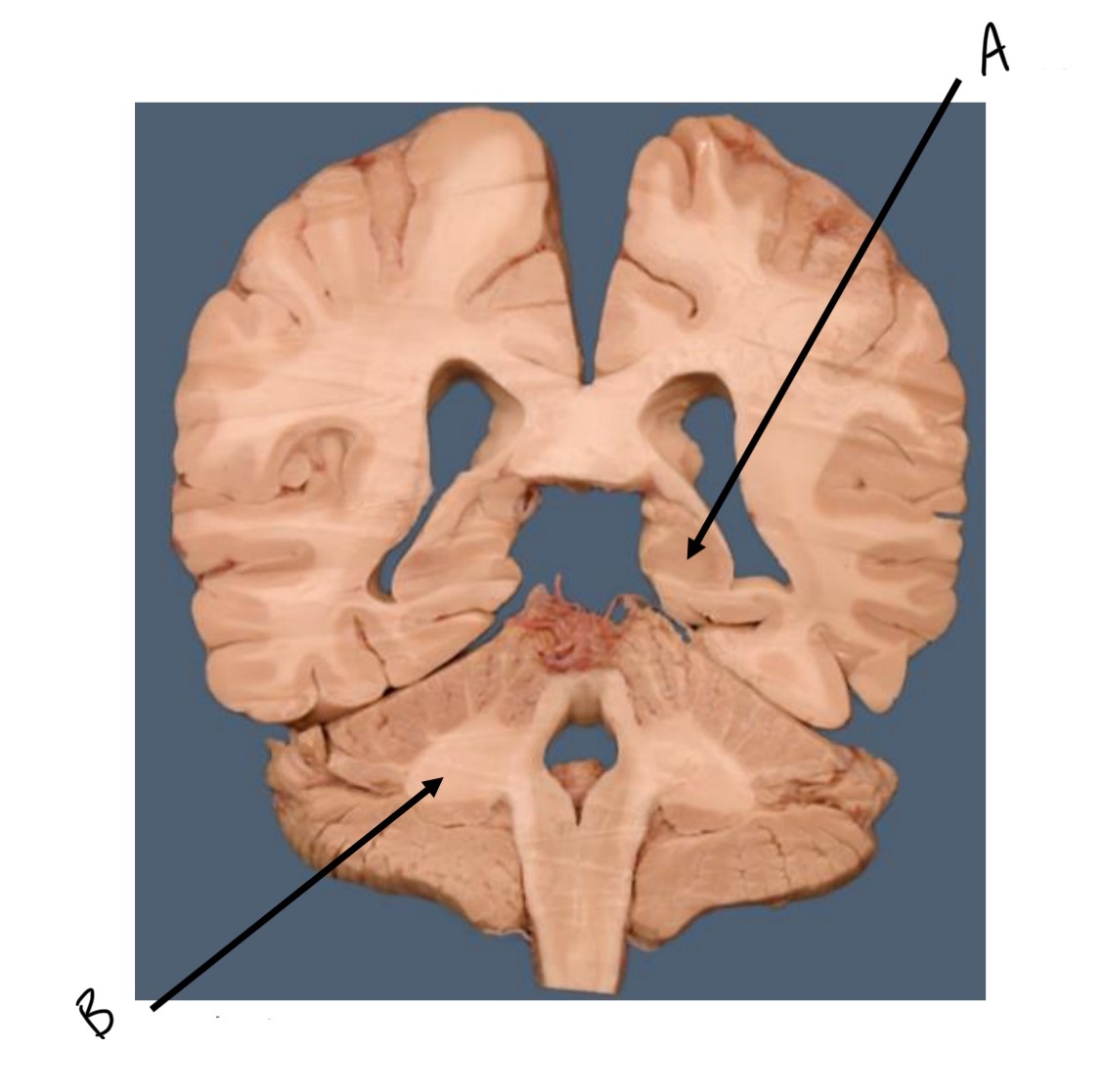
A
Hippocampus
- memory and learning
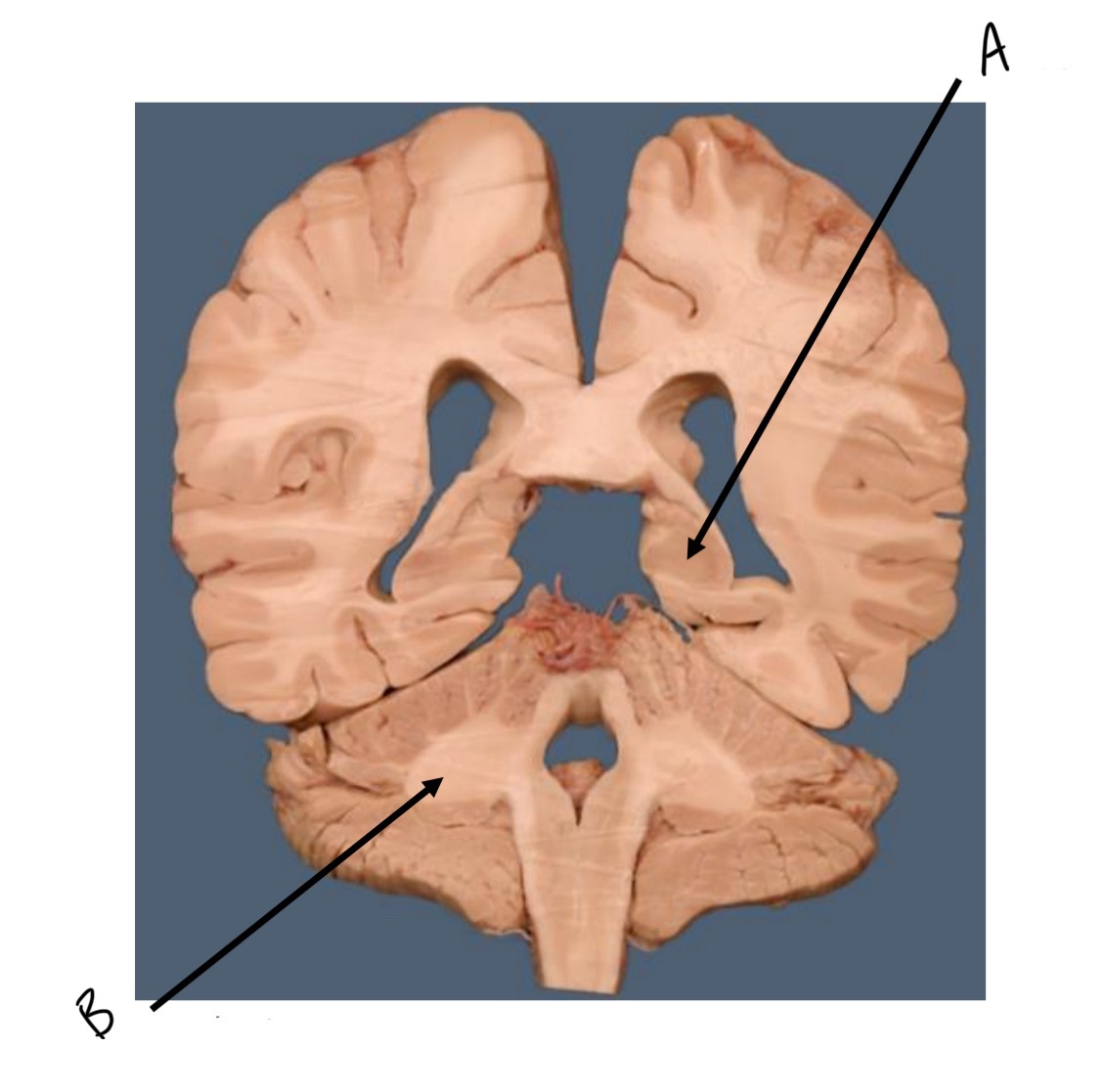
B
Middle Cerebellar peduncle
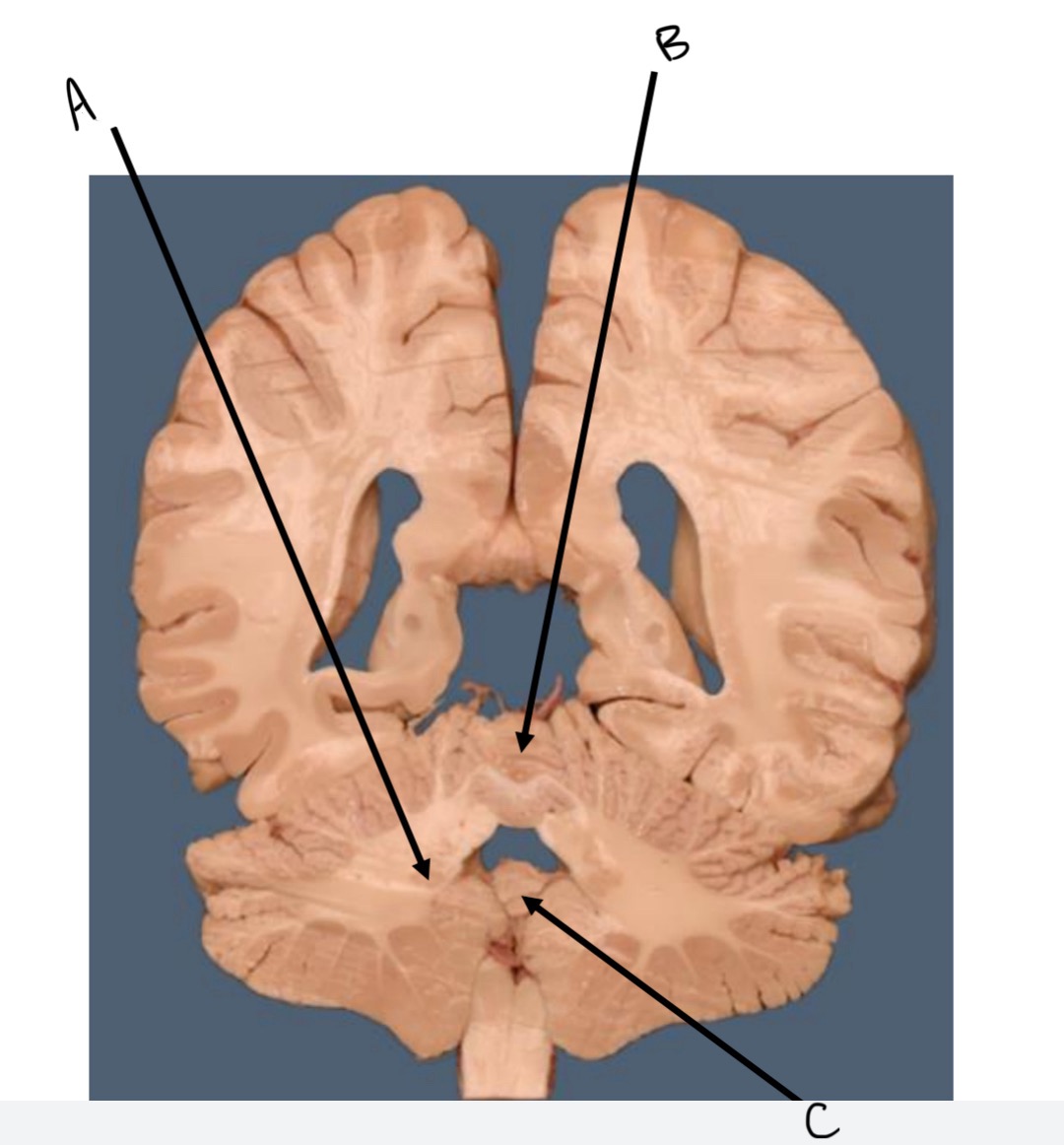
A
Dentate nucleus
- voluntary movement
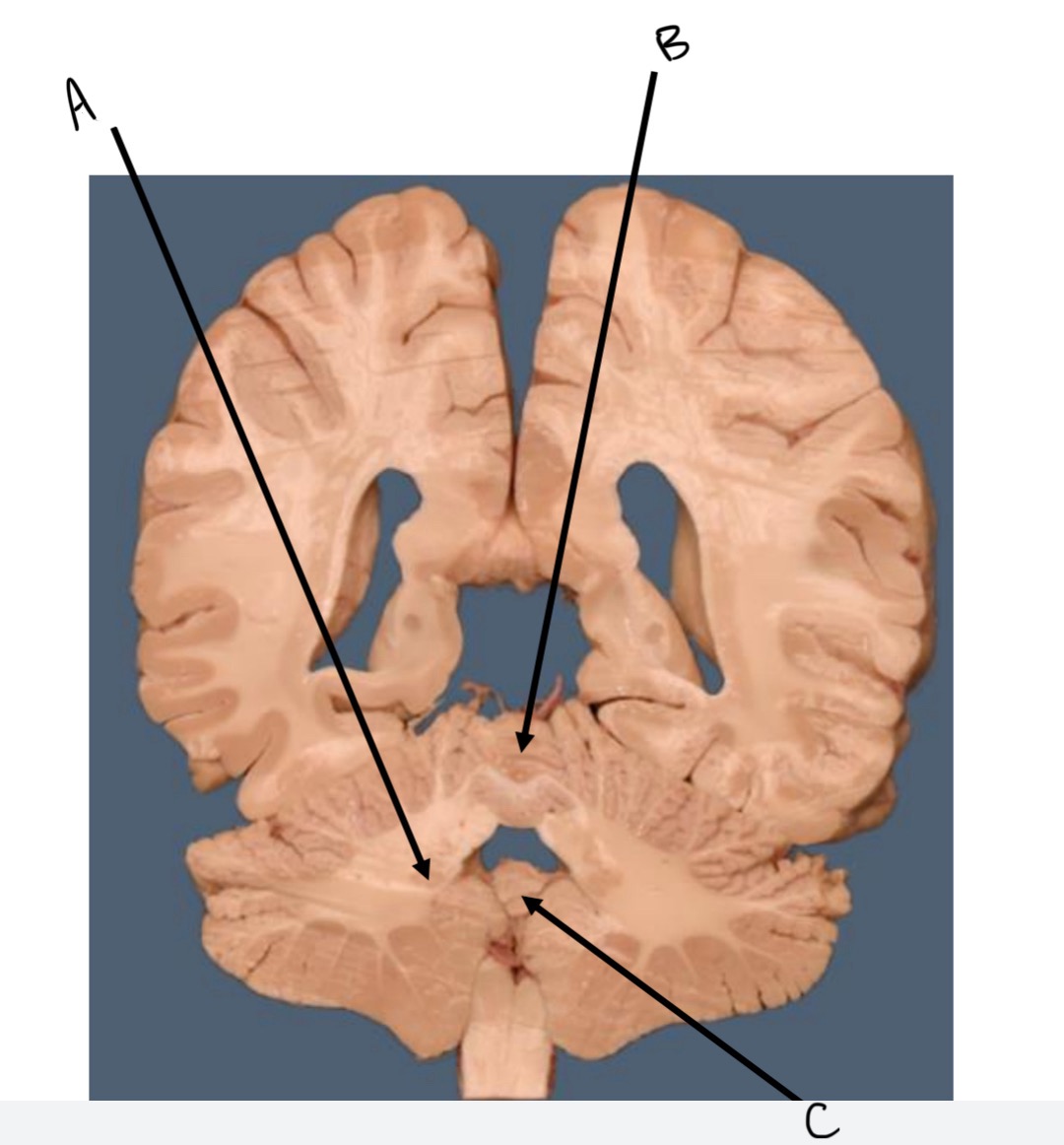
B
Superior vermis
- central body movement
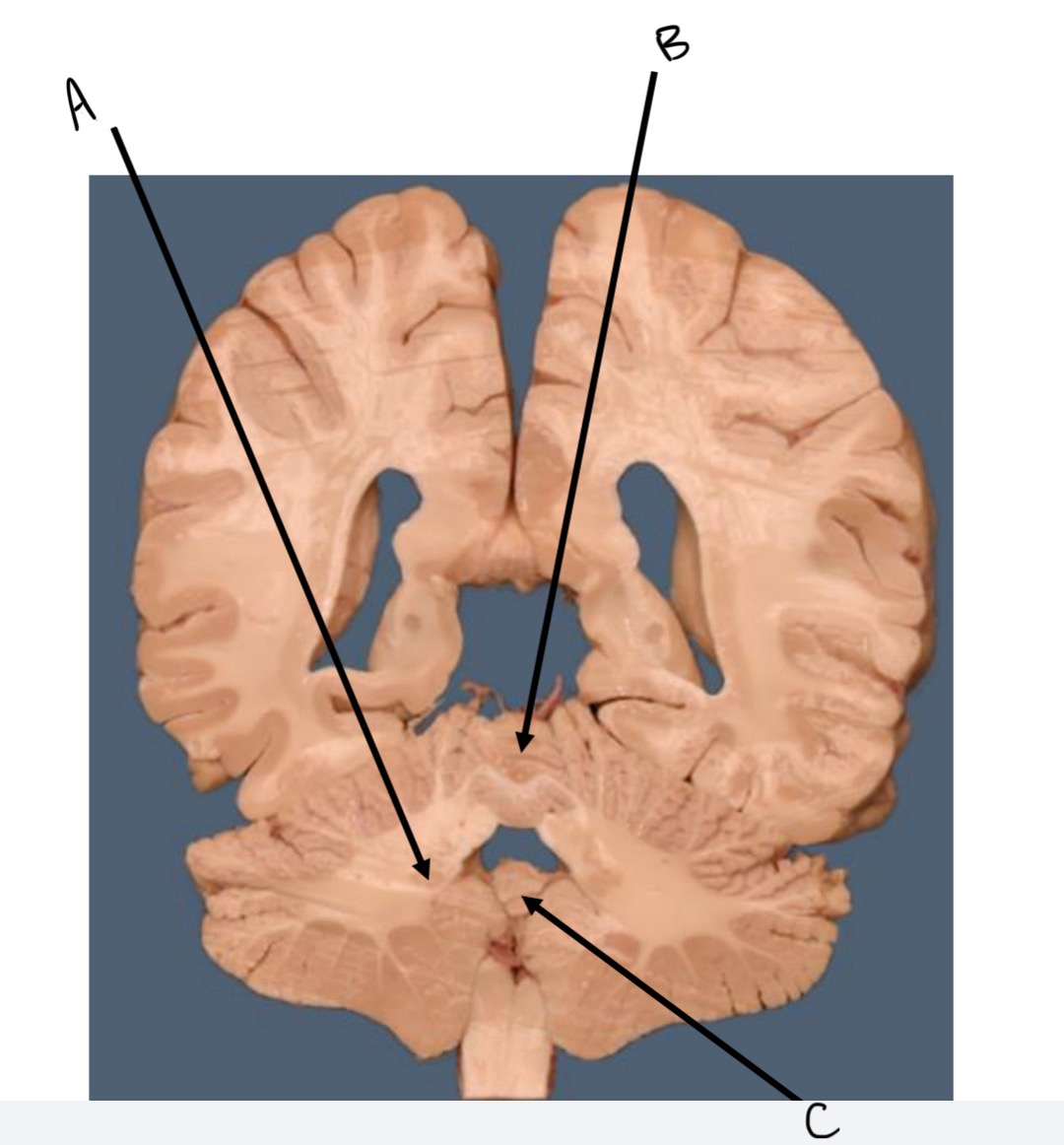
C
Inferior vermis
- posture
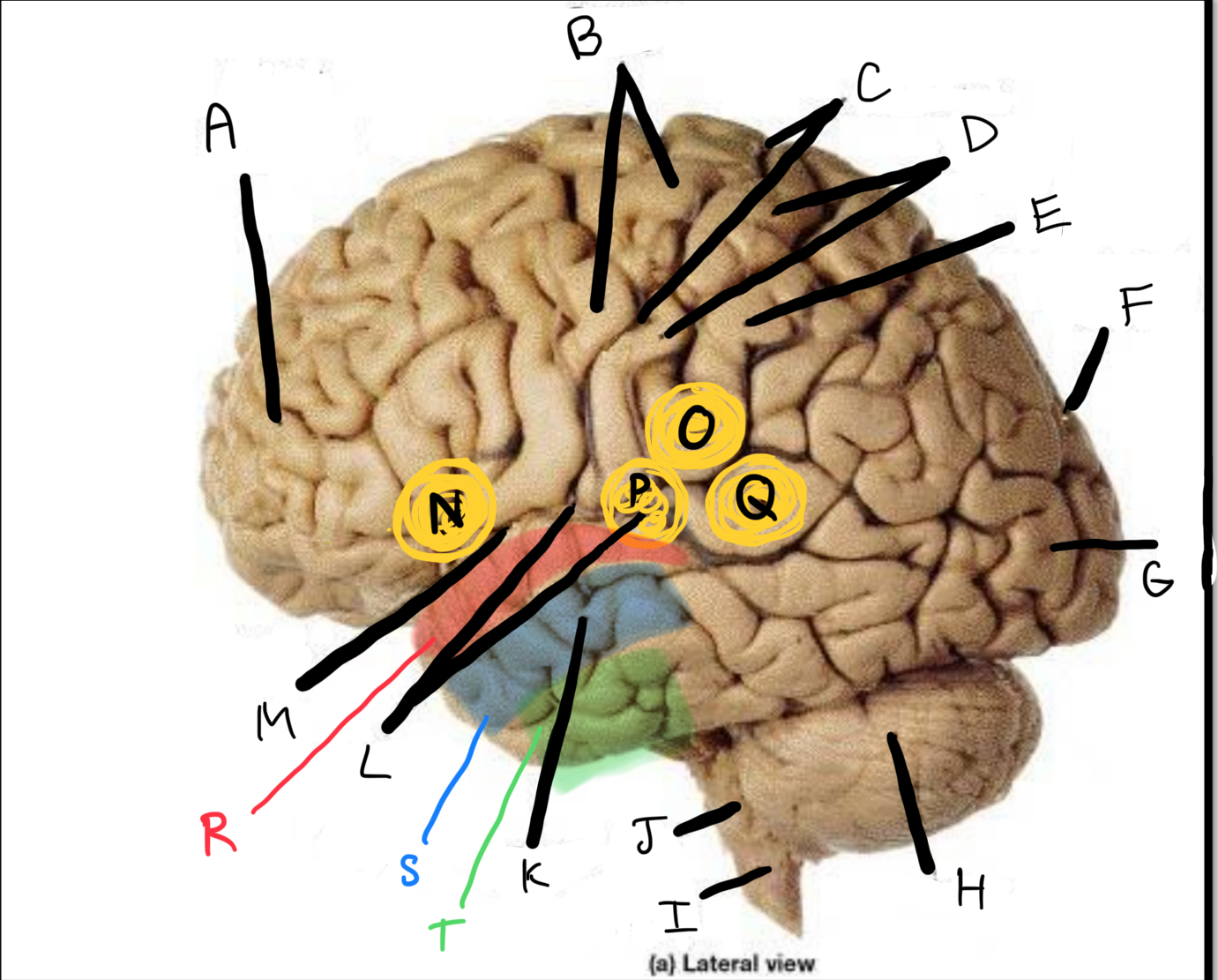
A
Frontal lobe
(Emotion, Personality, Decision Making, Movement, Memory, Planning)
Prefrontal cortex (empathy)
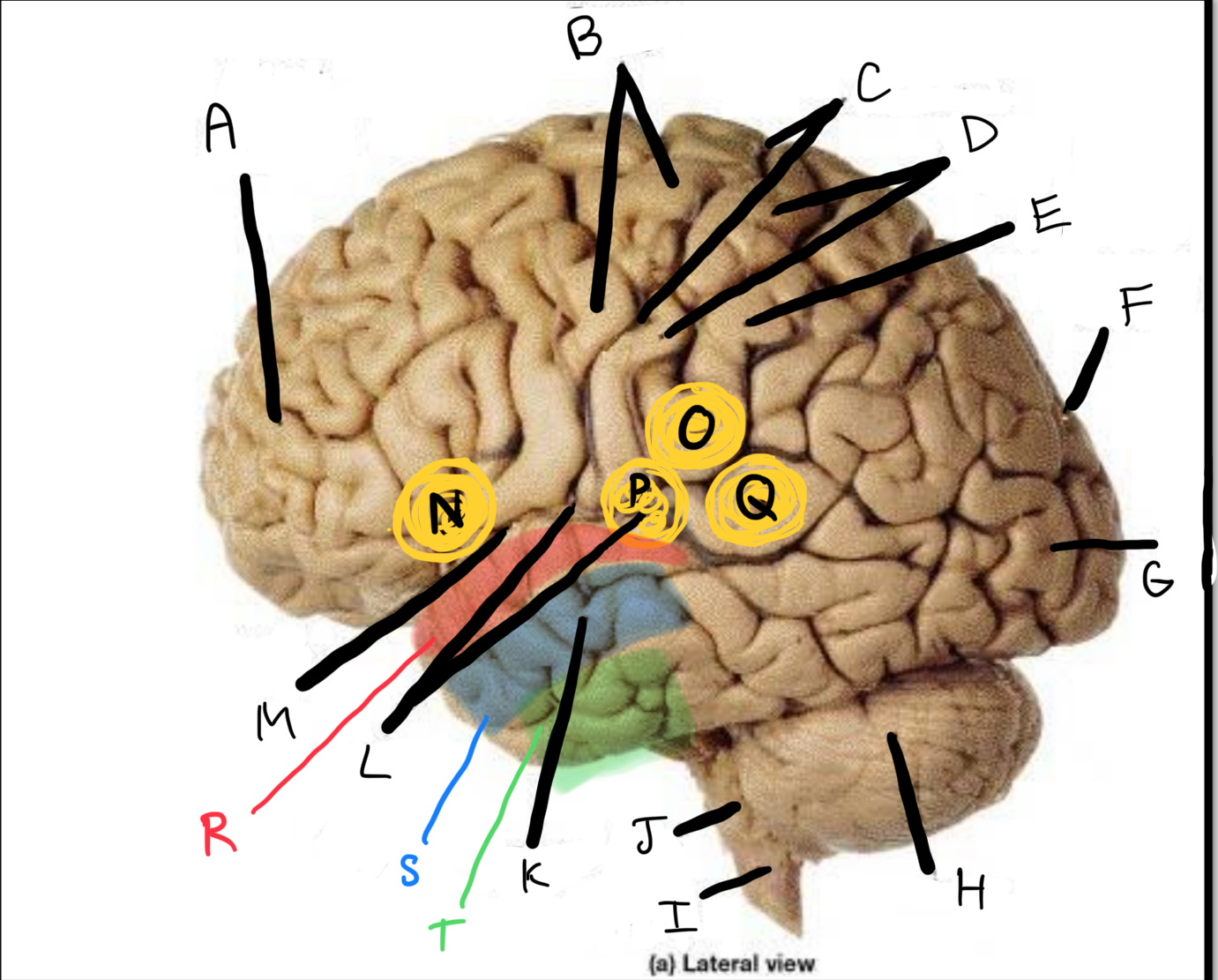
B
Precentral gyrus
- (motor) voluntary movement
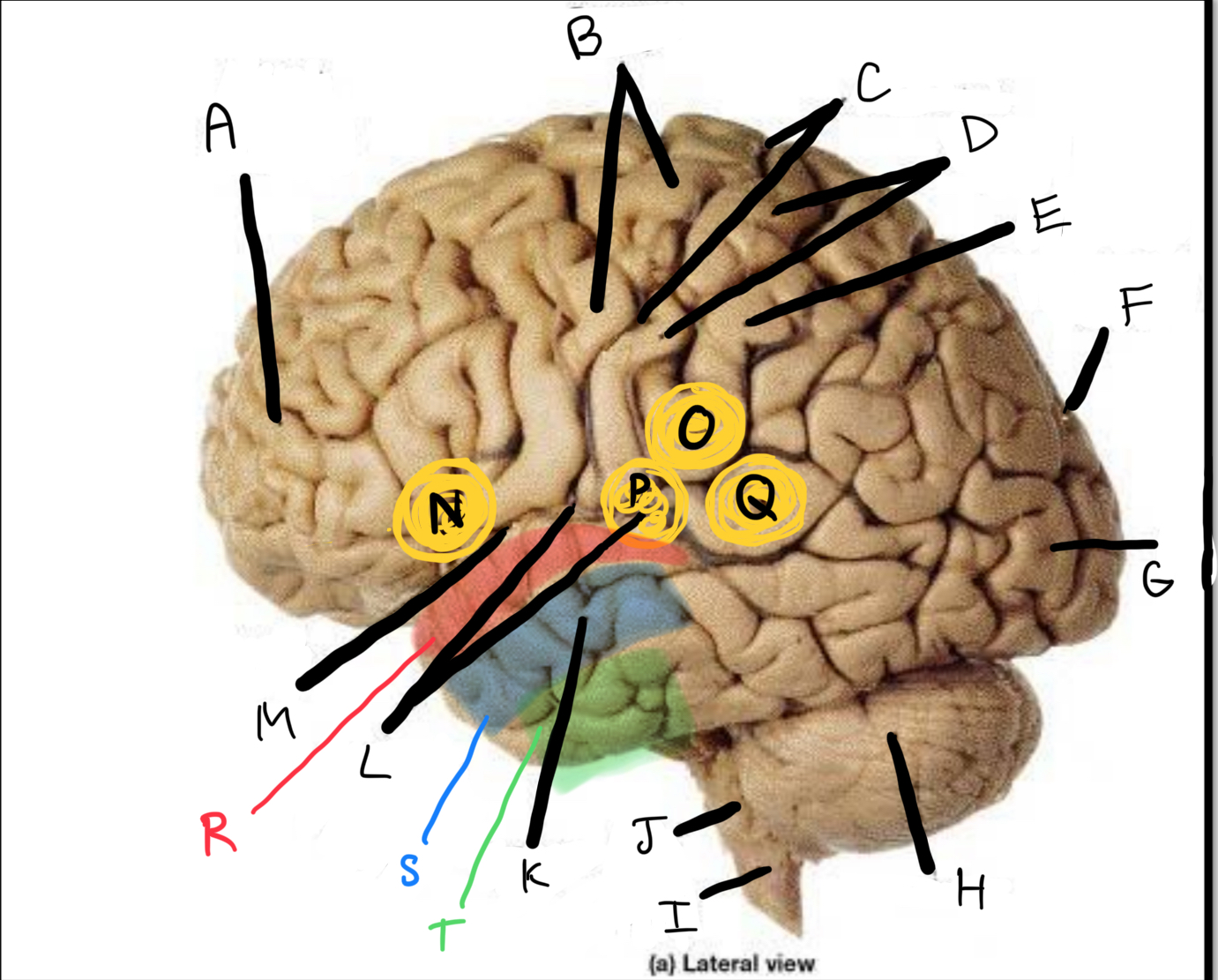
C
Central sulcus
Separates frontal and parietal lobe
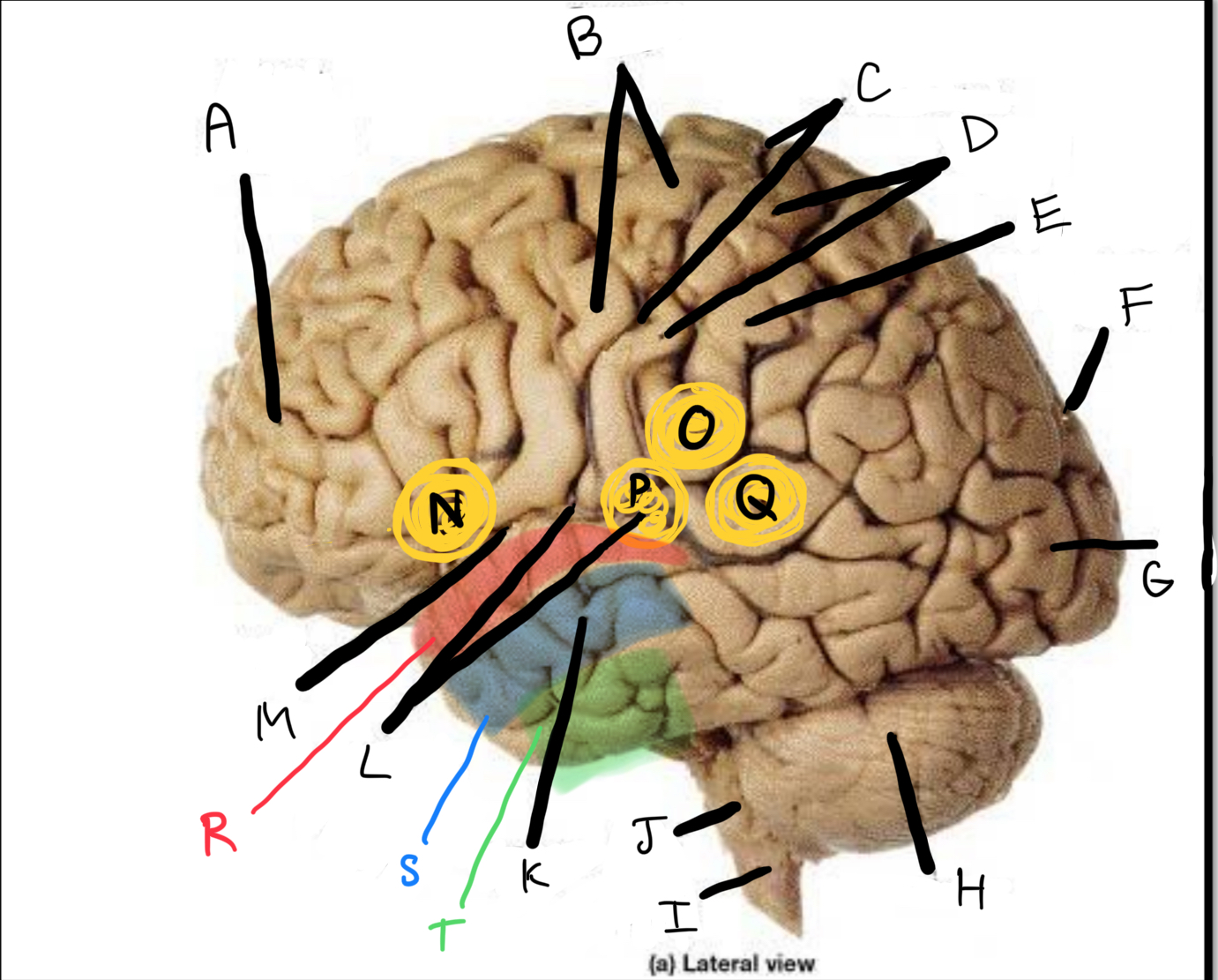
D
Postcentral gyrus
- (sensory) Touch, Temperature, Pressure, Pain, Proprioception
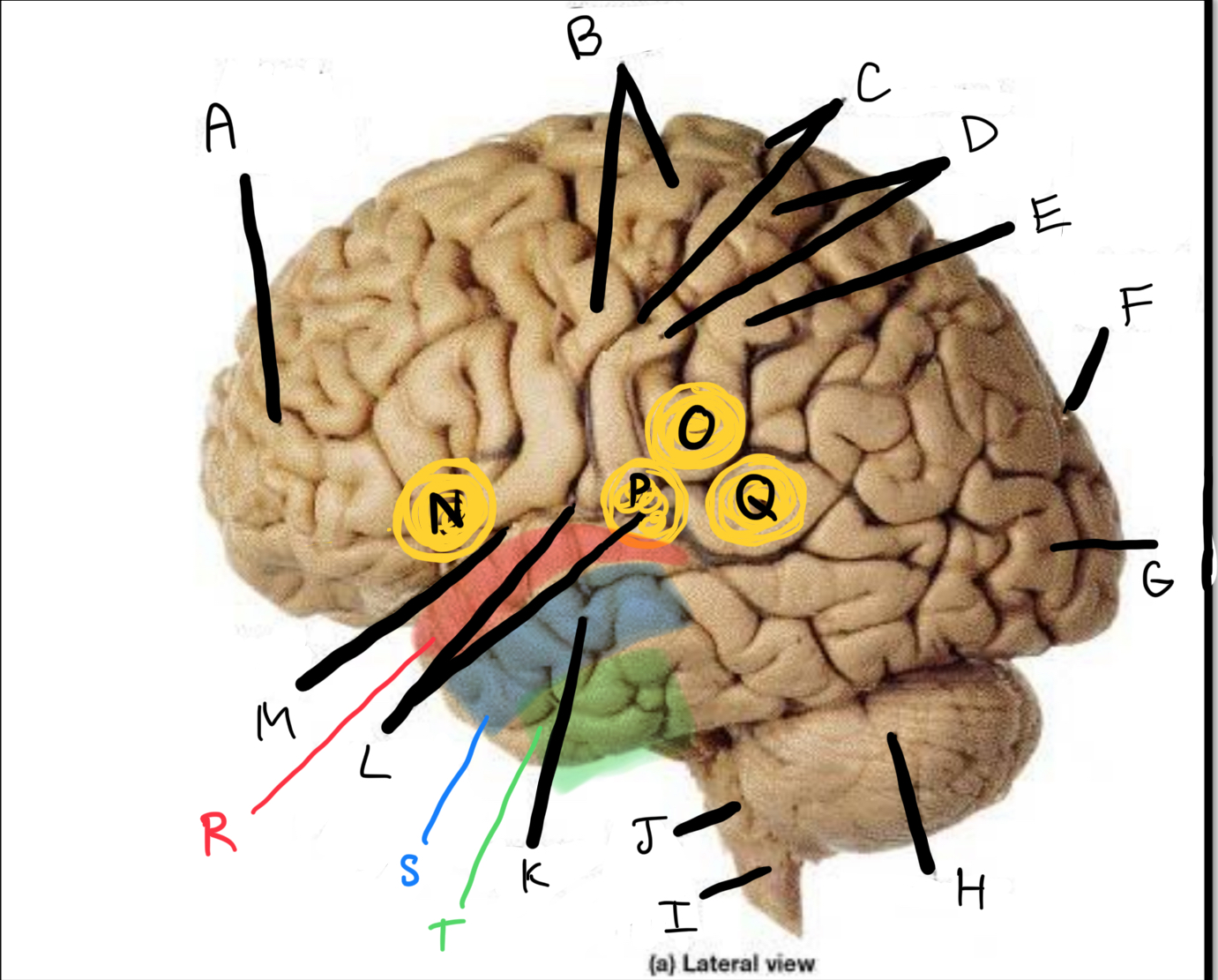
E
Parietal lobe
Touch, Temperature, Pressure, Pain, Proprioception
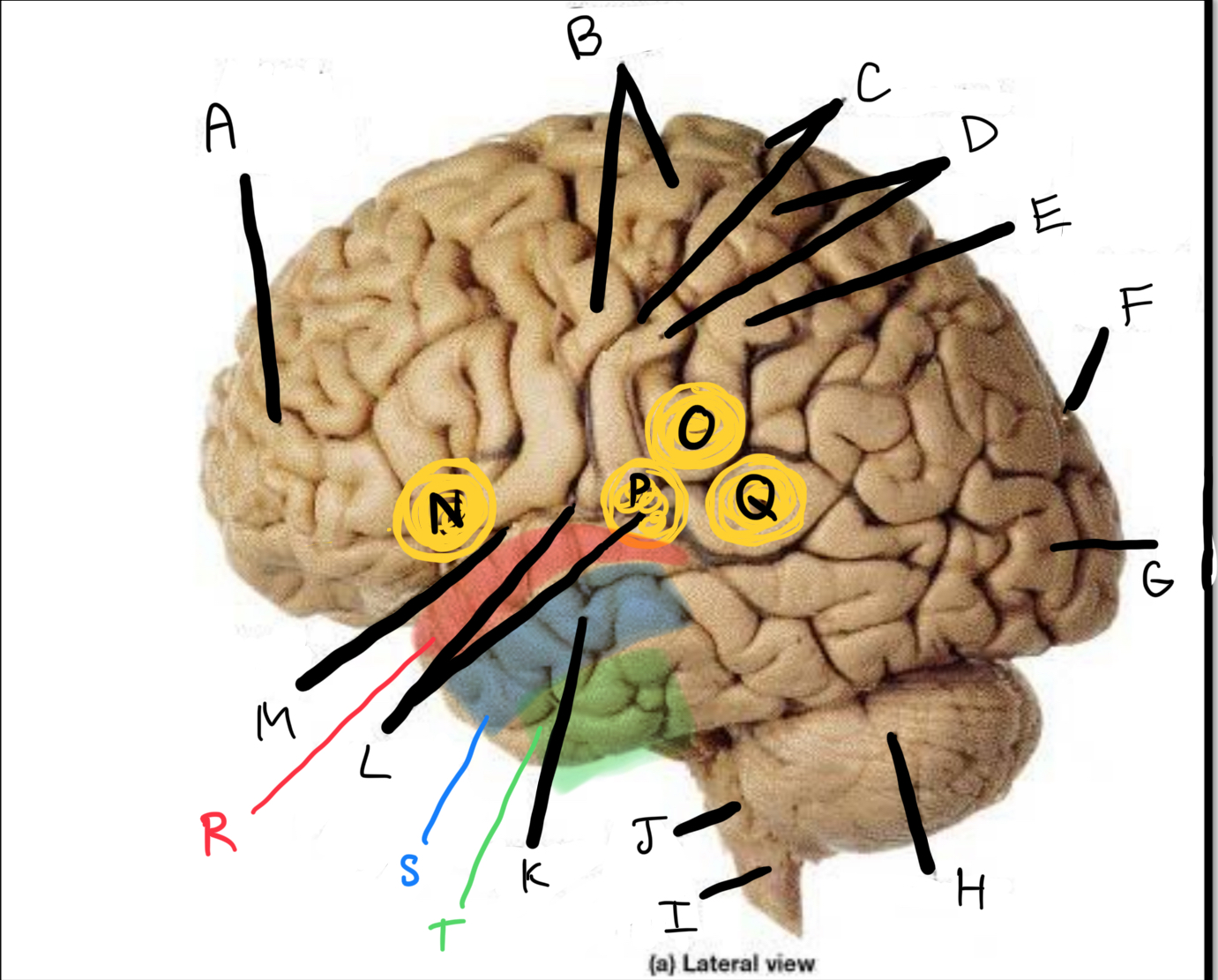
F
Parieto-occipital sulcus
Separates occipital and parietal lobes
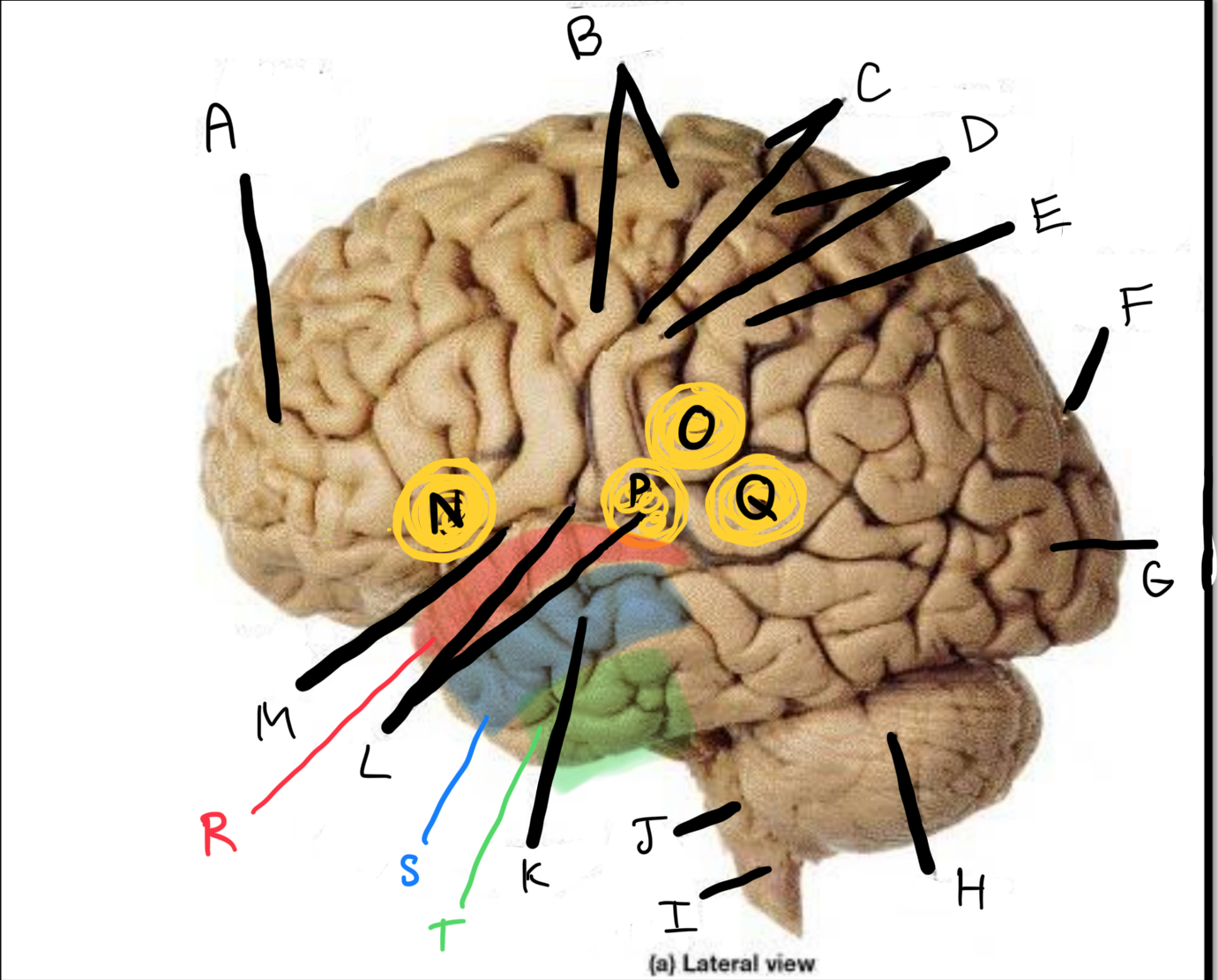
G
Occipital lobe
Visual
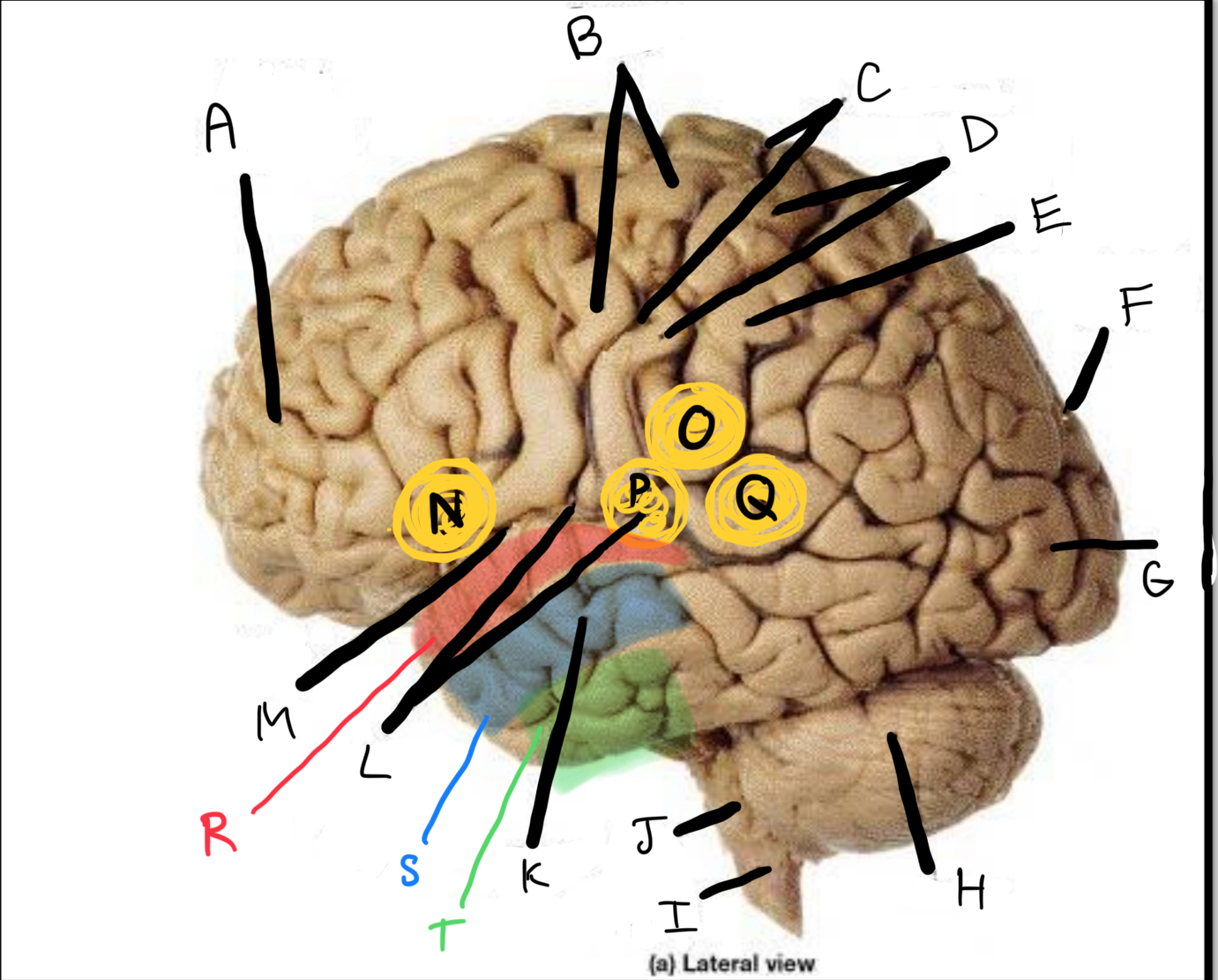
H
Cerebellum
coordination
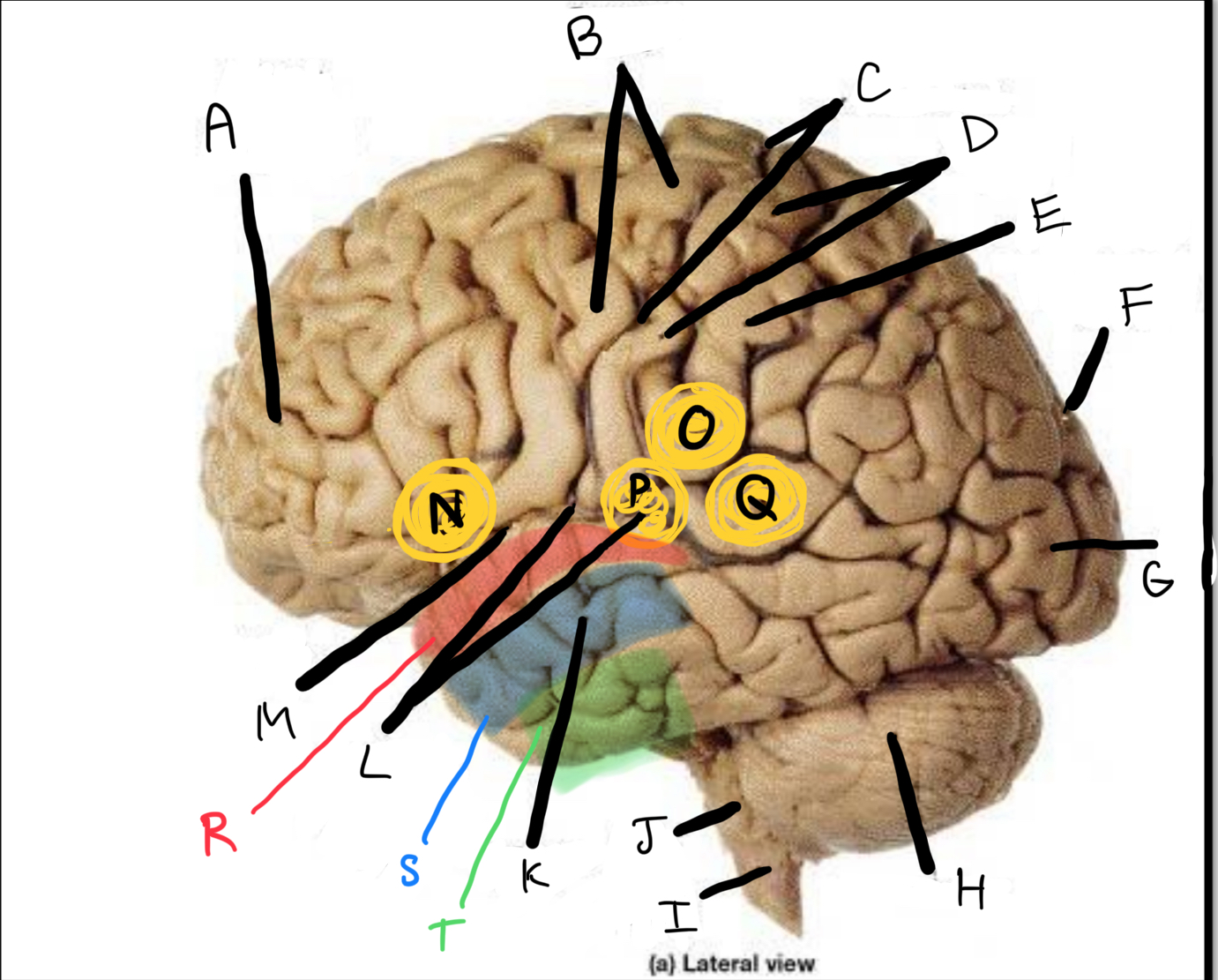
I
Medulla
Breathing, Heart Rhythm, Blood Flow, O2
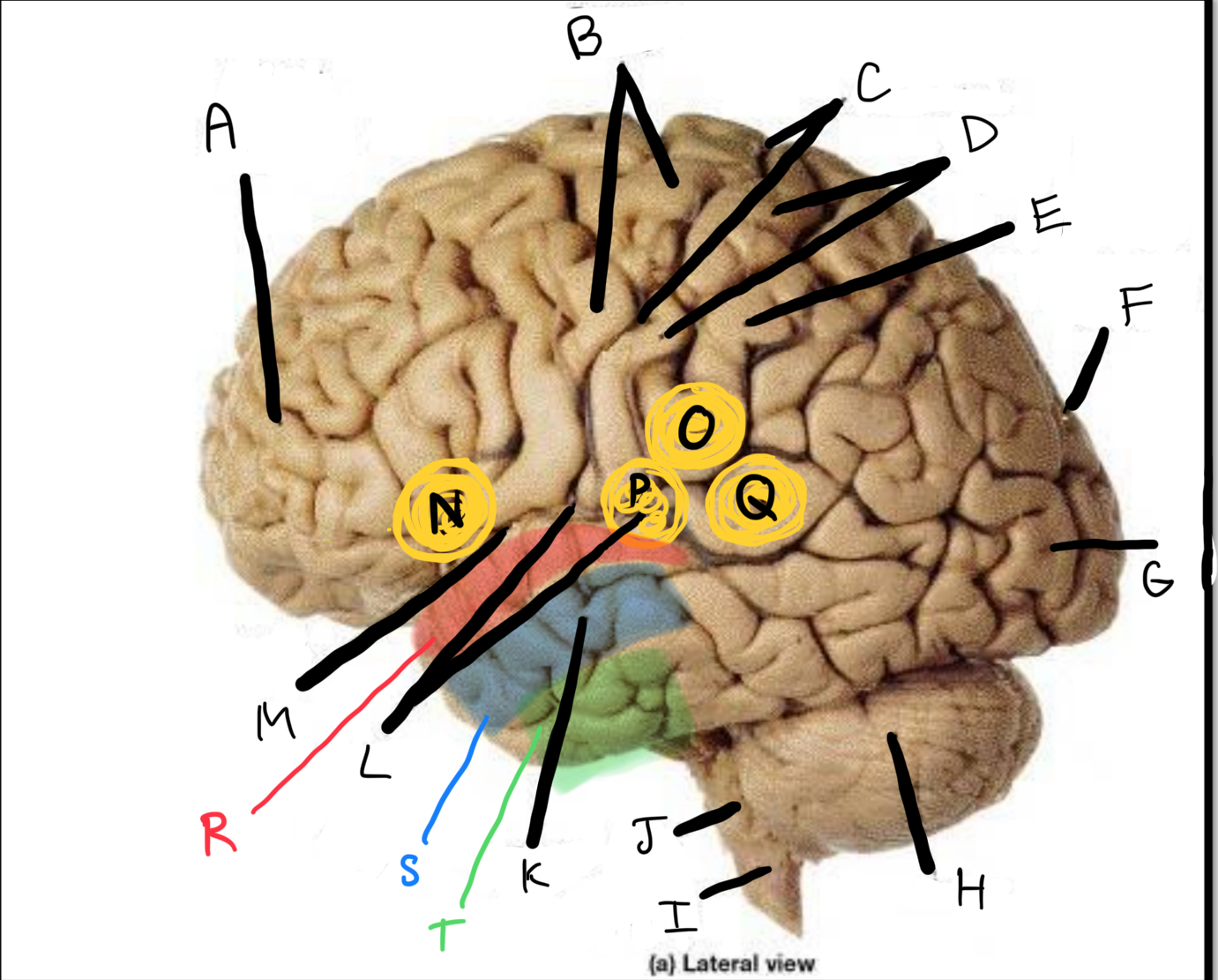
J
Pons
- unconscious movement and processes
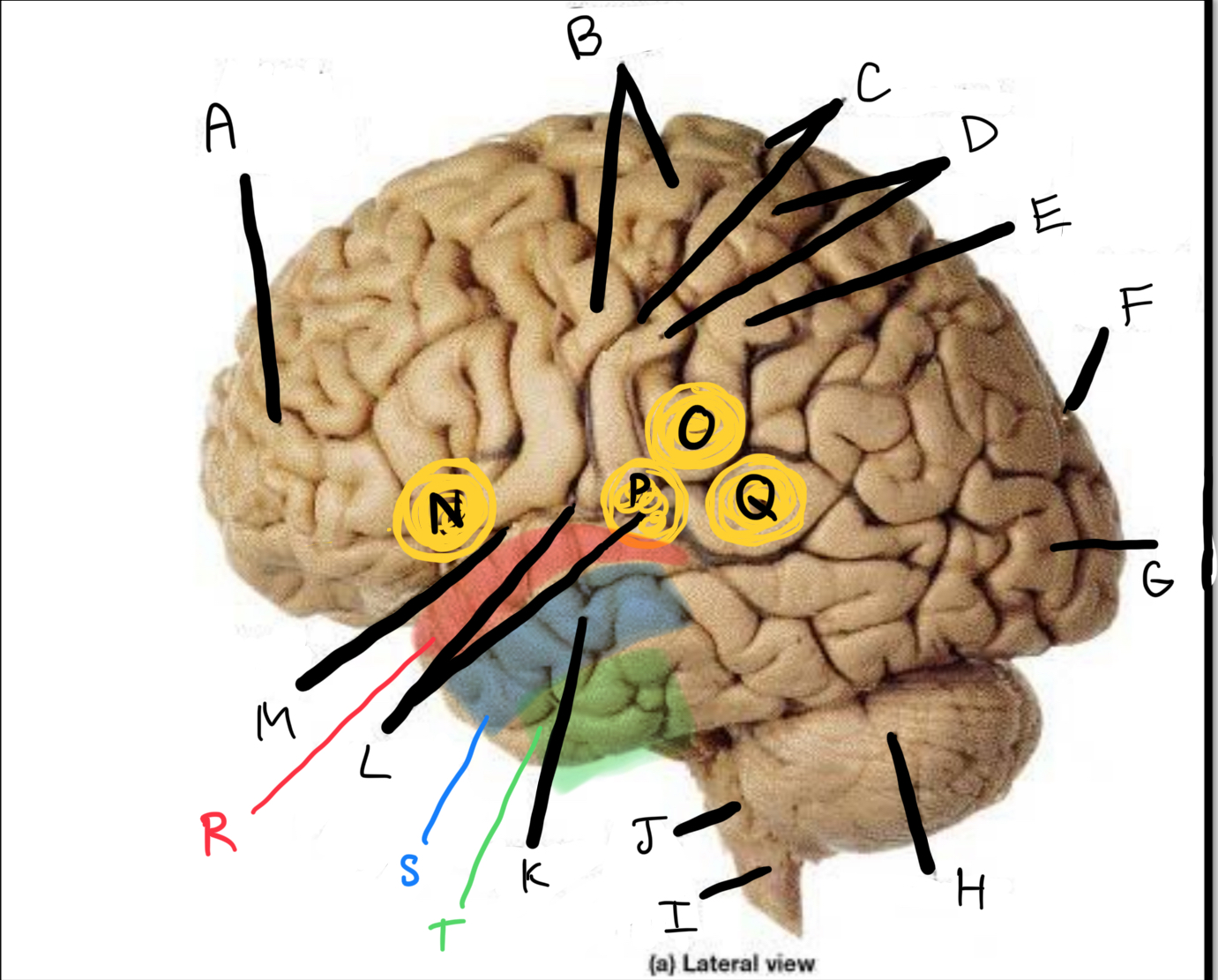
K
Temporal lobe
Comprehension
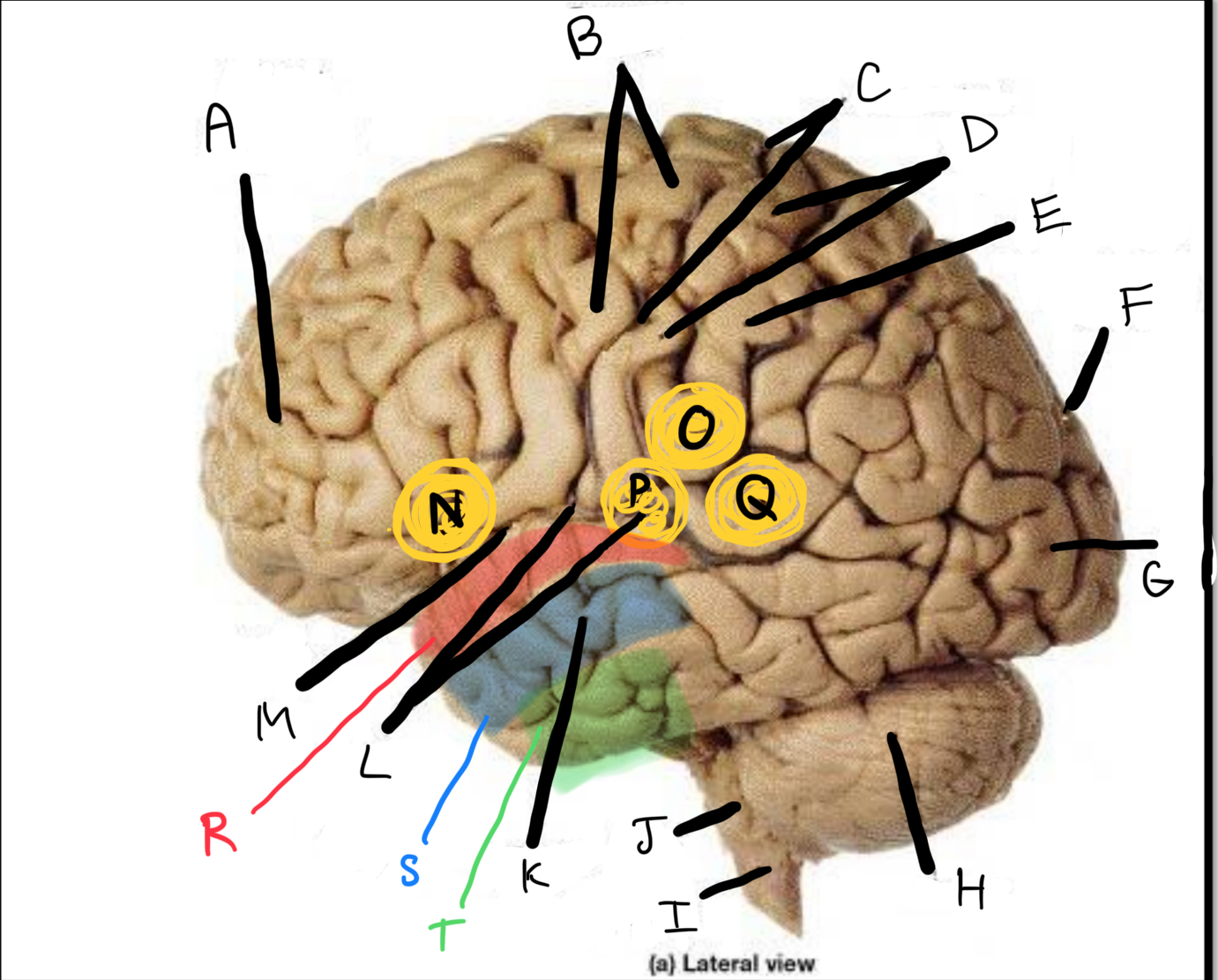
L
Branches middle cerebral artery emerging
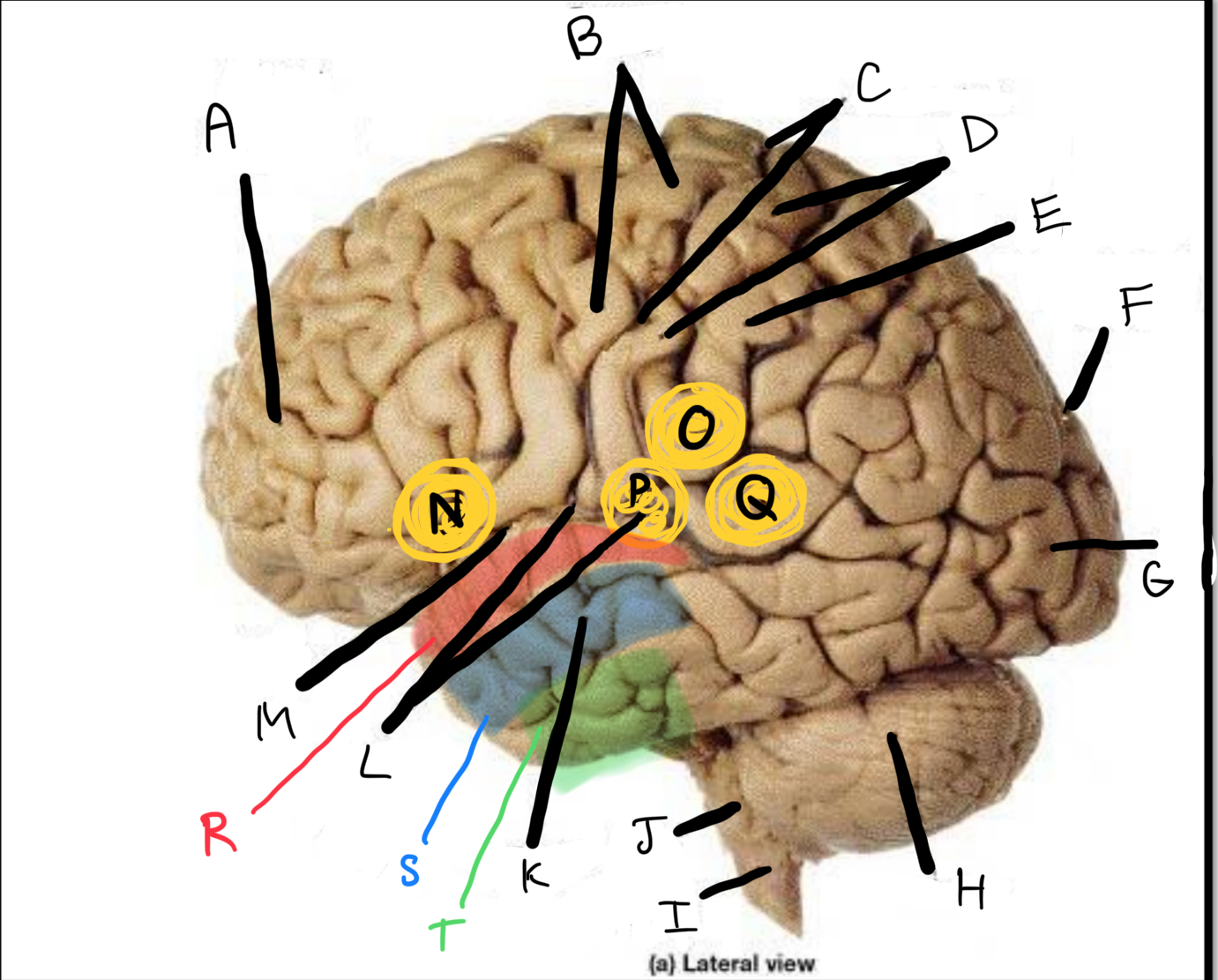
M
Lateral sulcus (sylvian fissure)
Separates temporal lobe from parietal/occipital
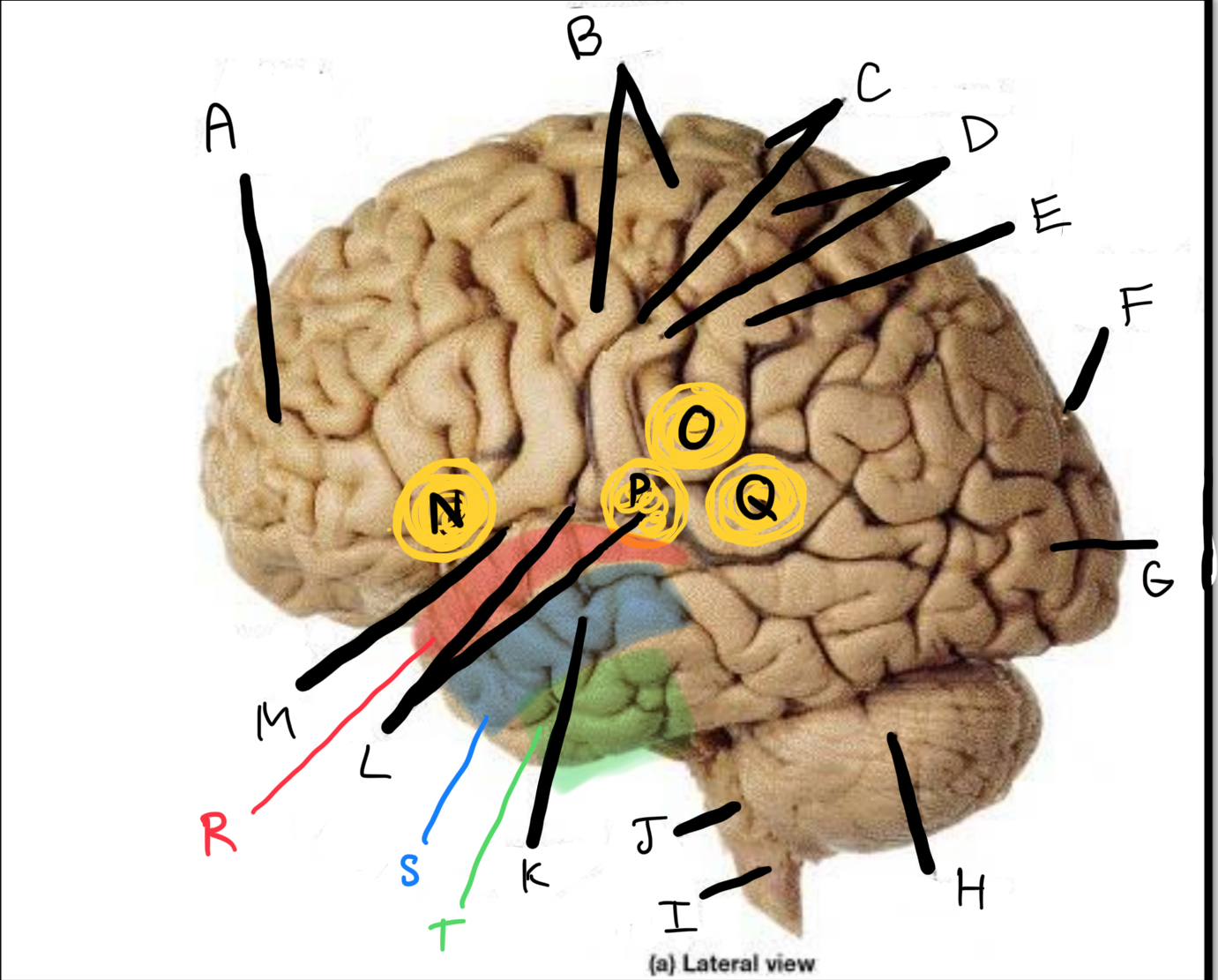
N
Broca’s Area
Speech production

O
Supramarginal Gyrus
receive input from auditory and visual cortices, performs complex perceptual discrimination/integrations
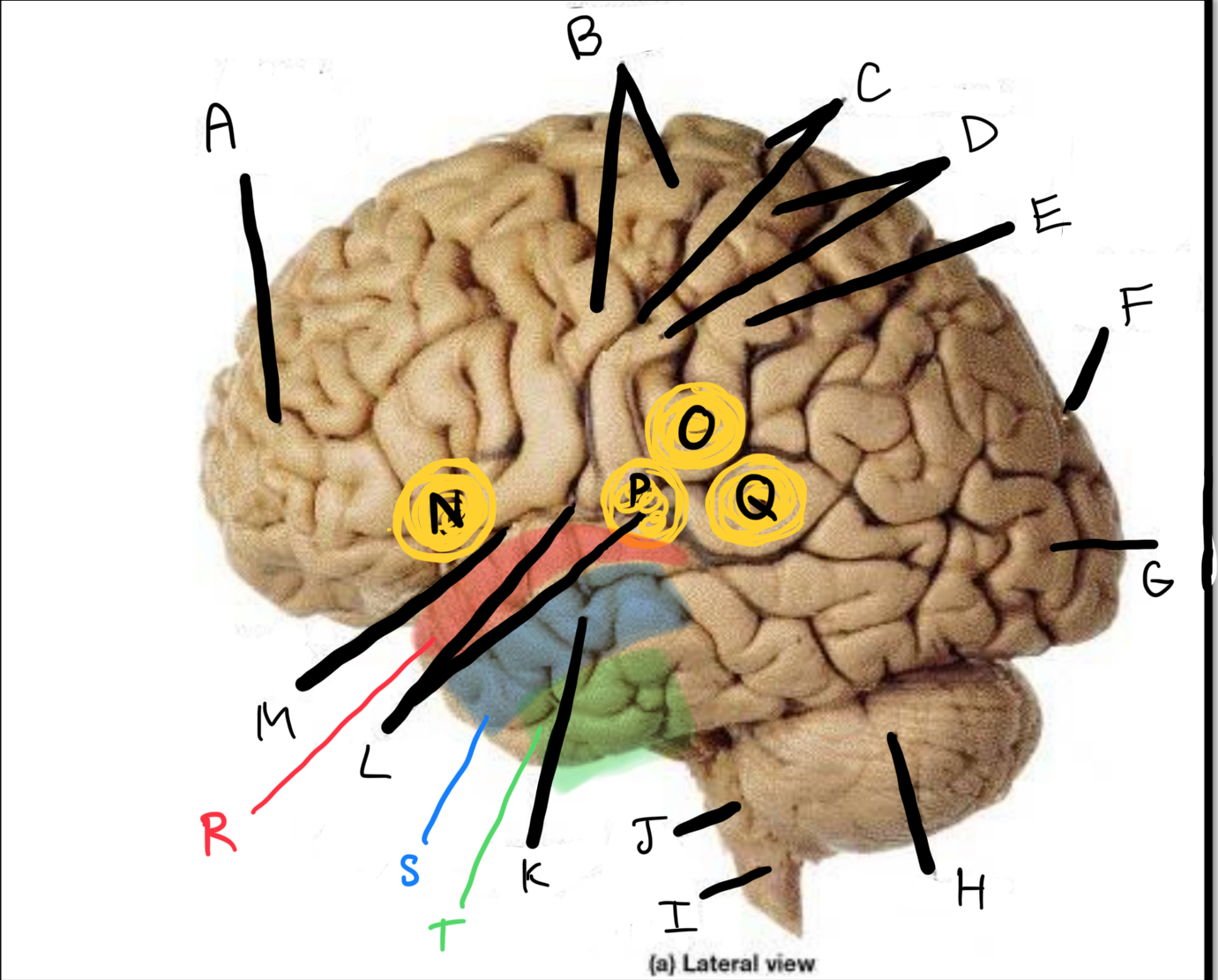
P
Wernicke’s Area
Comprehension of spoken language
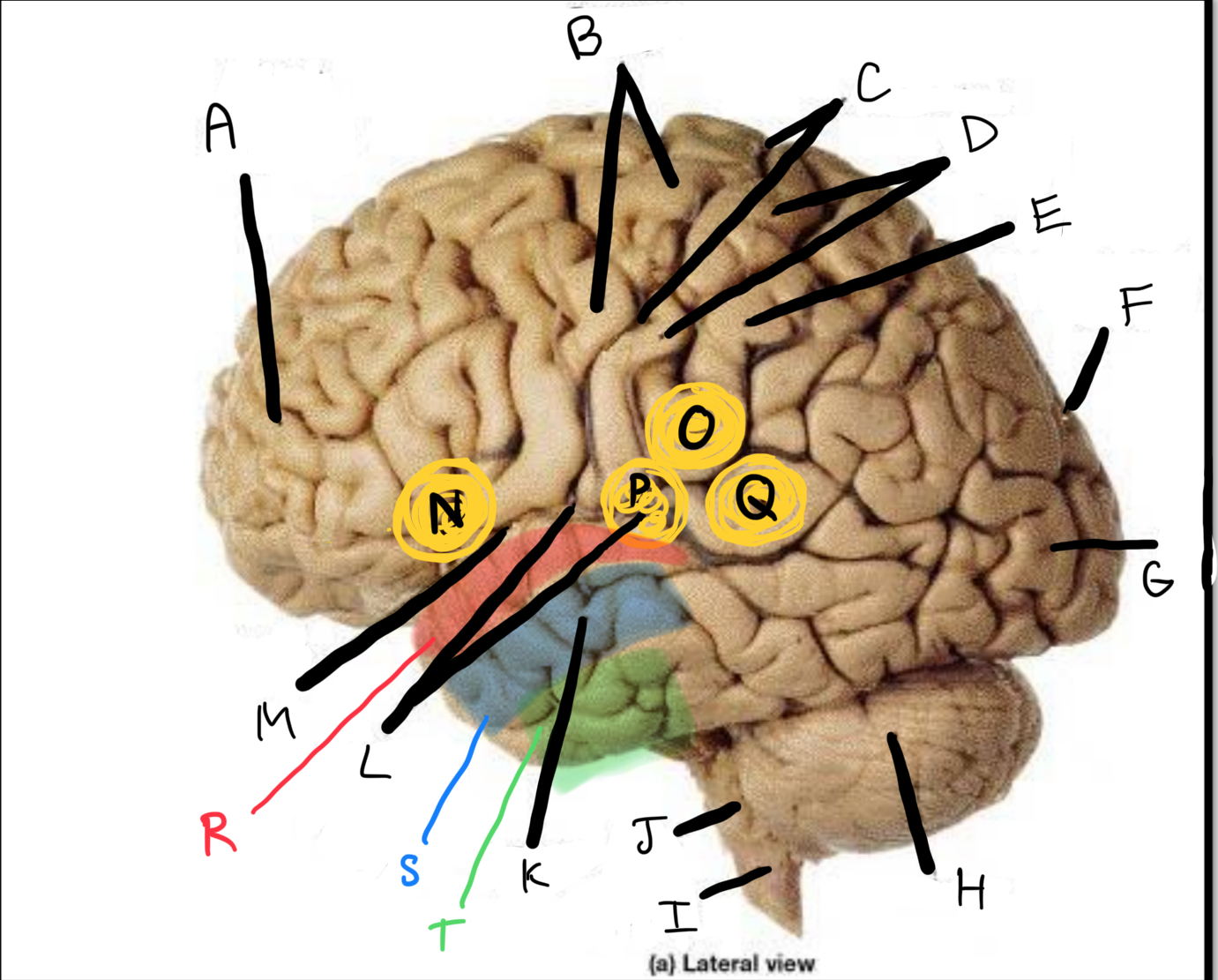
Q
Angular gyrus
receive input from auditory and visual cortices, performs complex perceptual discrimination/integrations
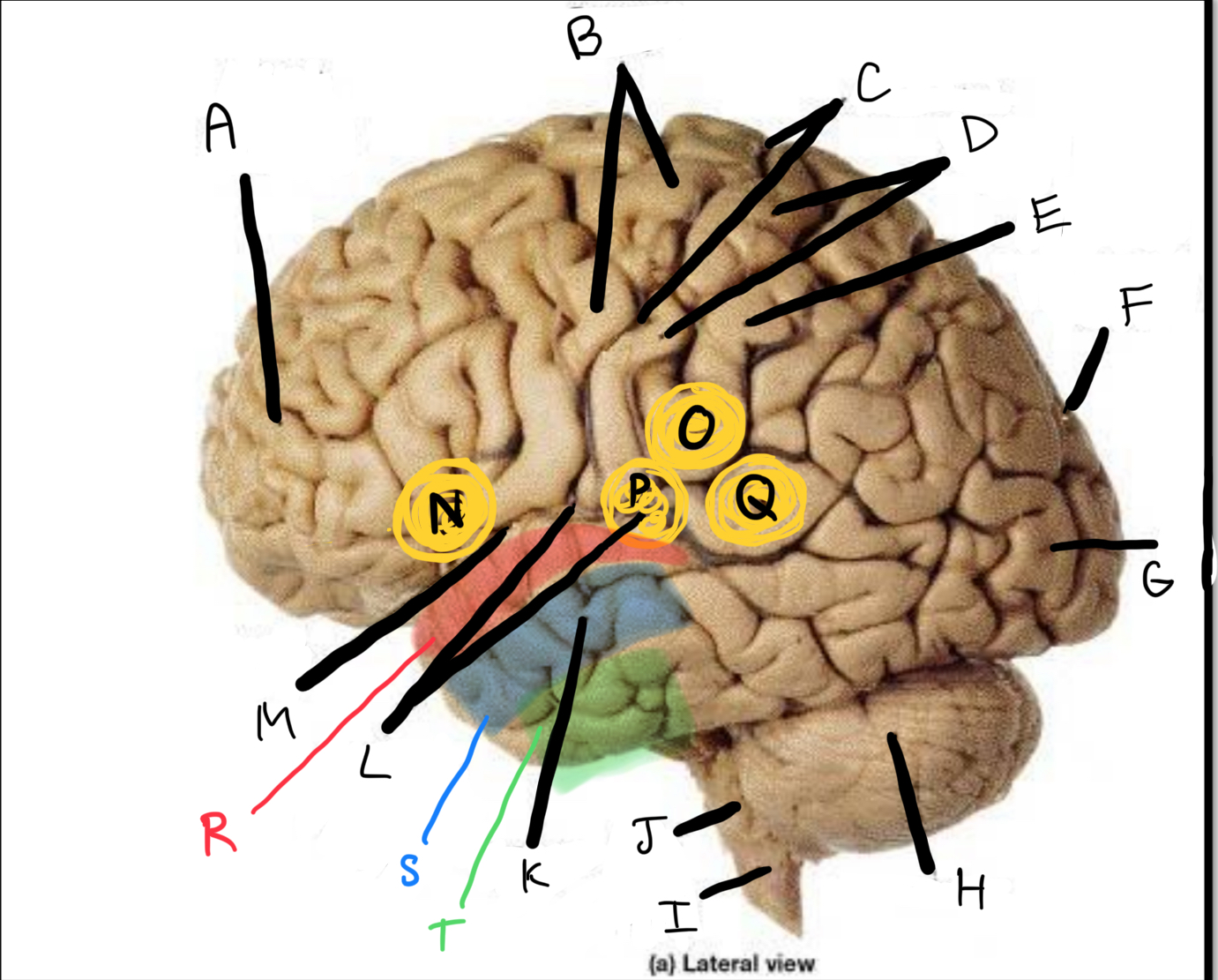
What connects N———P
(frontal, temporal and parietal lobes to allow speech coordination that is comprehended)
arcuate fasciculus
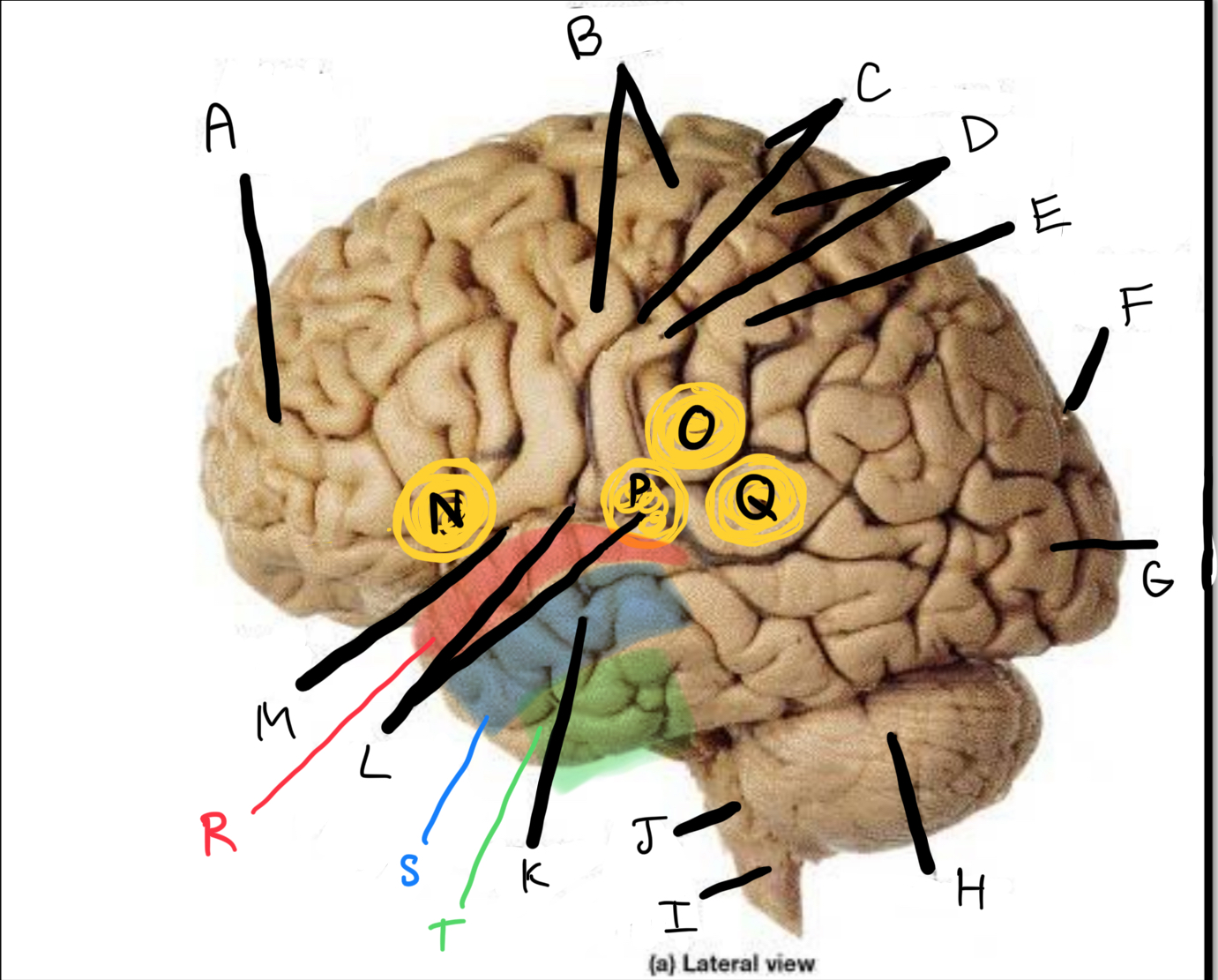
R
superior temporal gyrus
- auditory perception
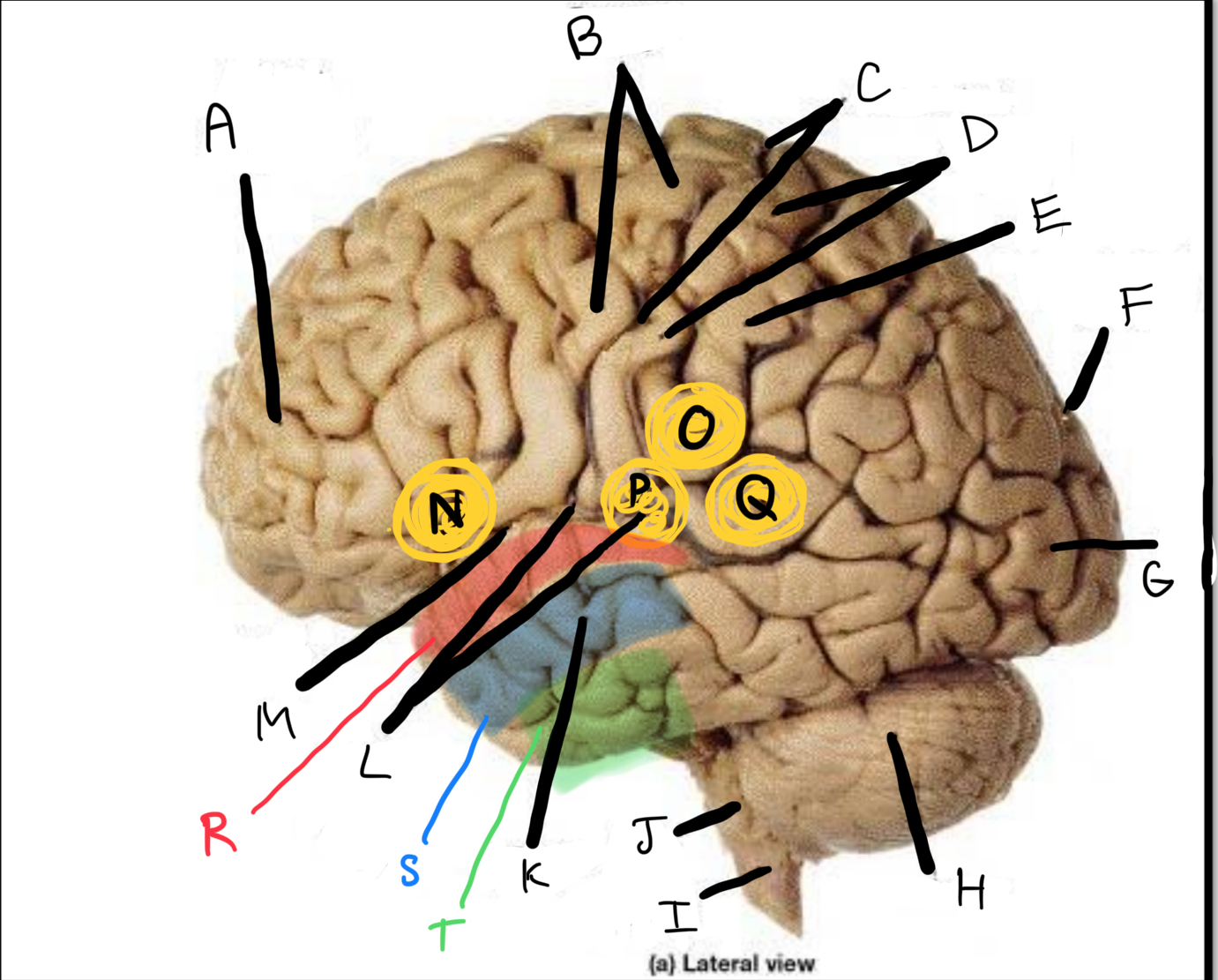
S
middle temporal gyrus
- detection objects
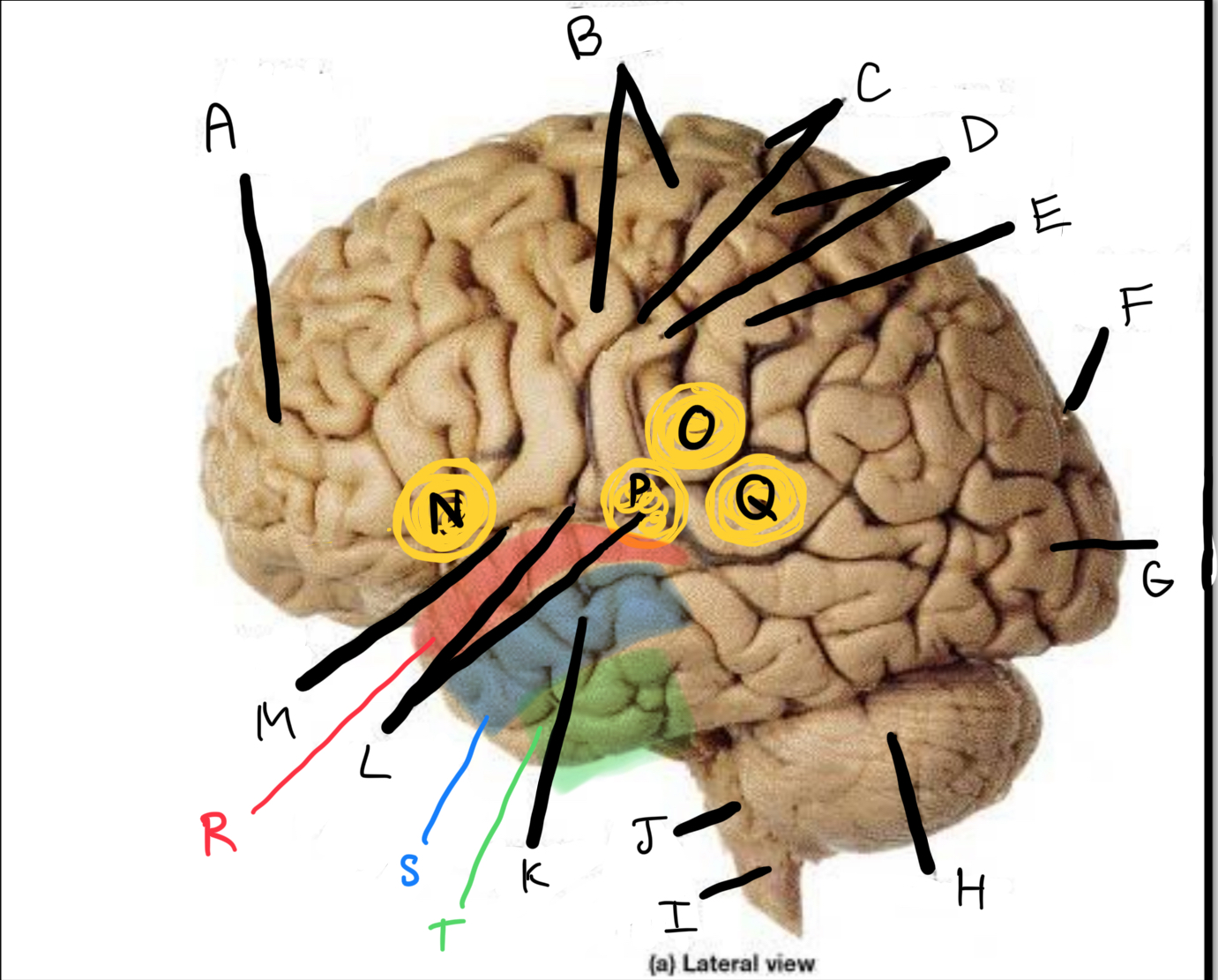
T
inferior temporal gyrus
face recognition
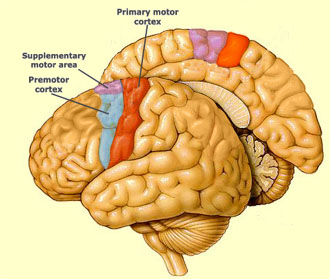
Supplementary motor area function?
decision making
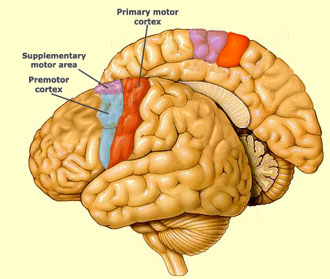
Premotor cortex function?
planning movements based on external stimuli